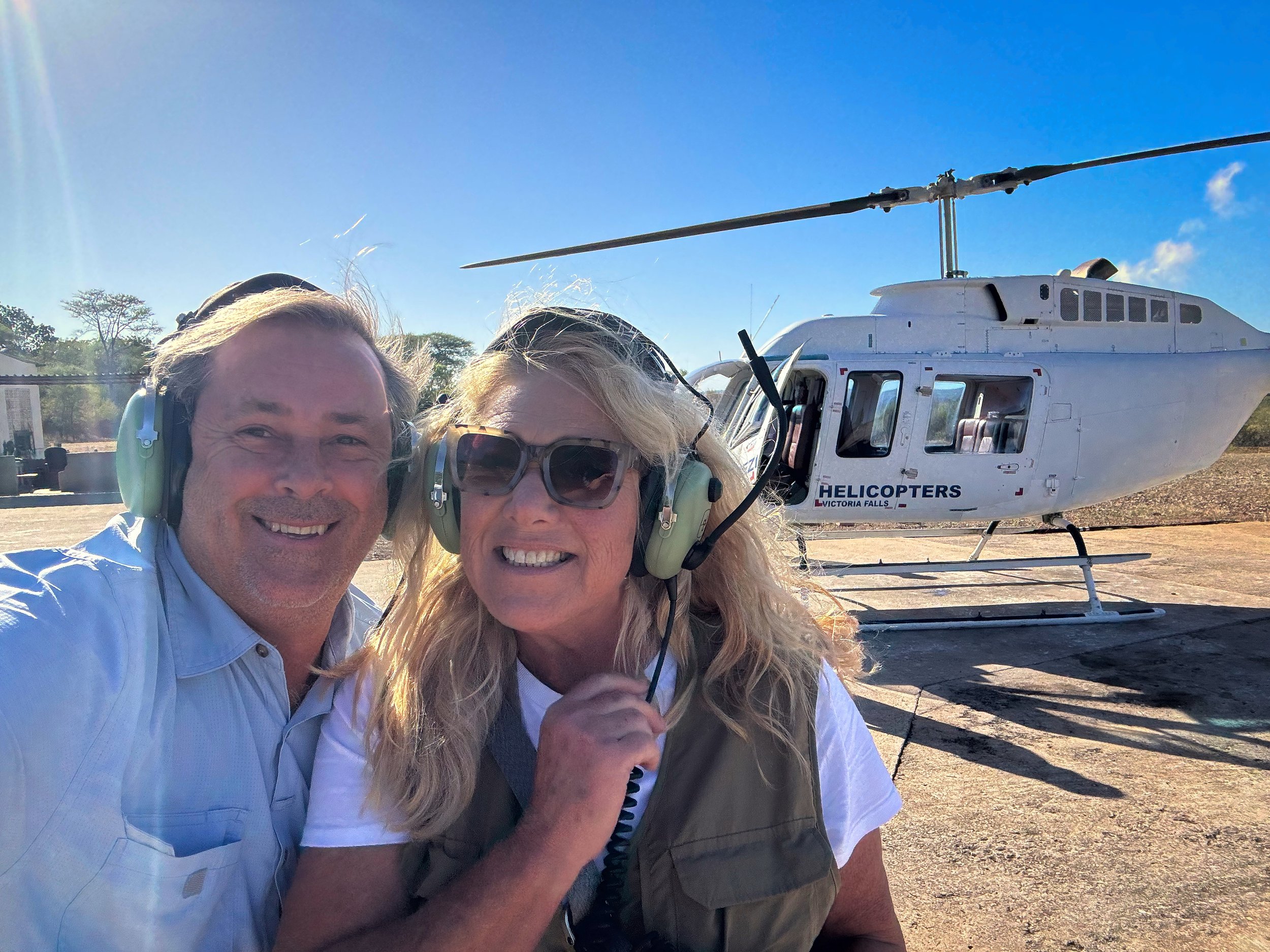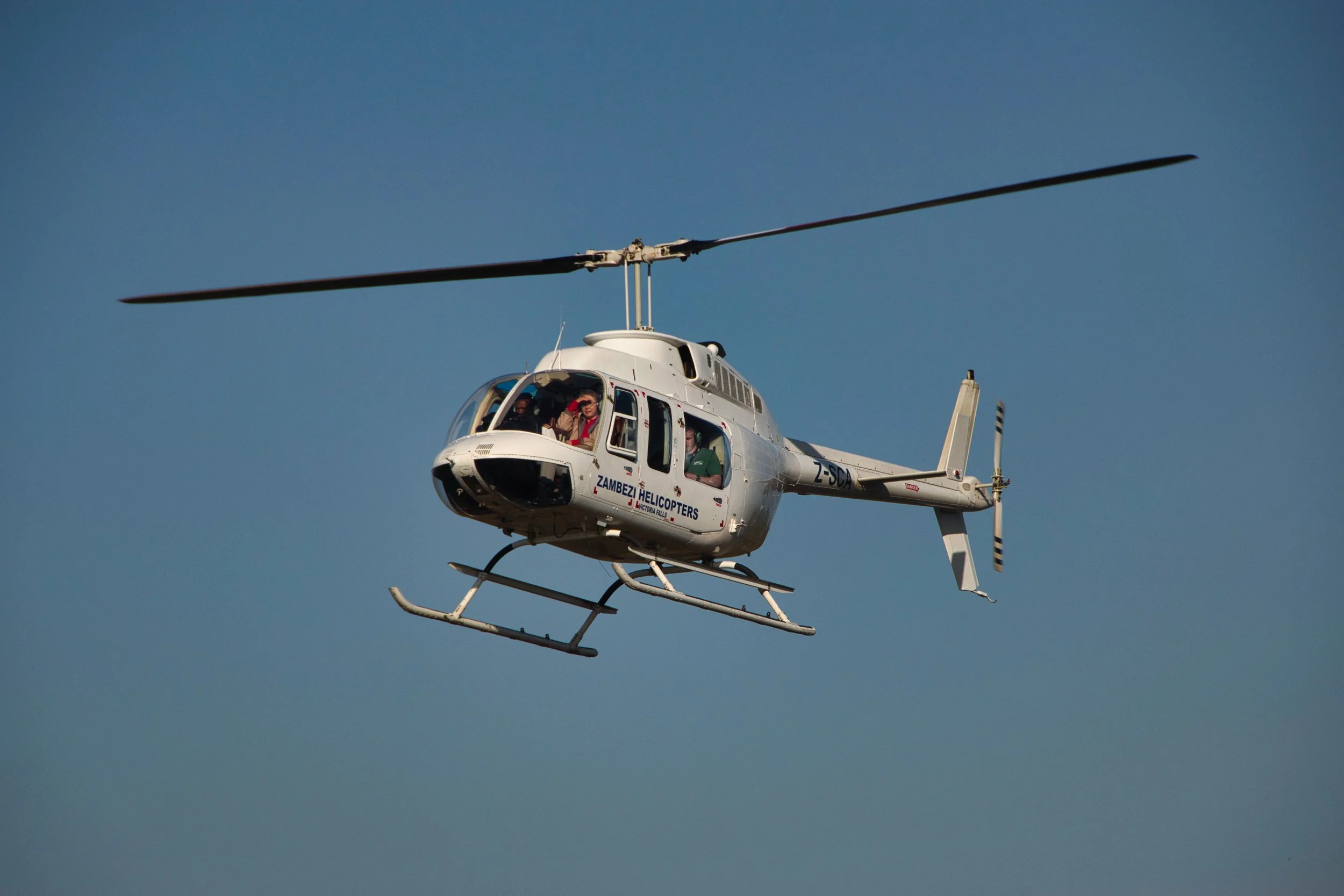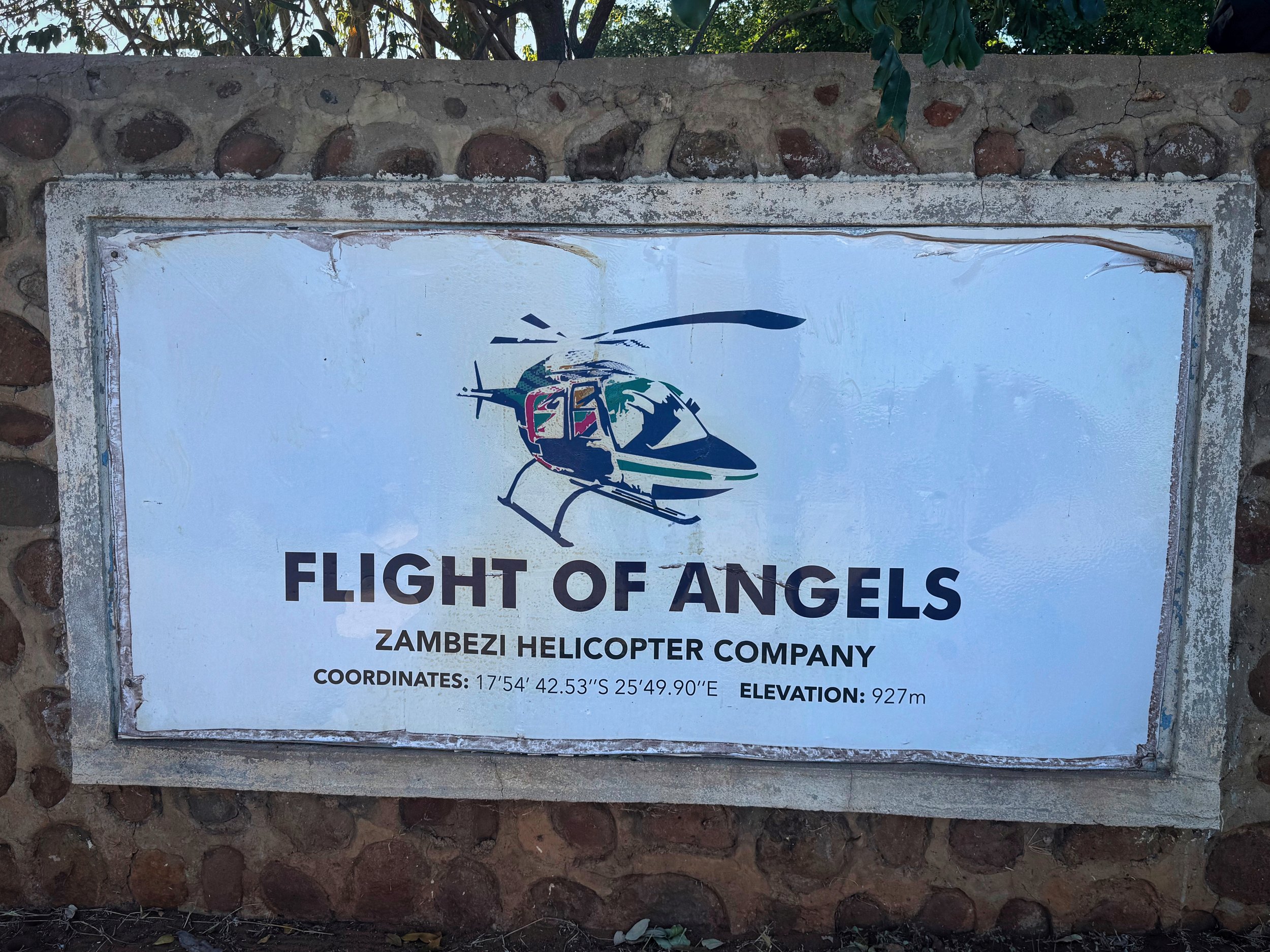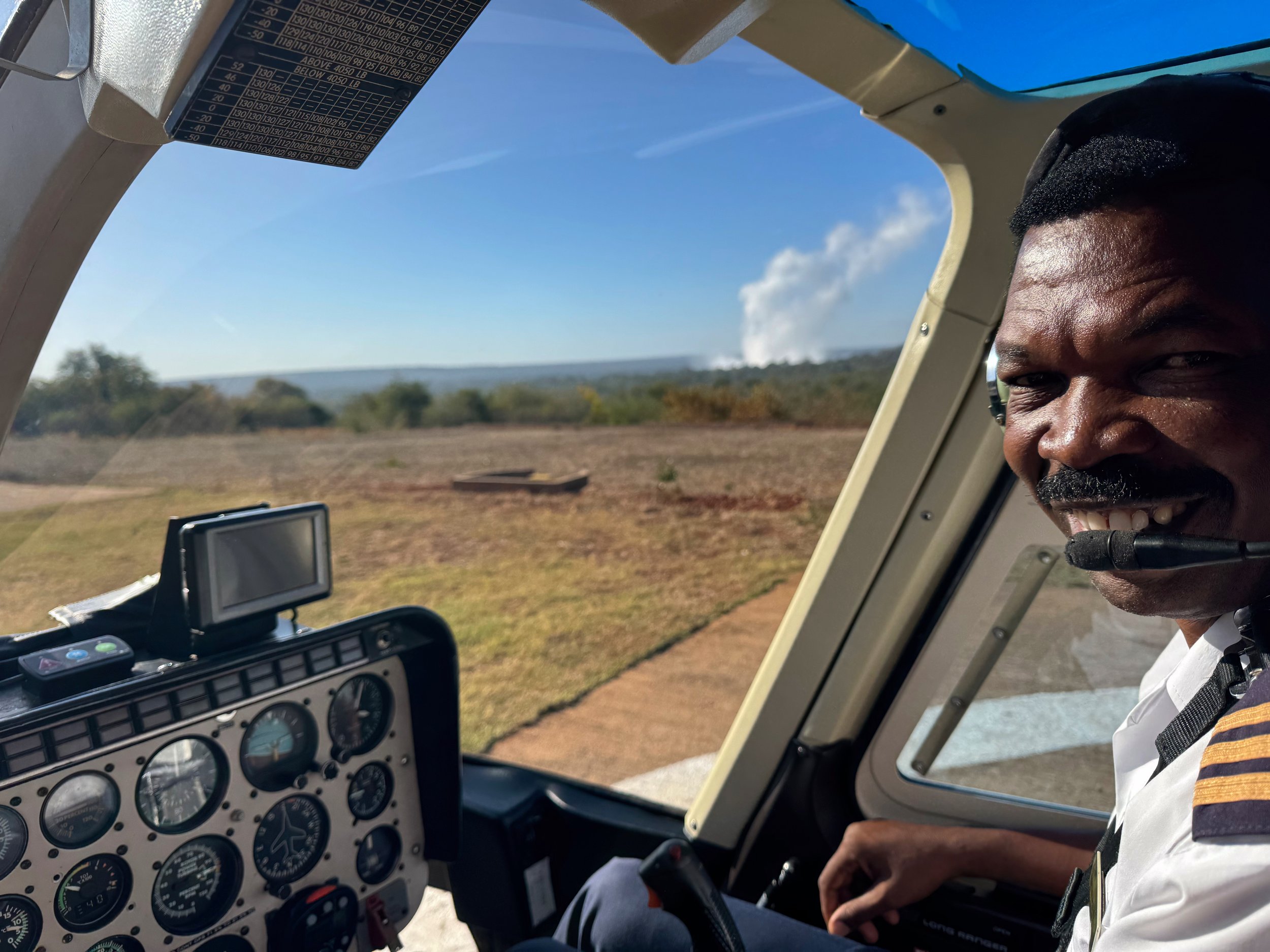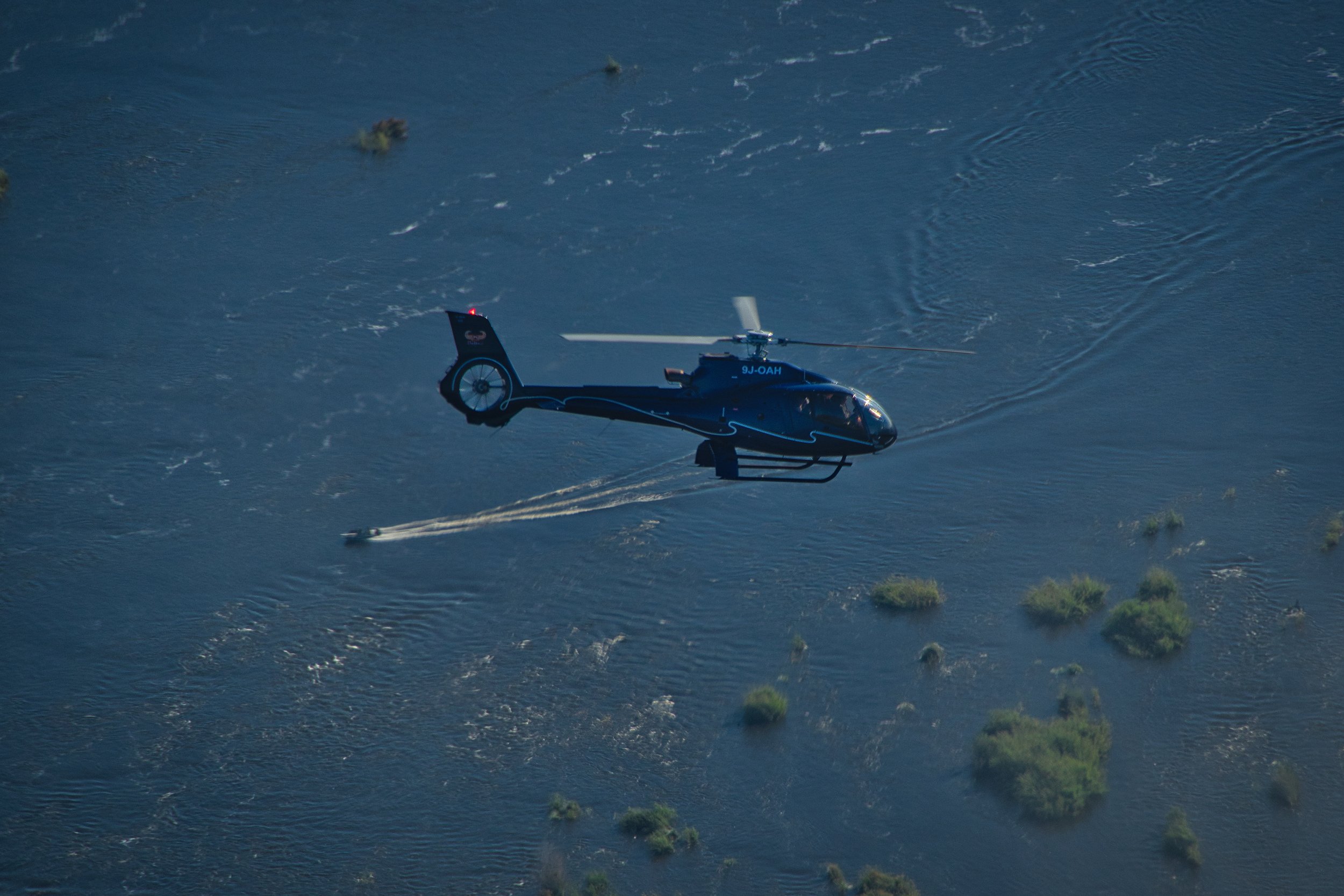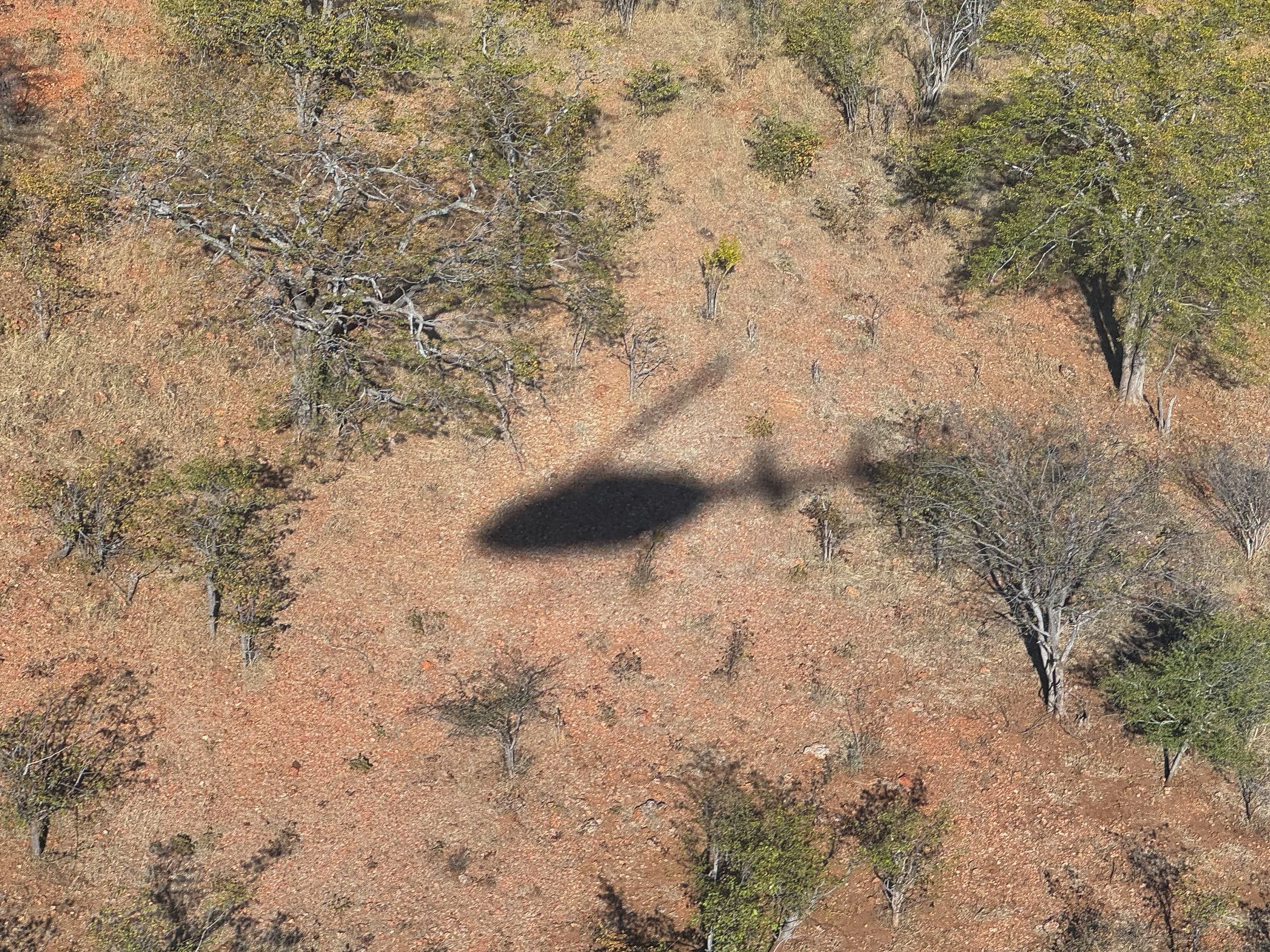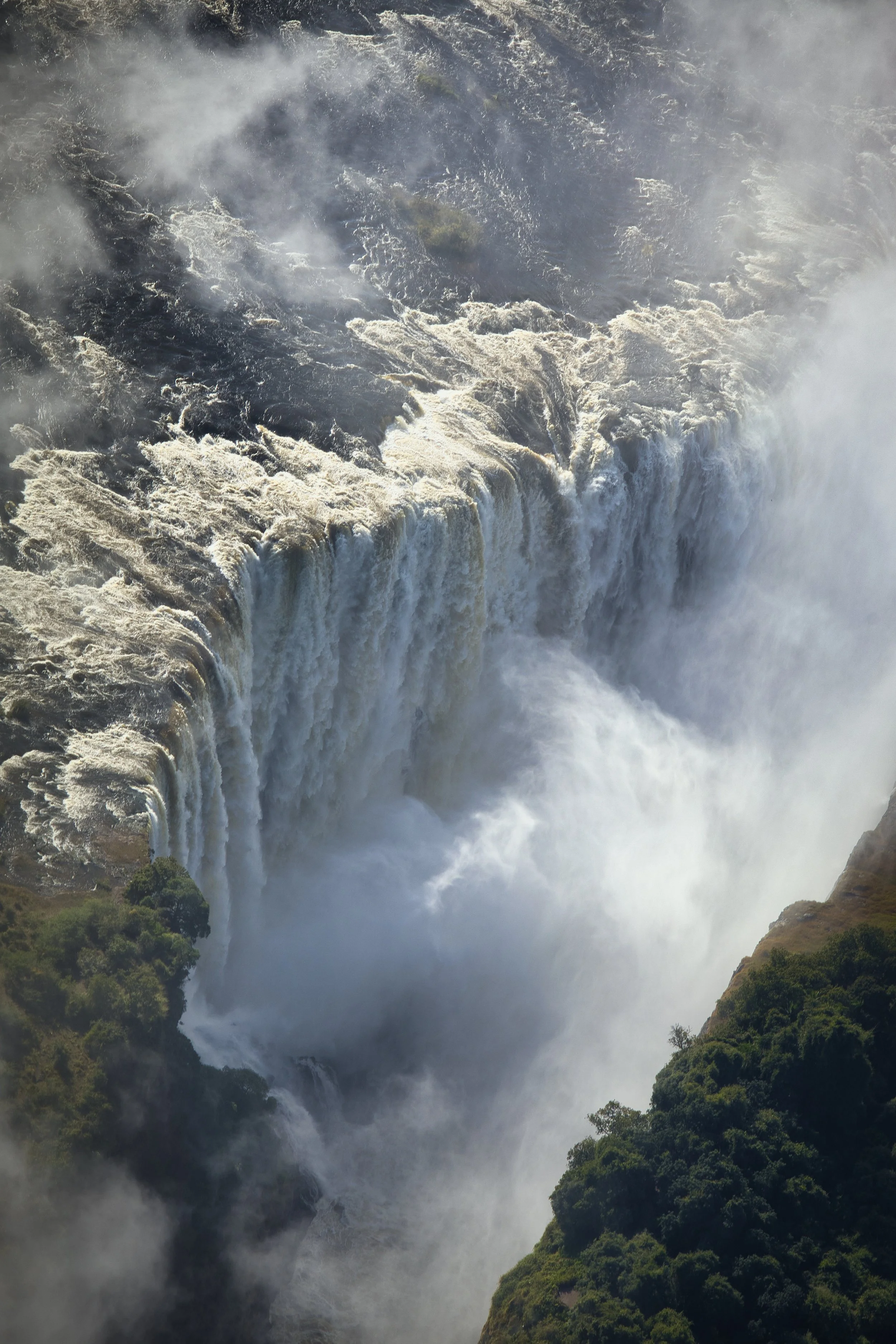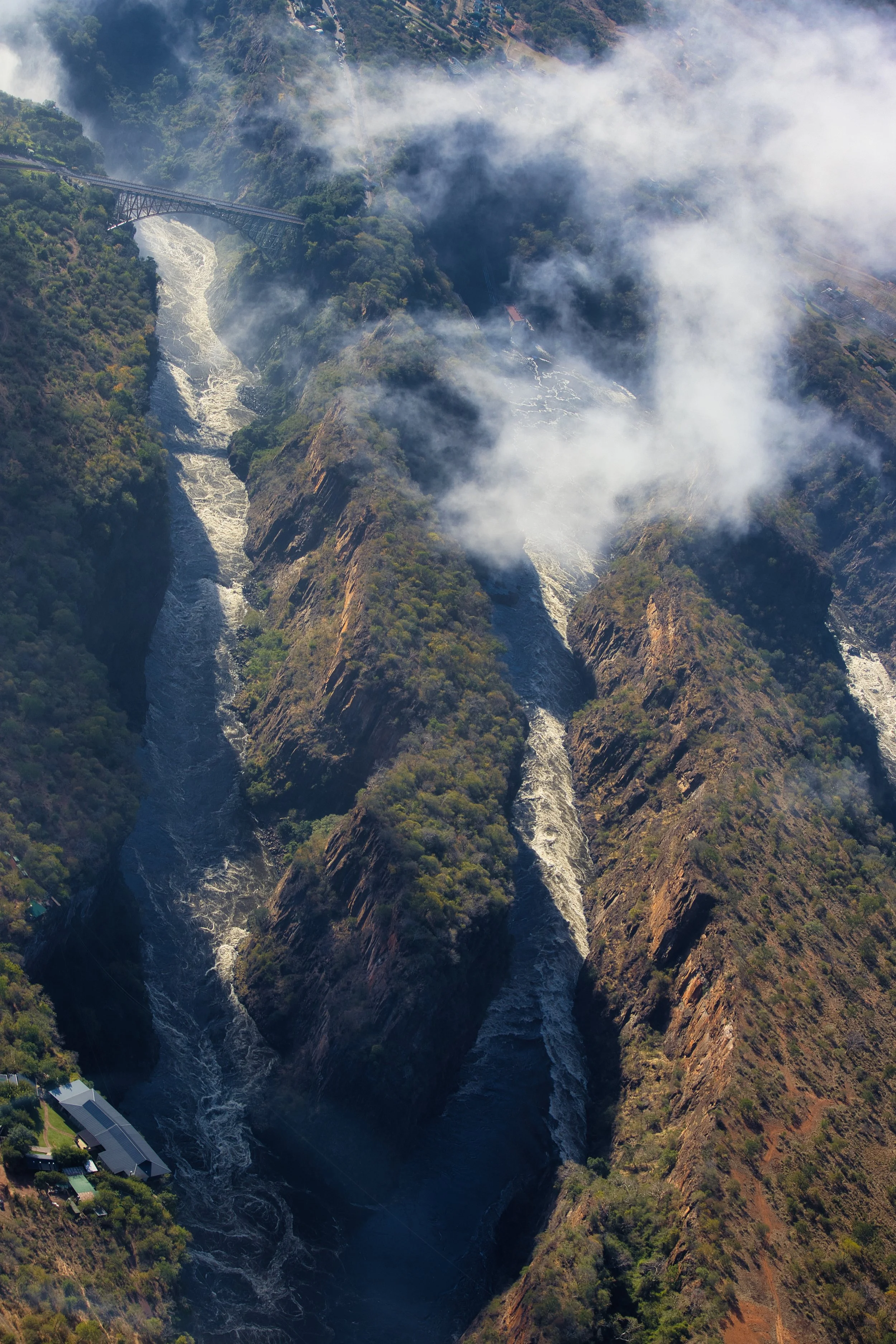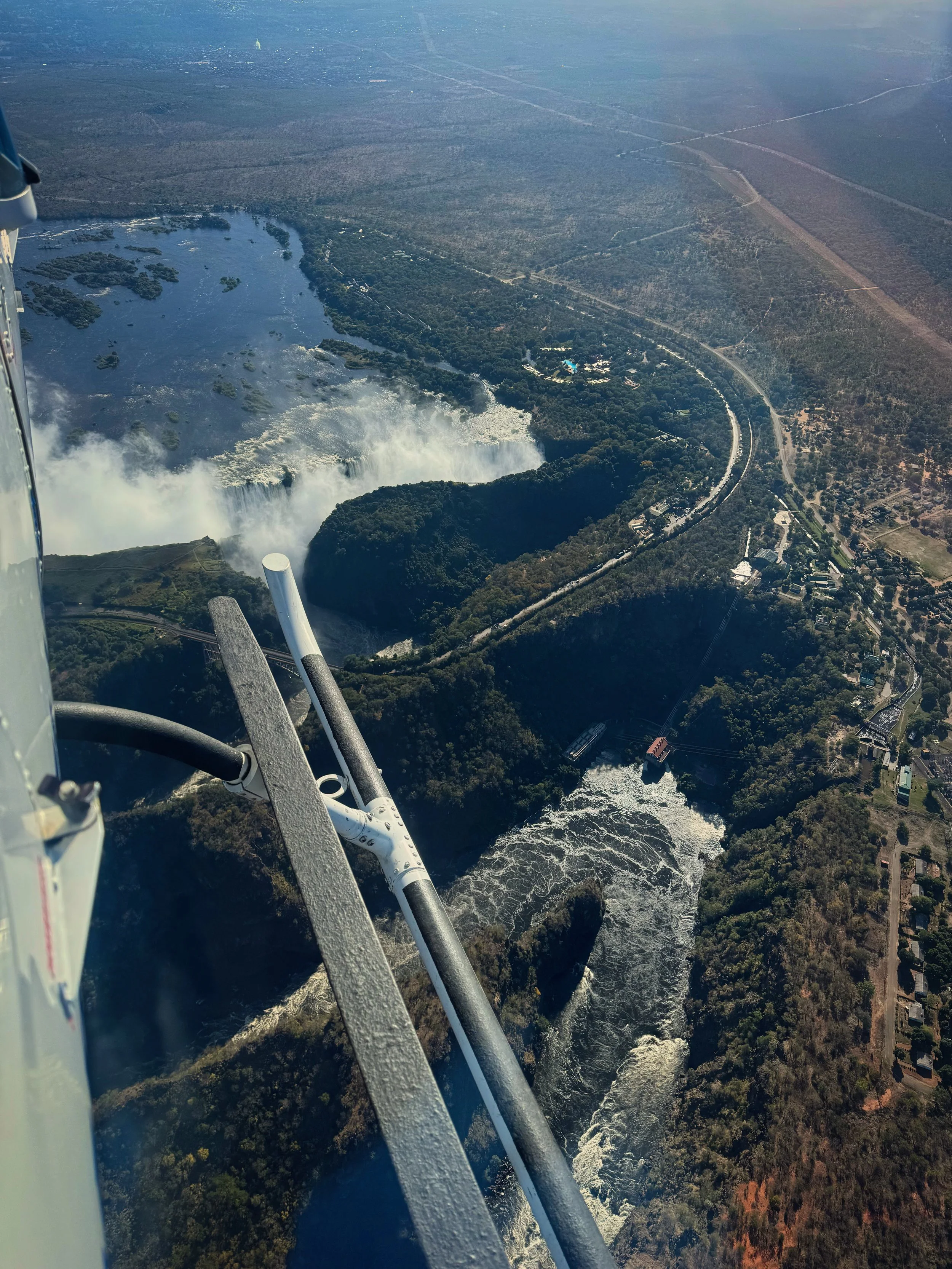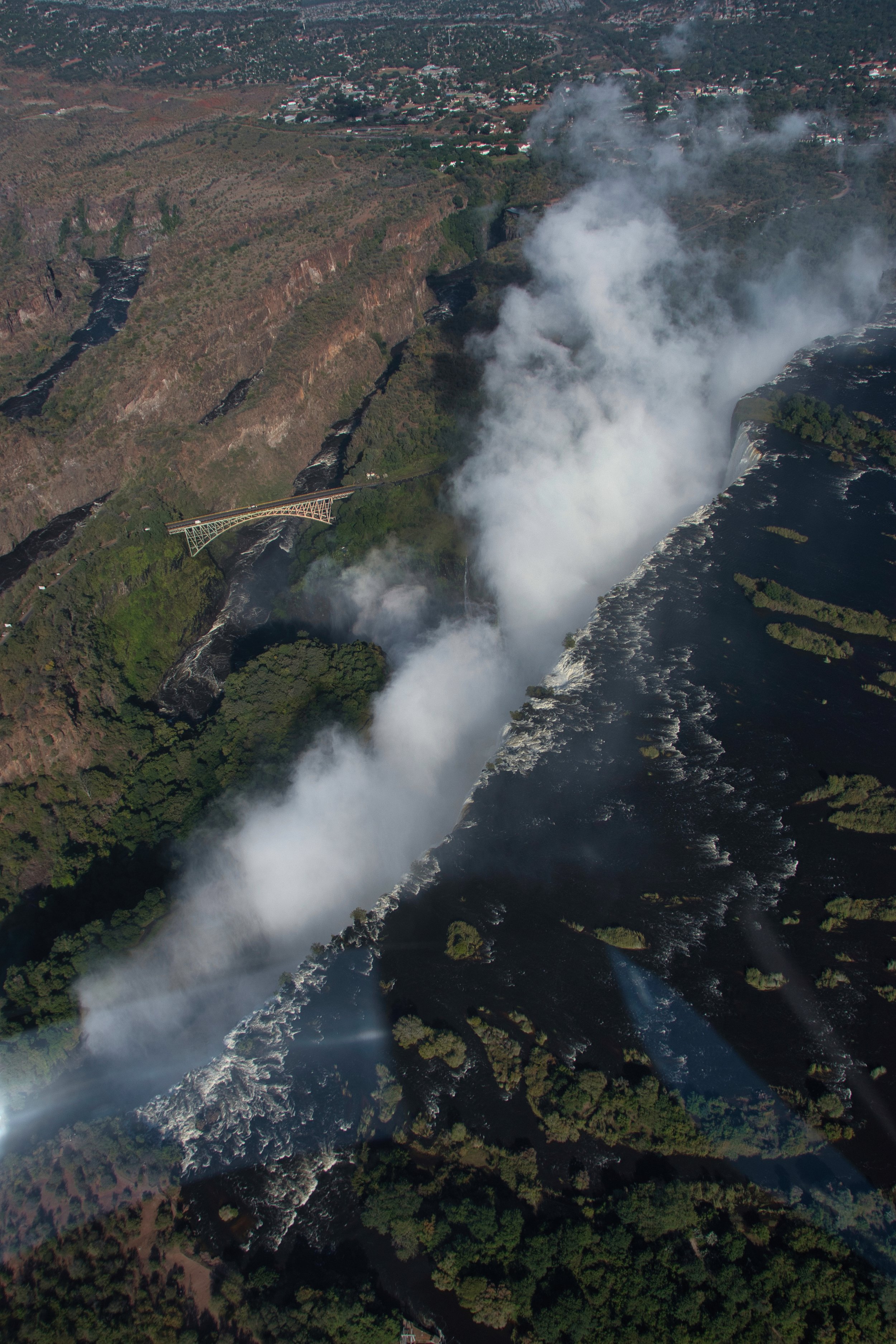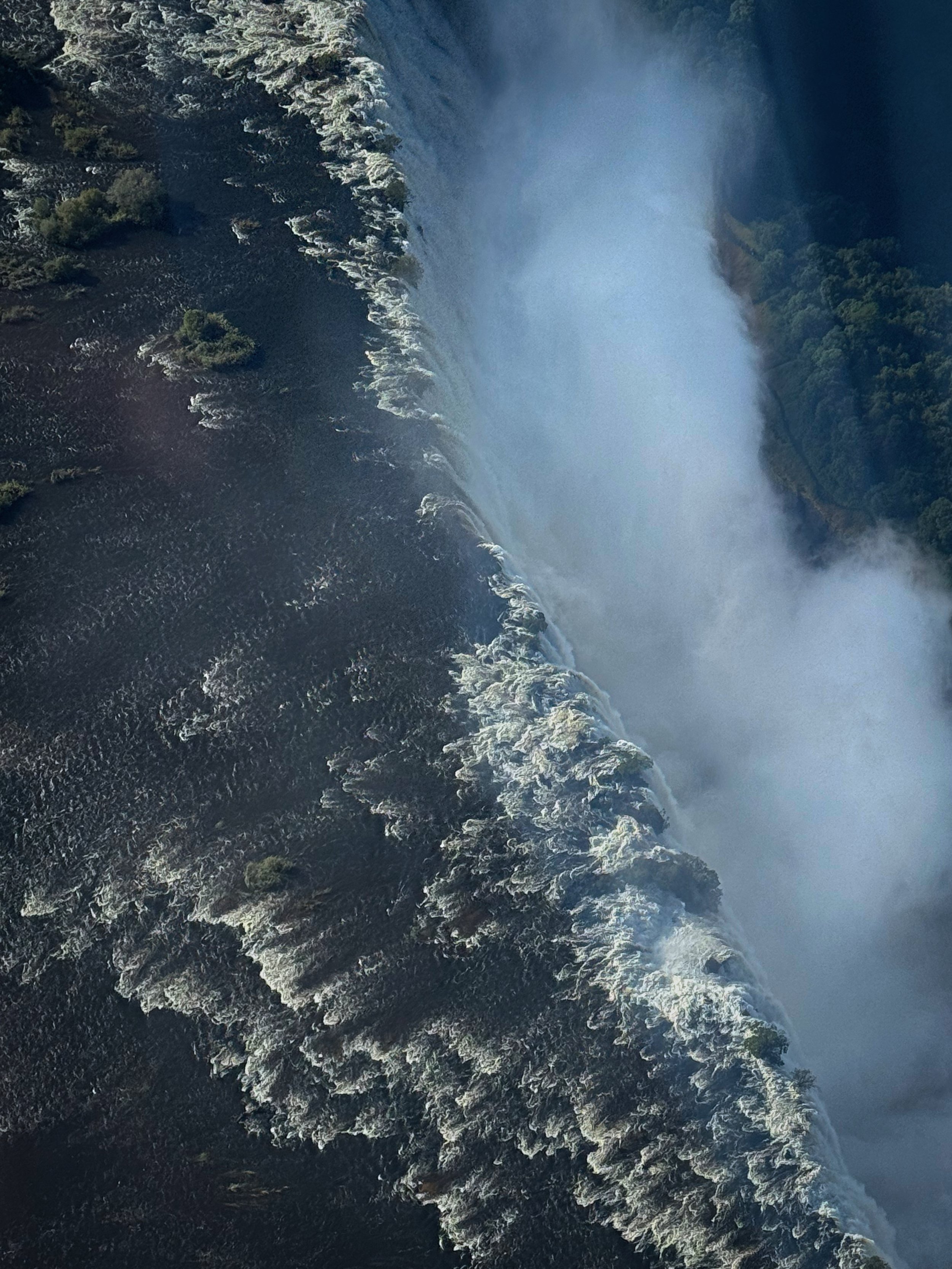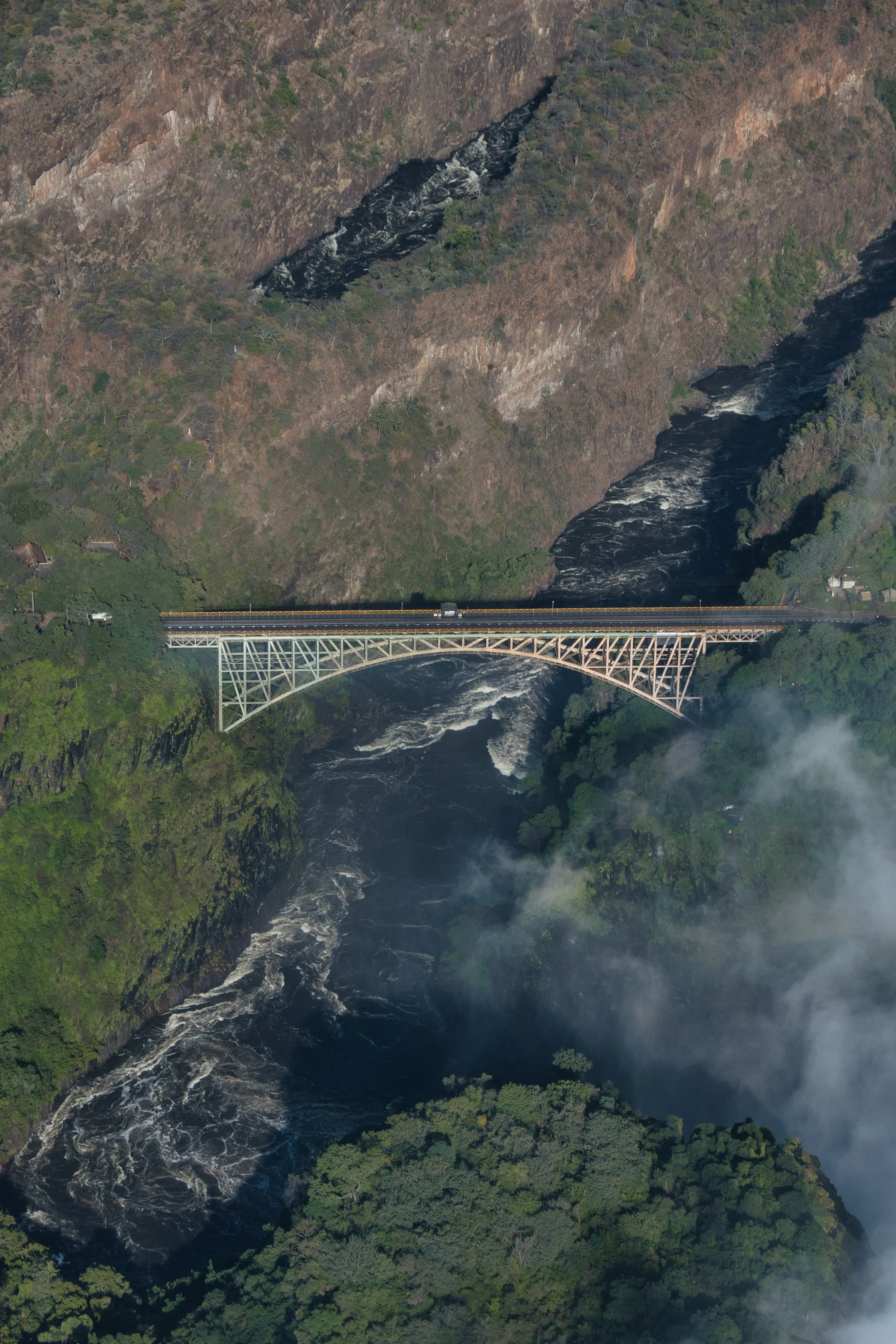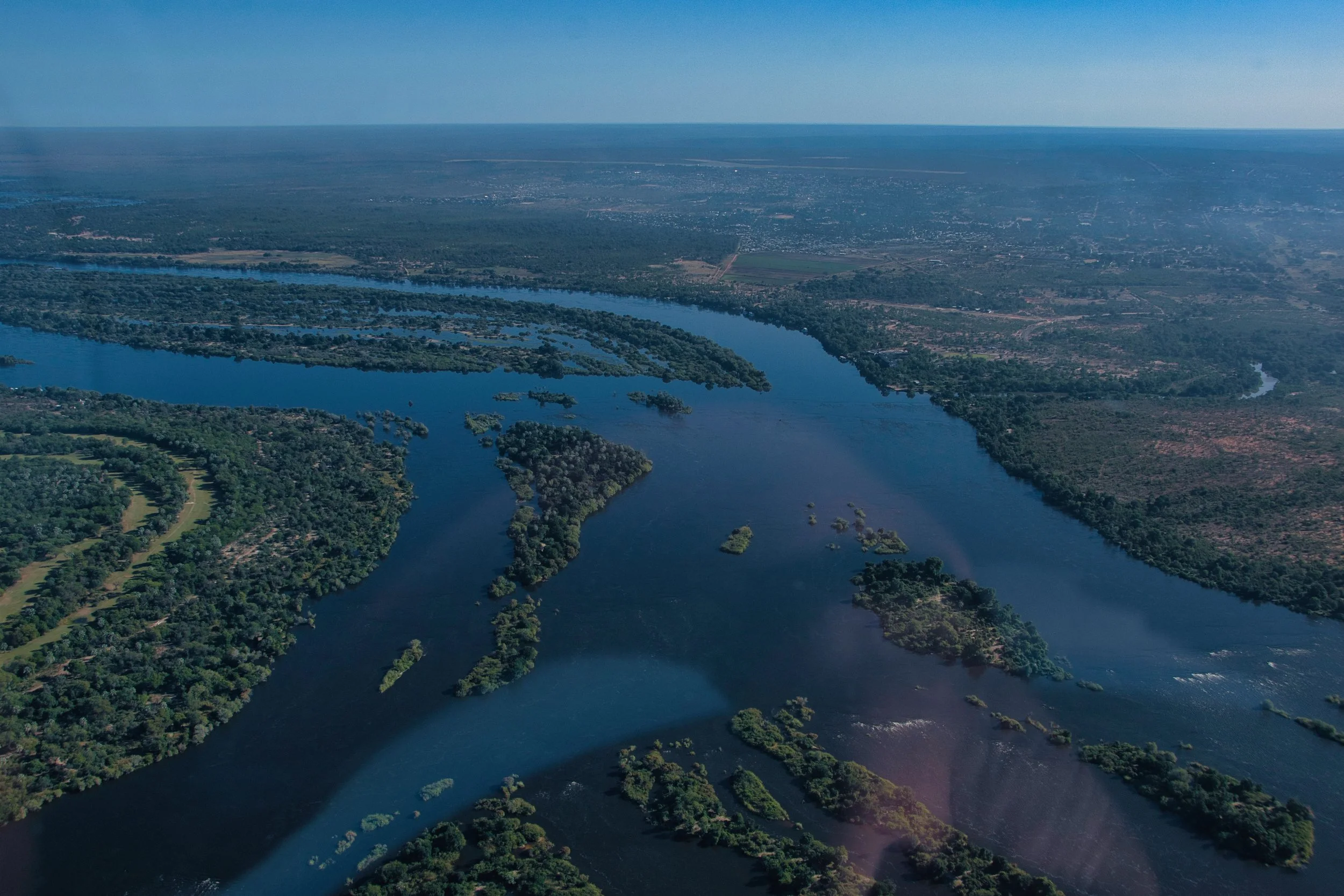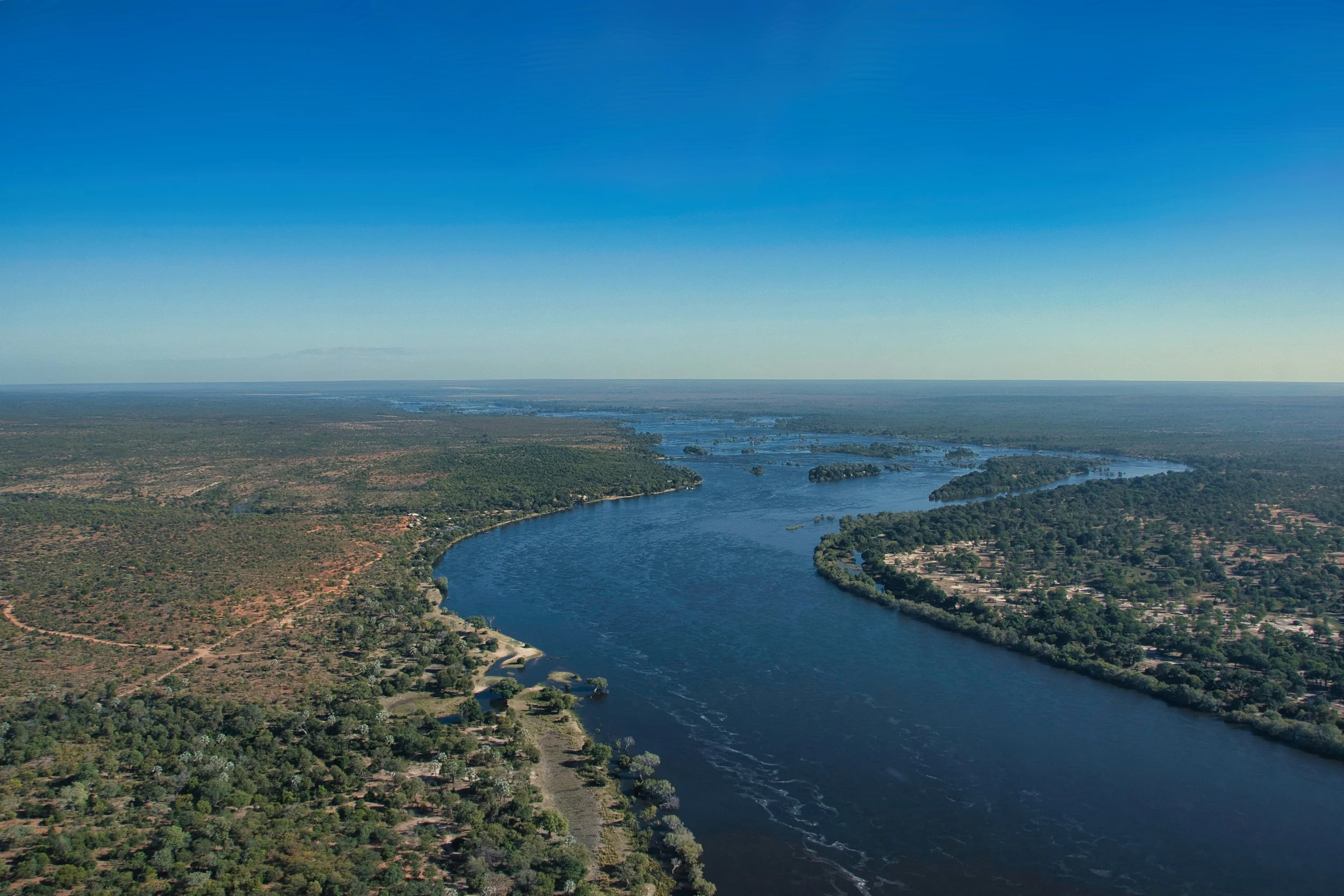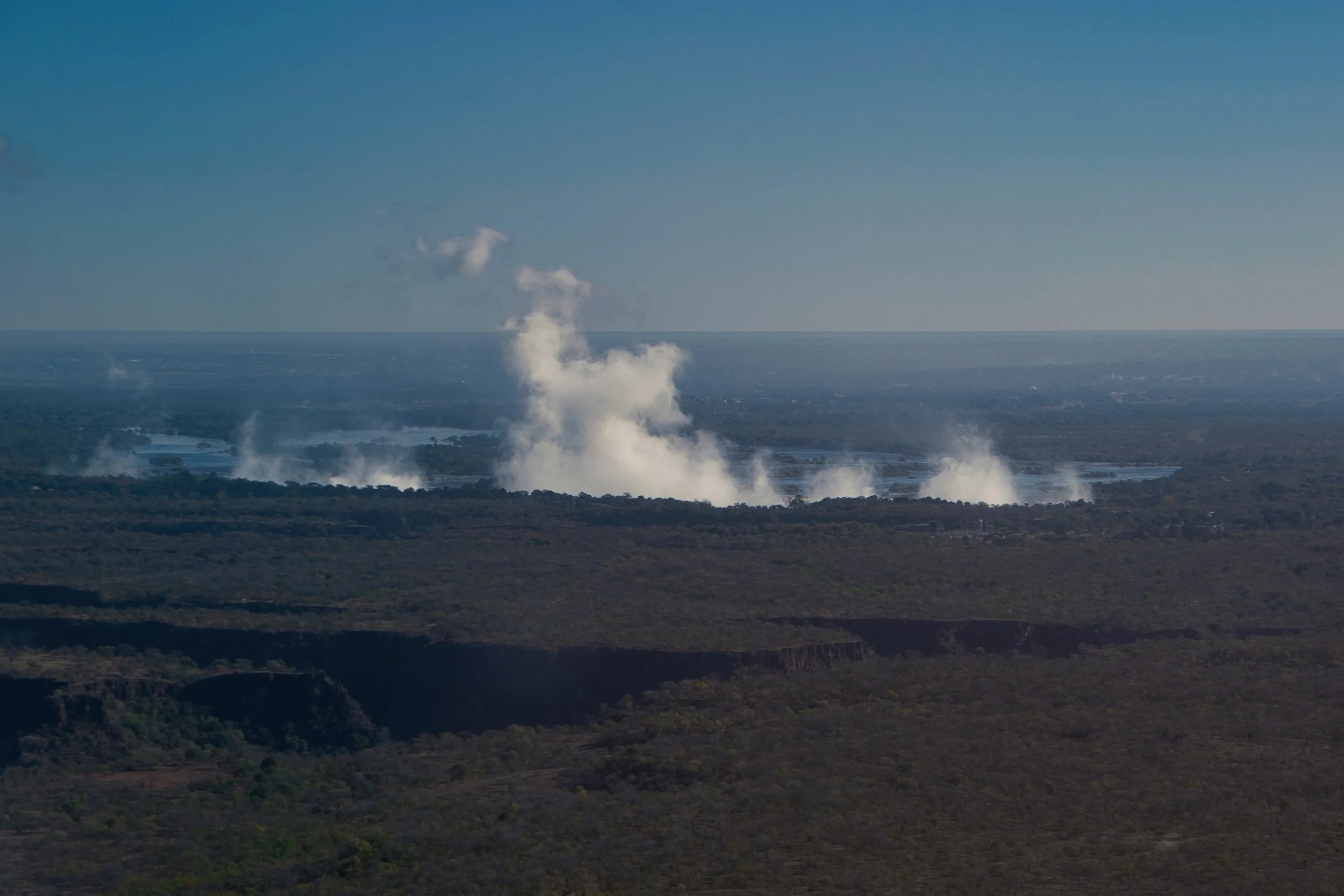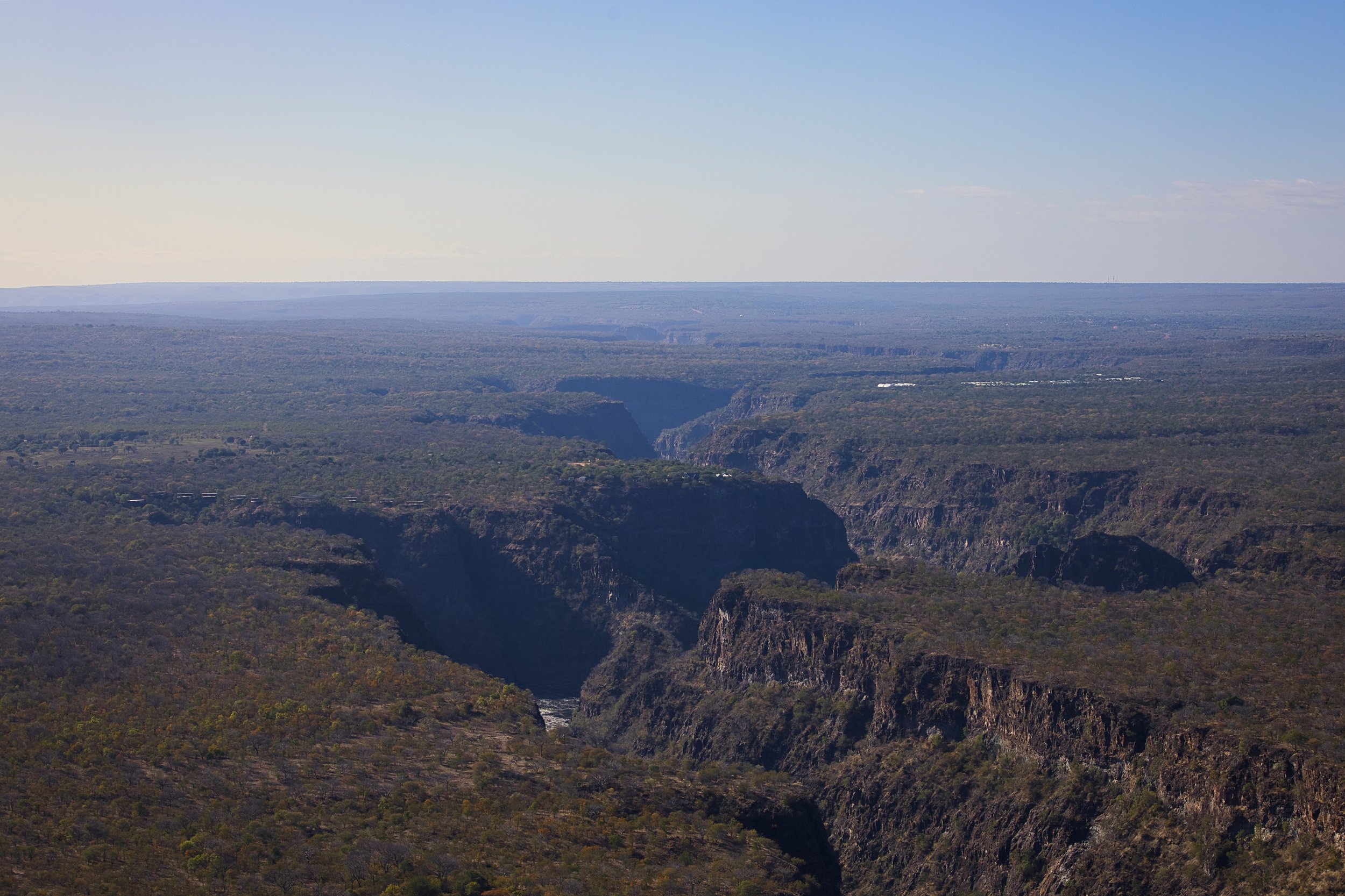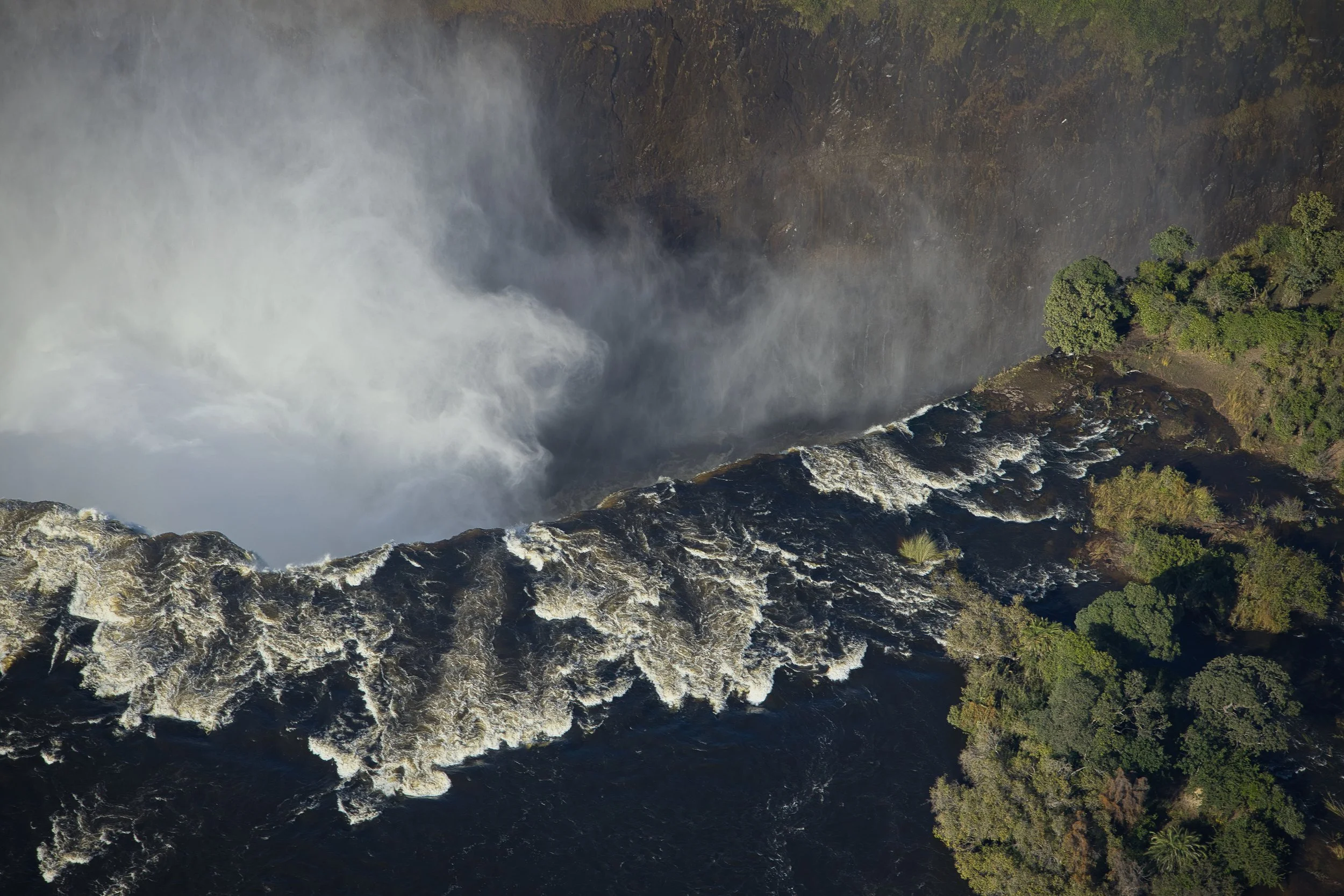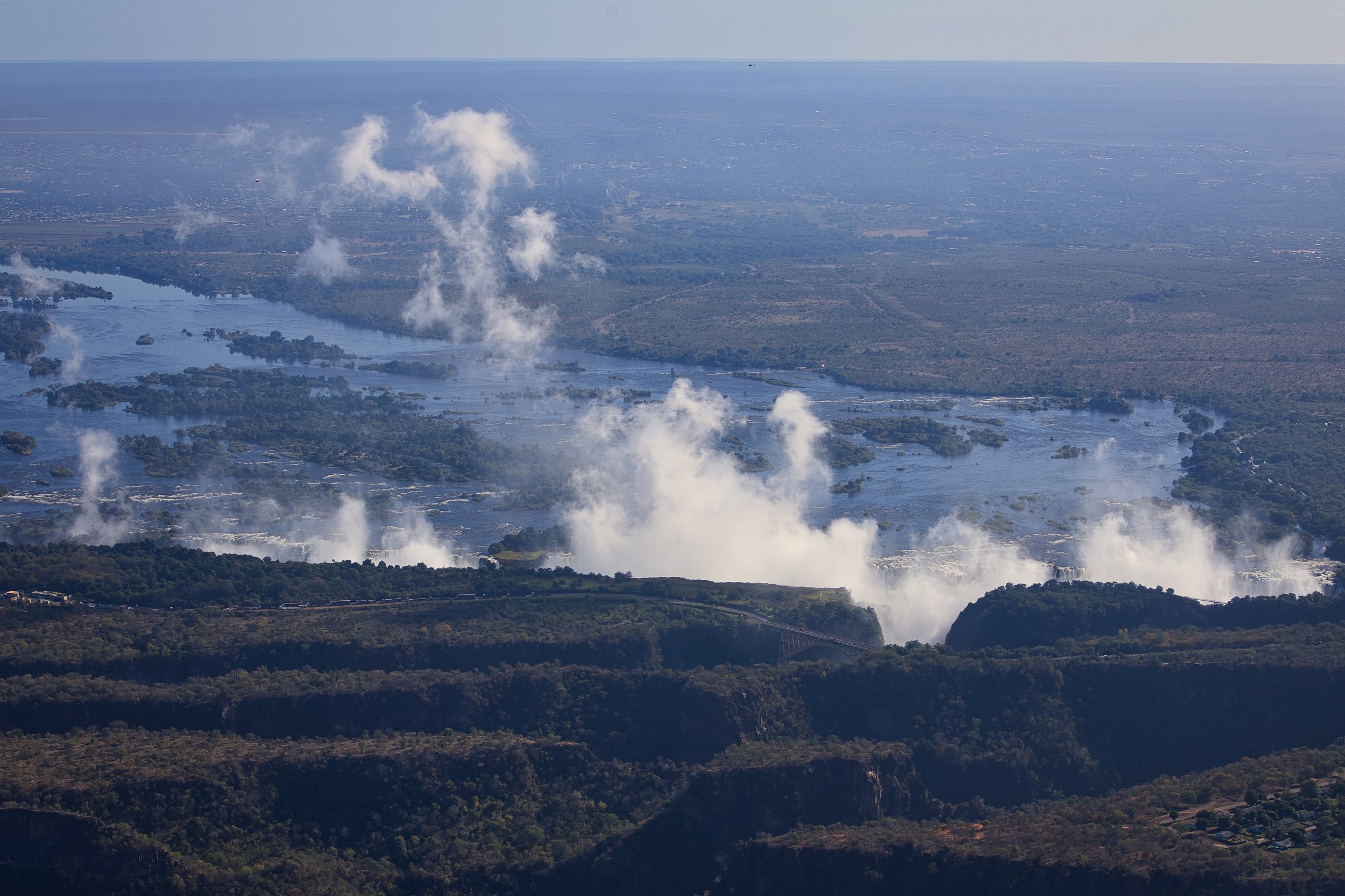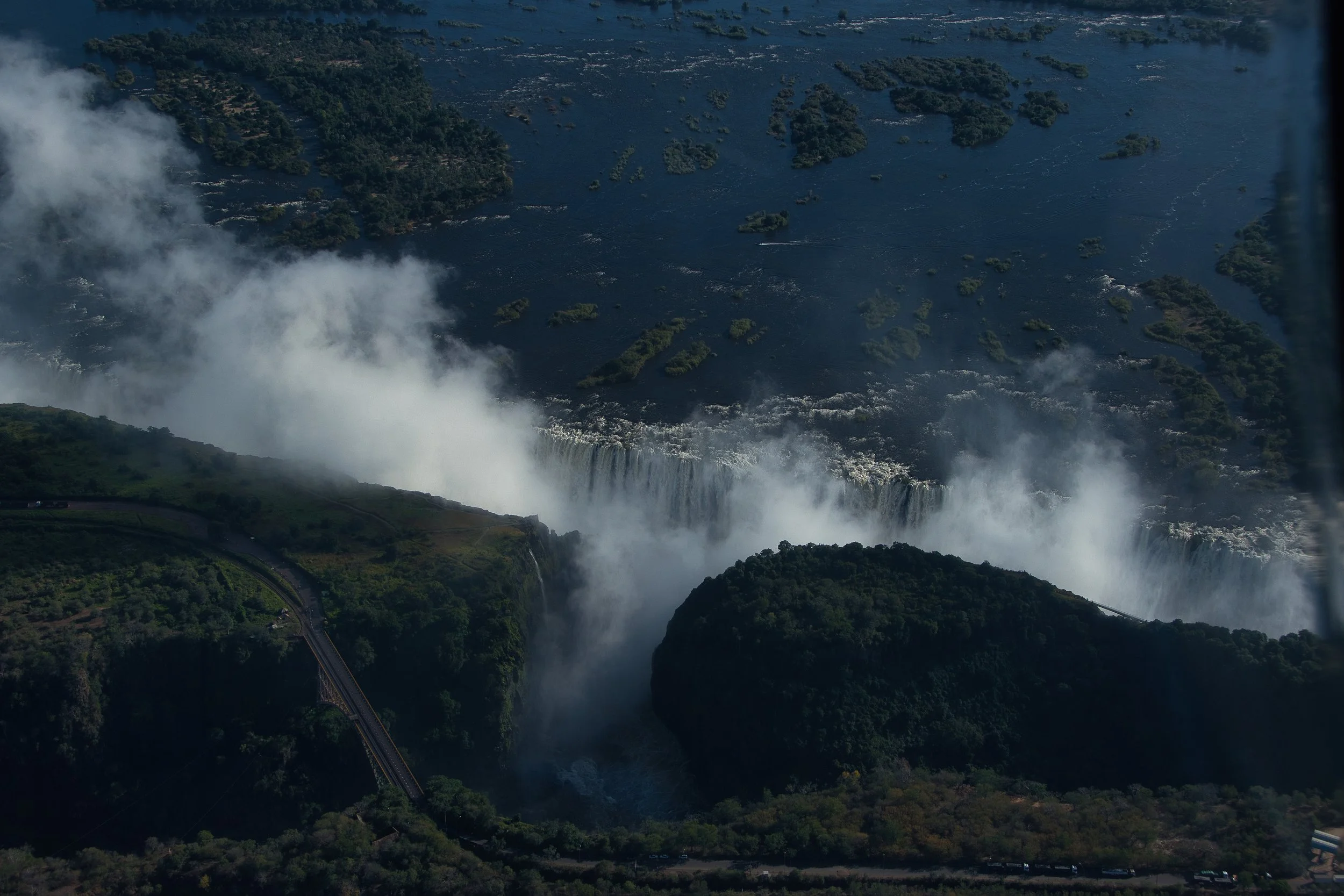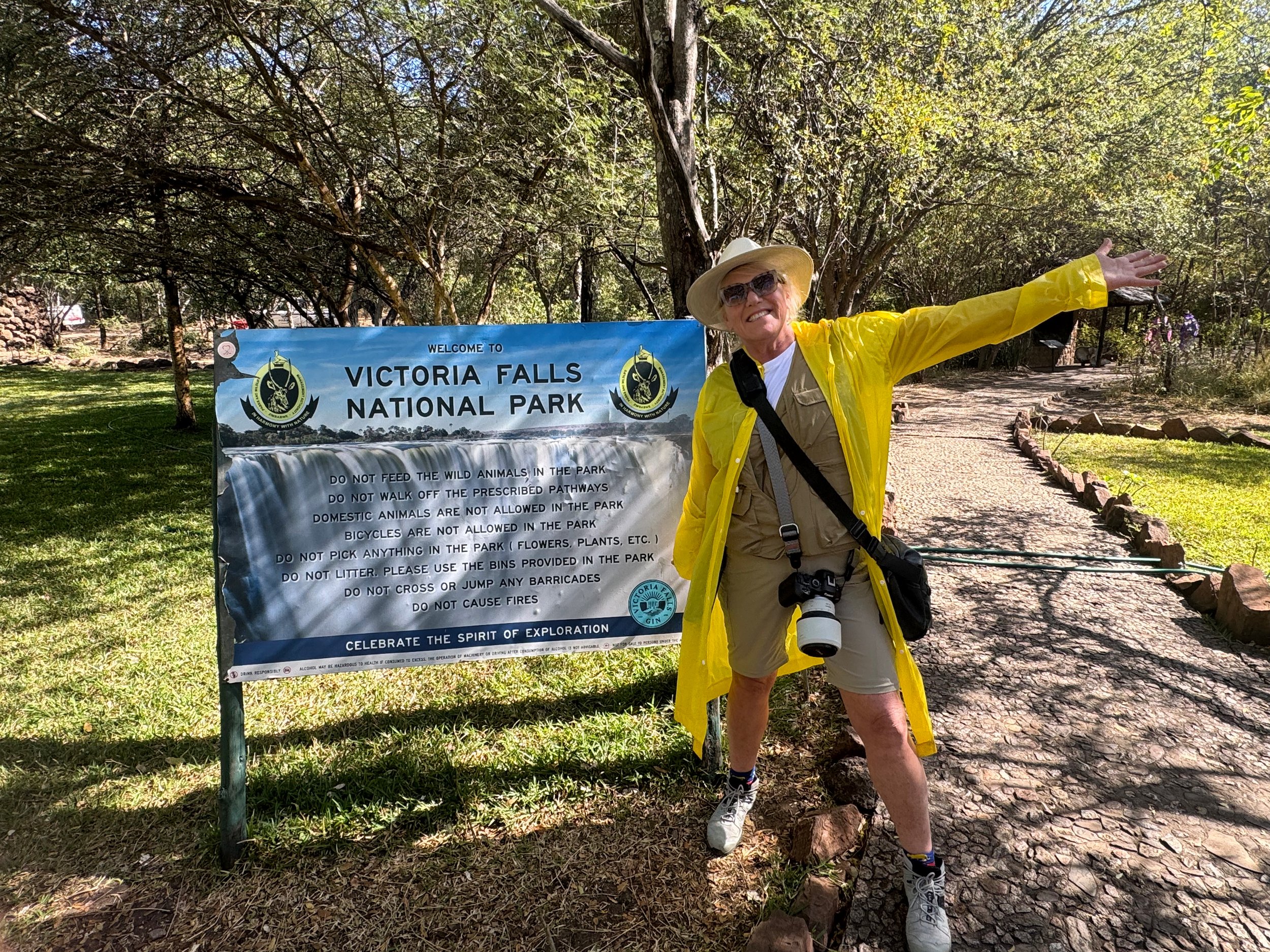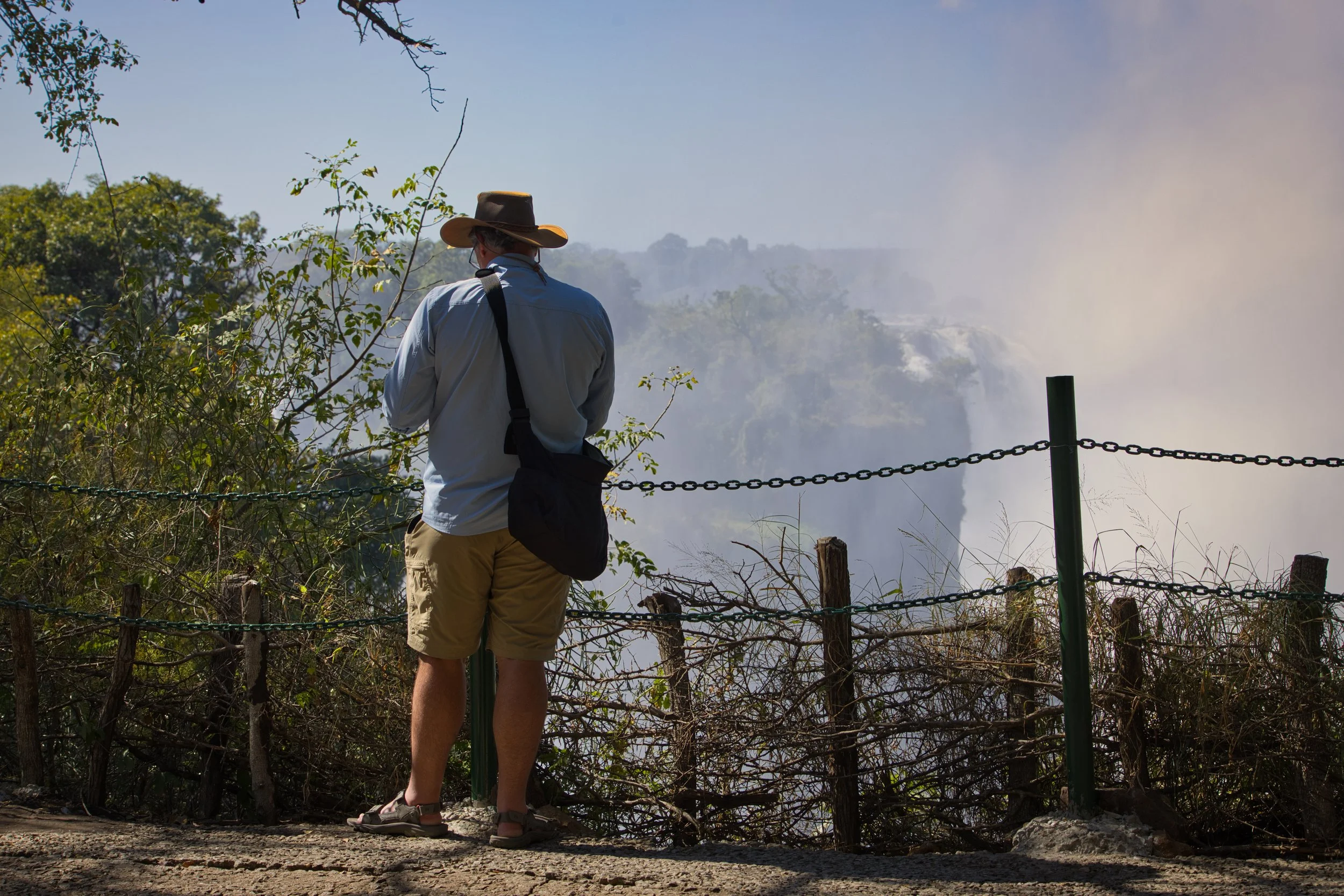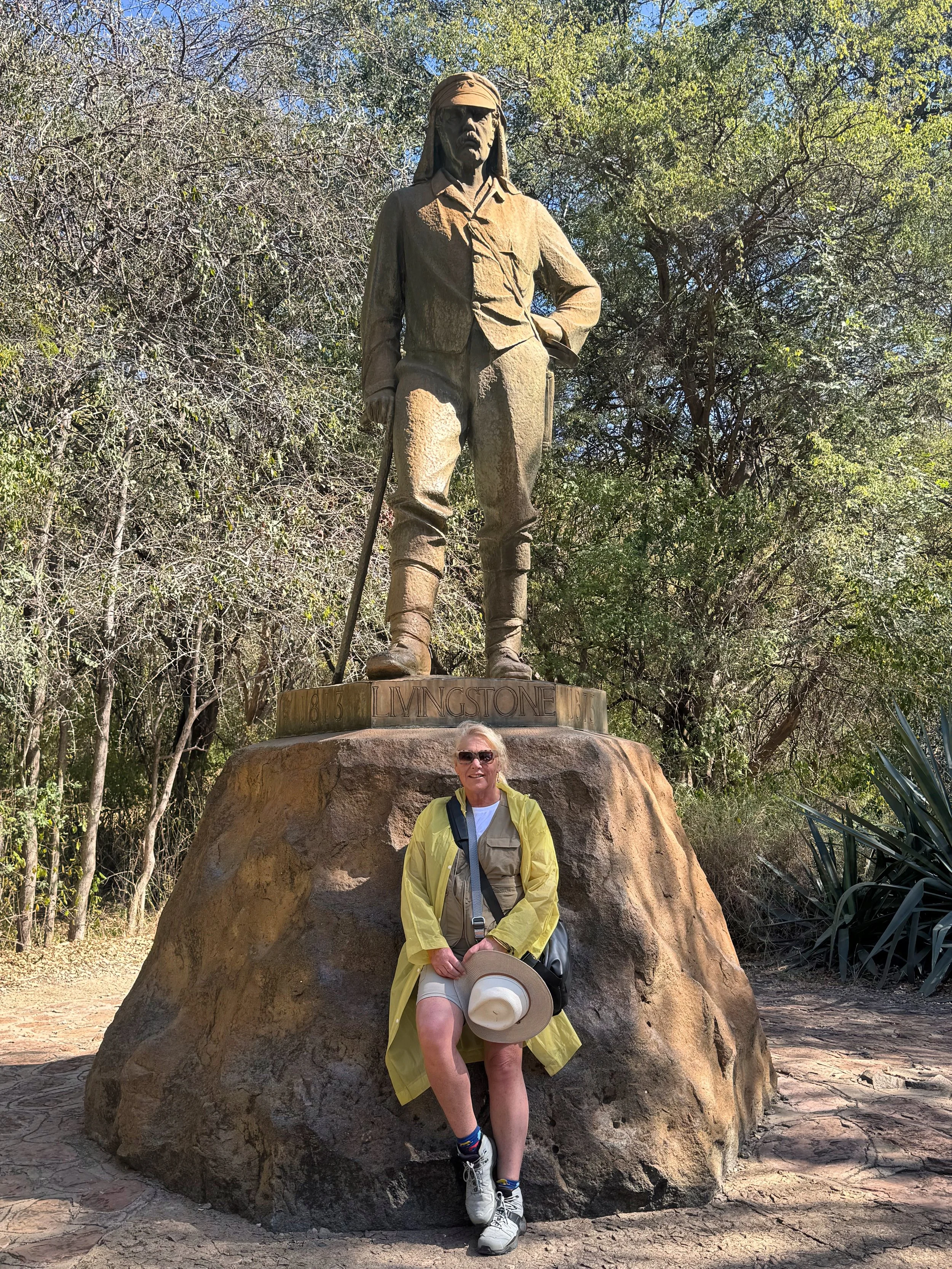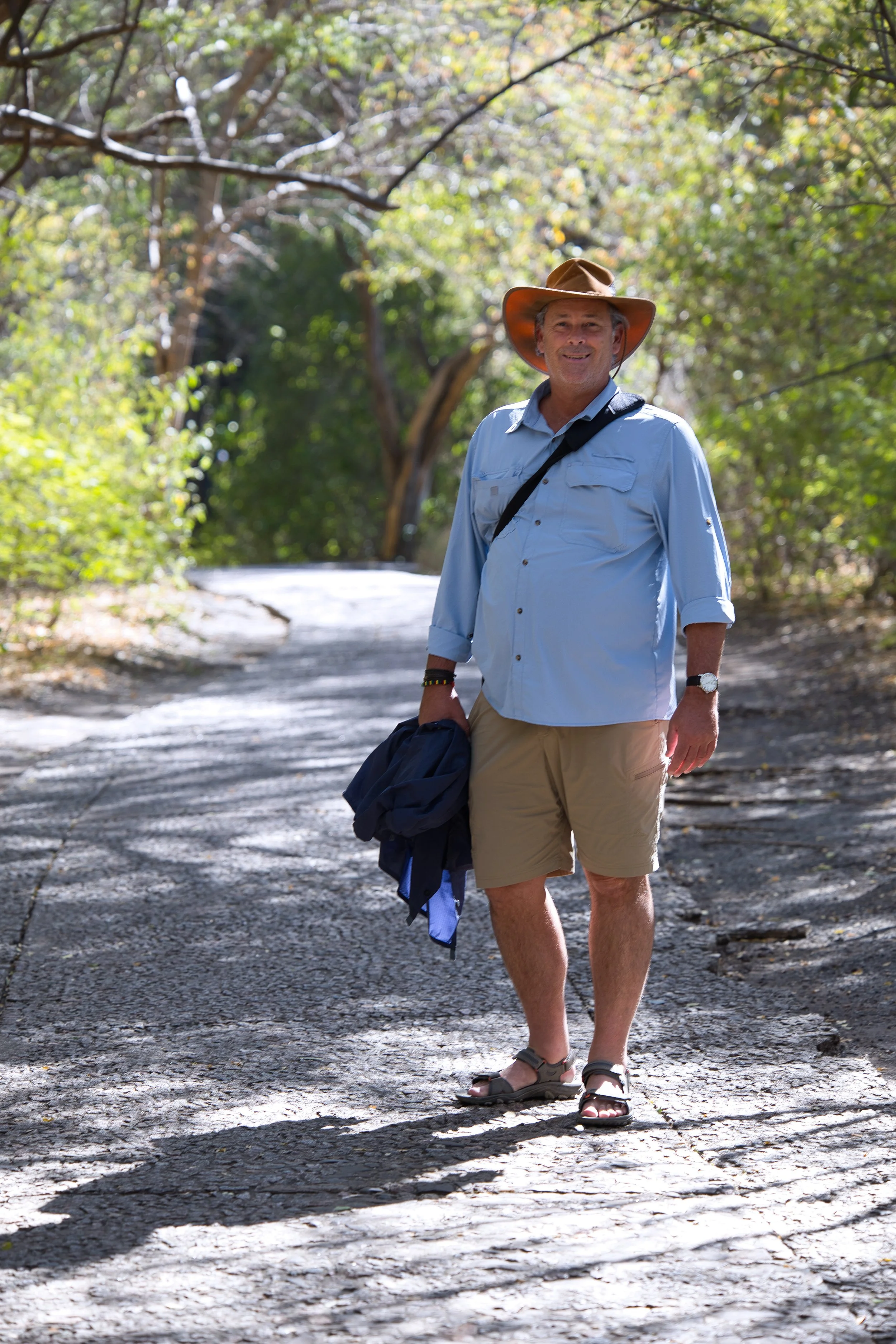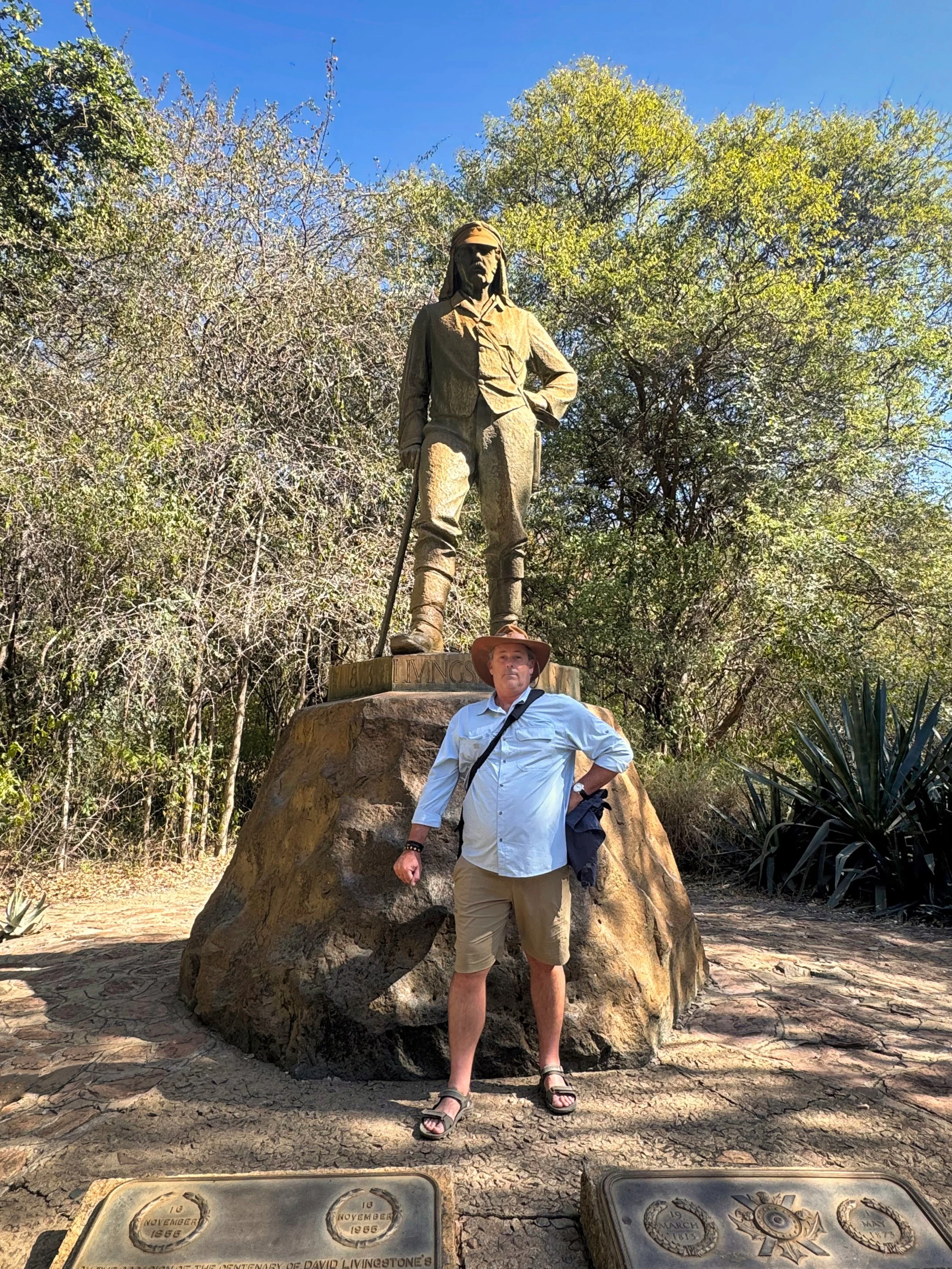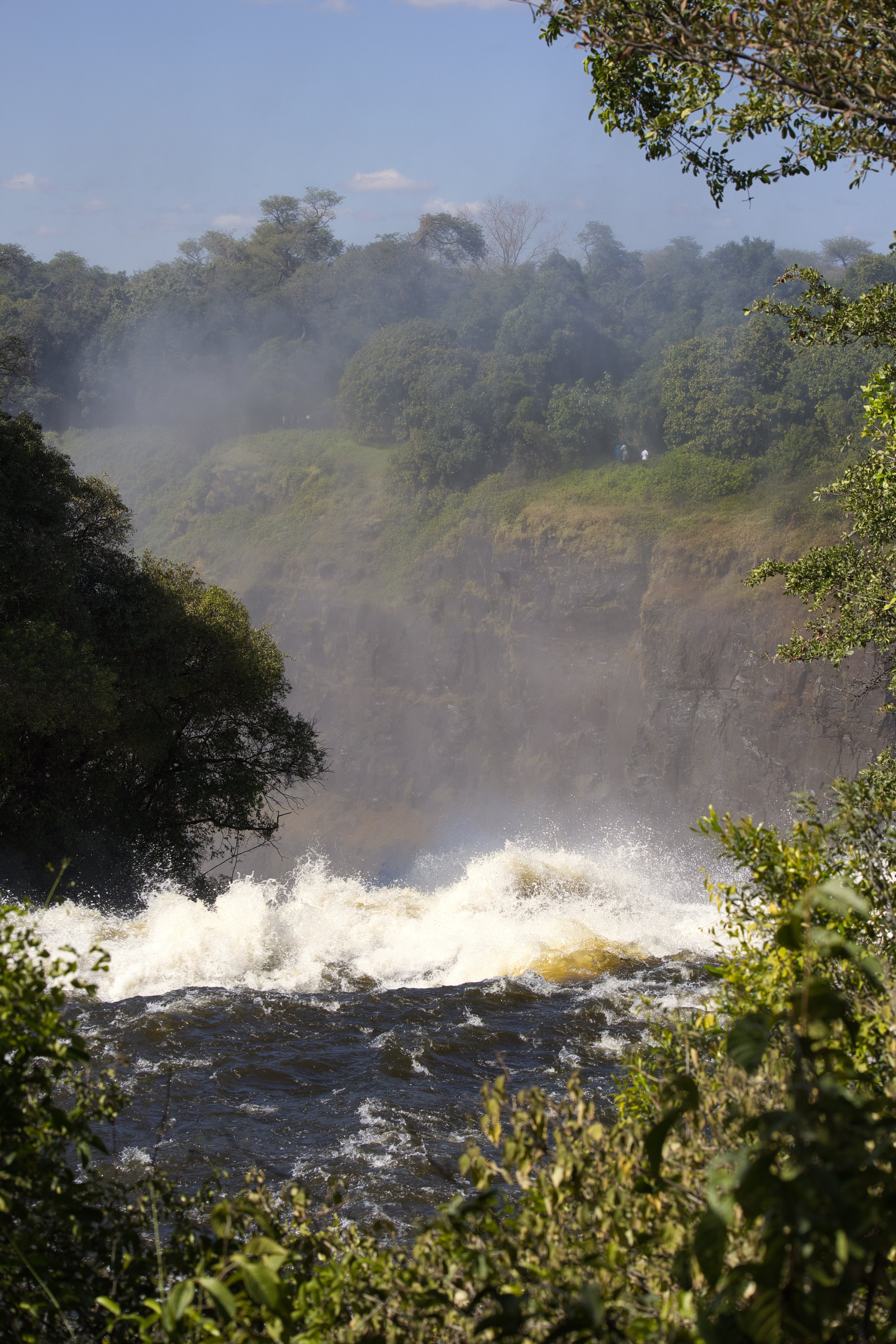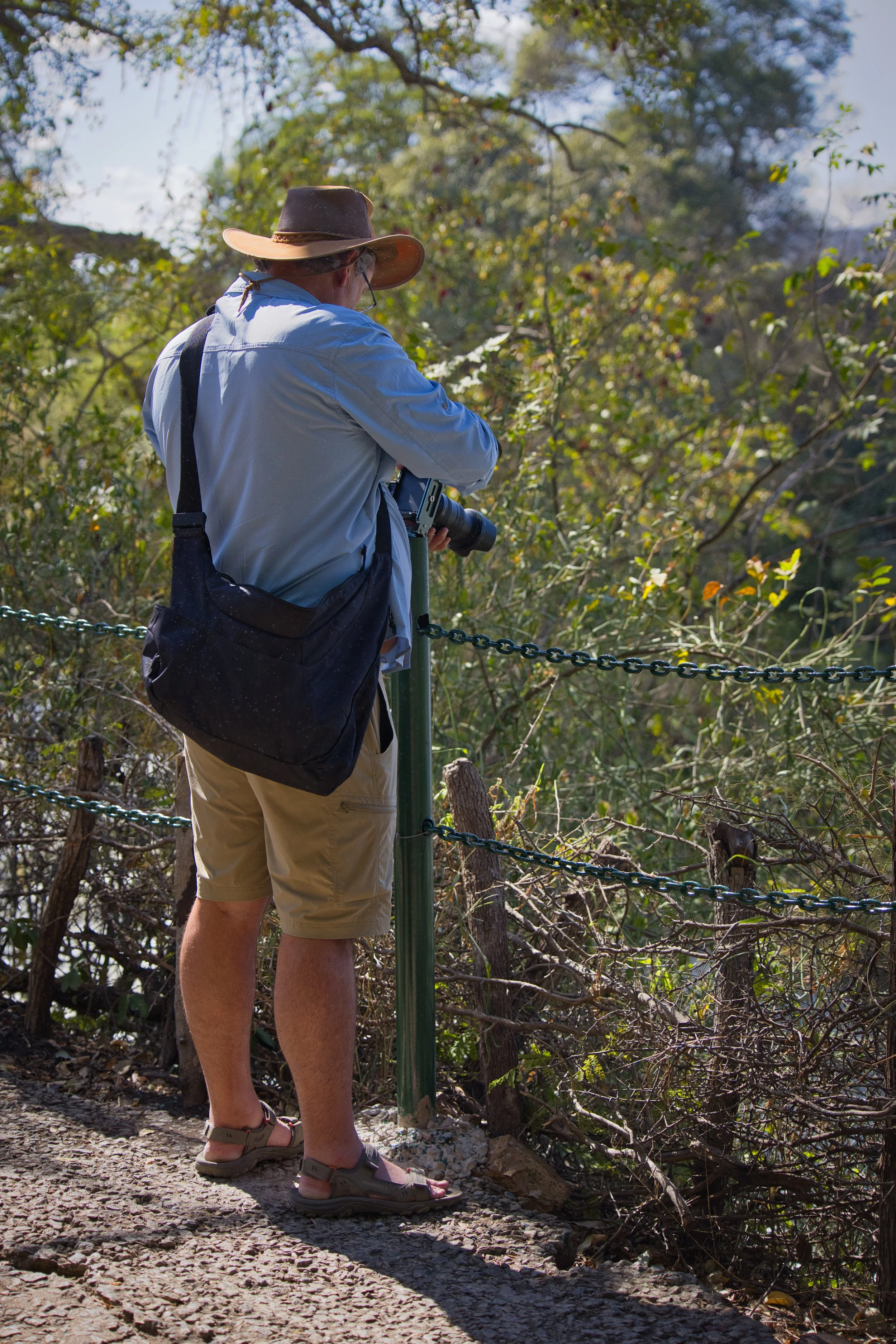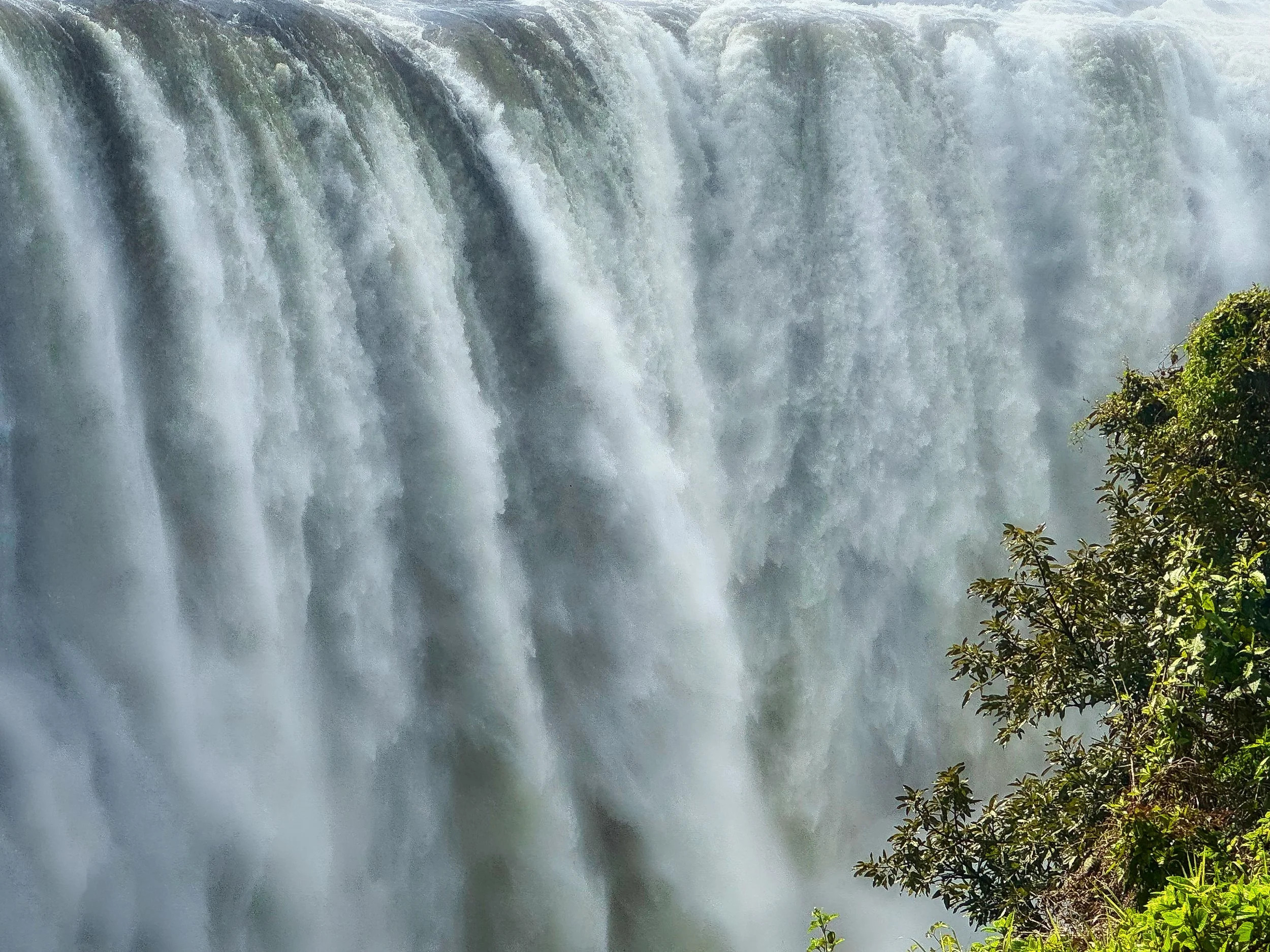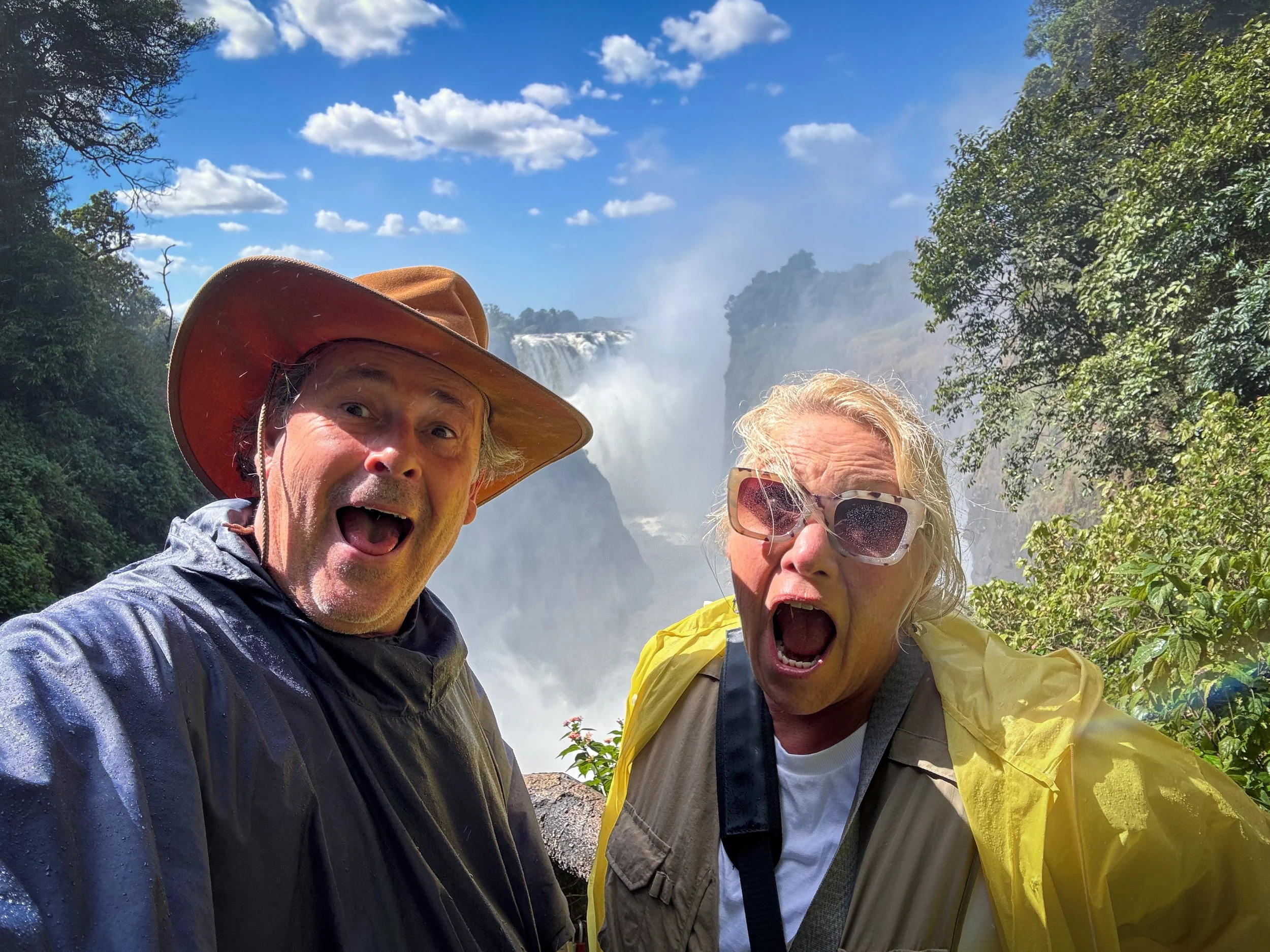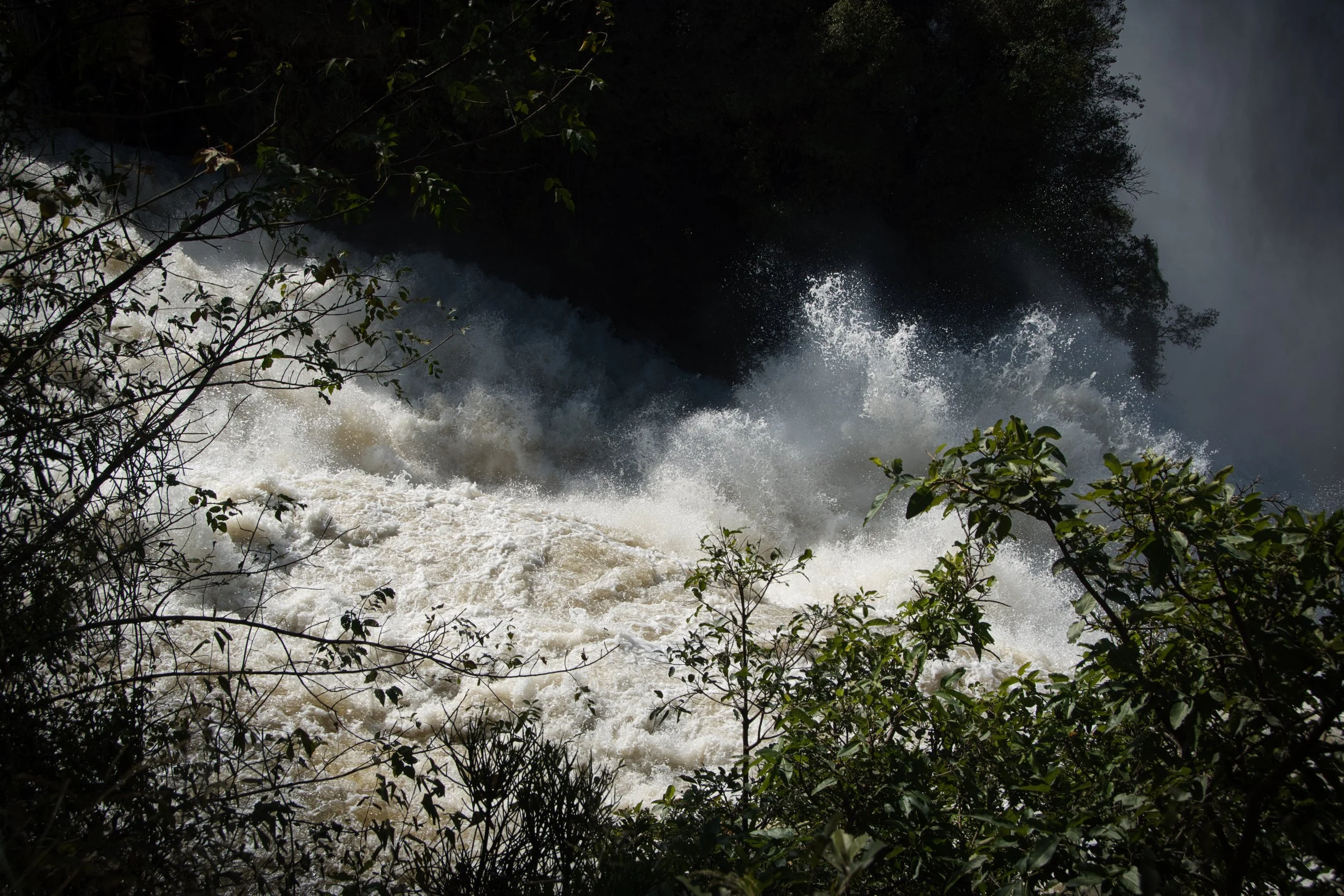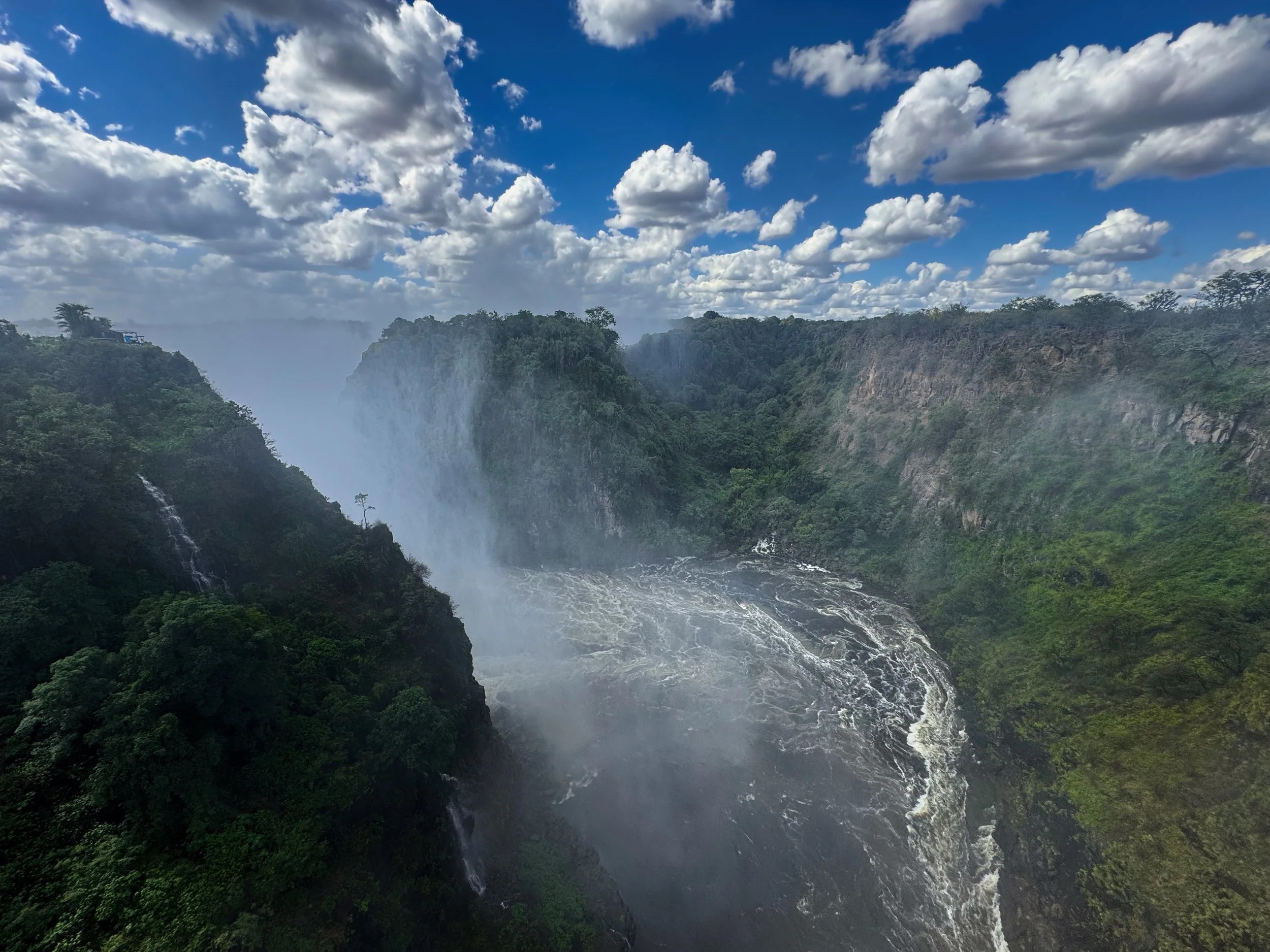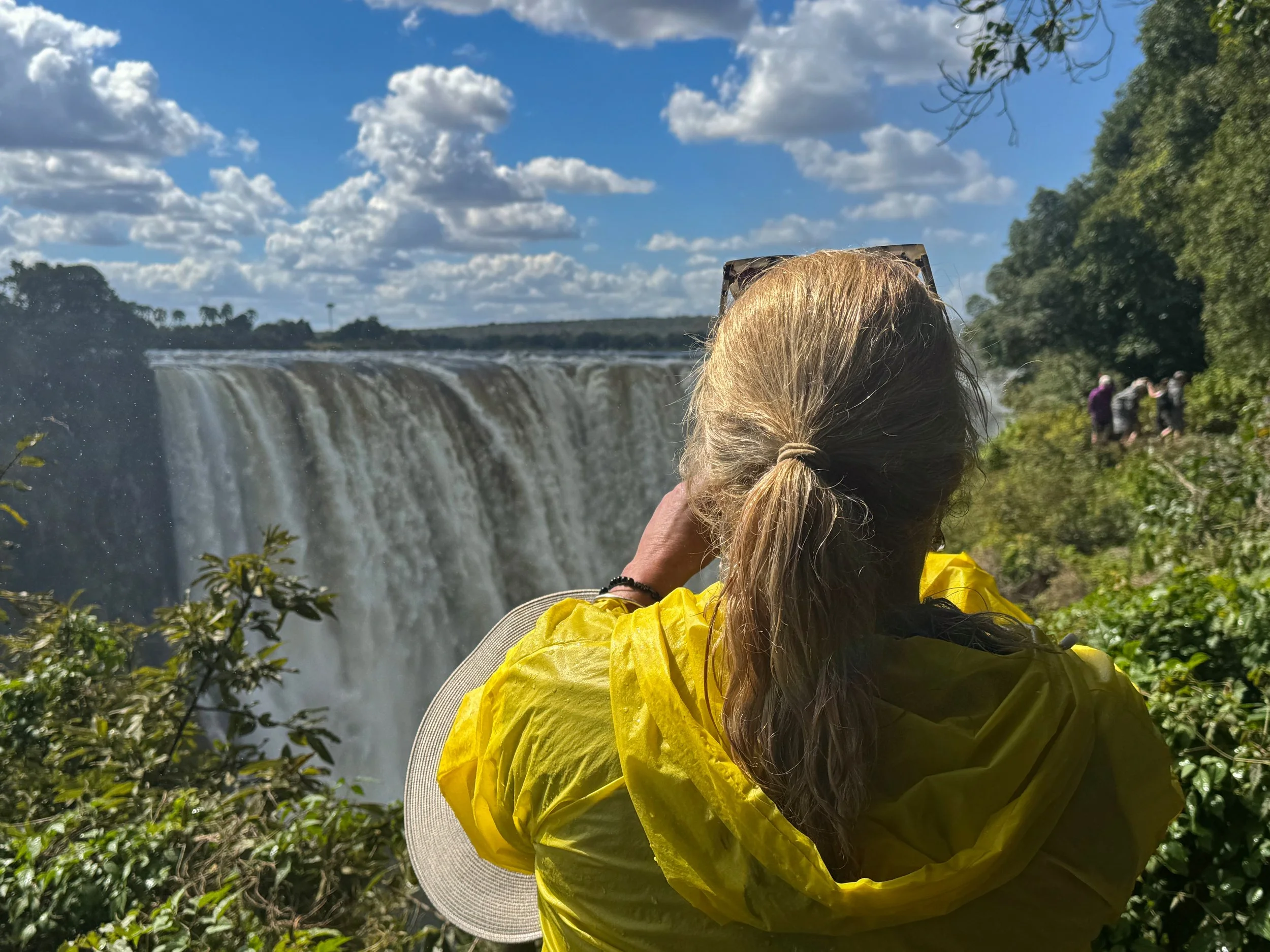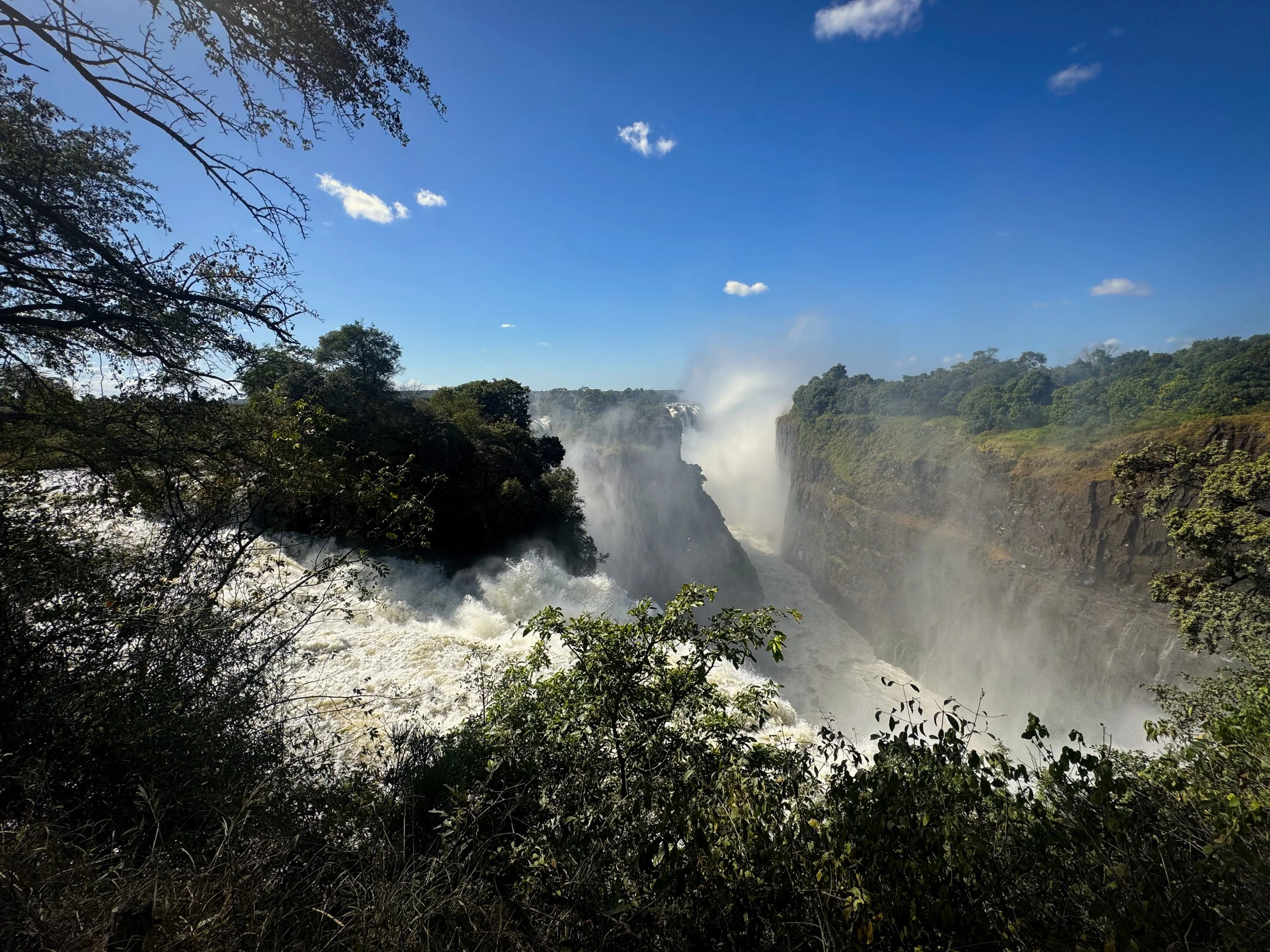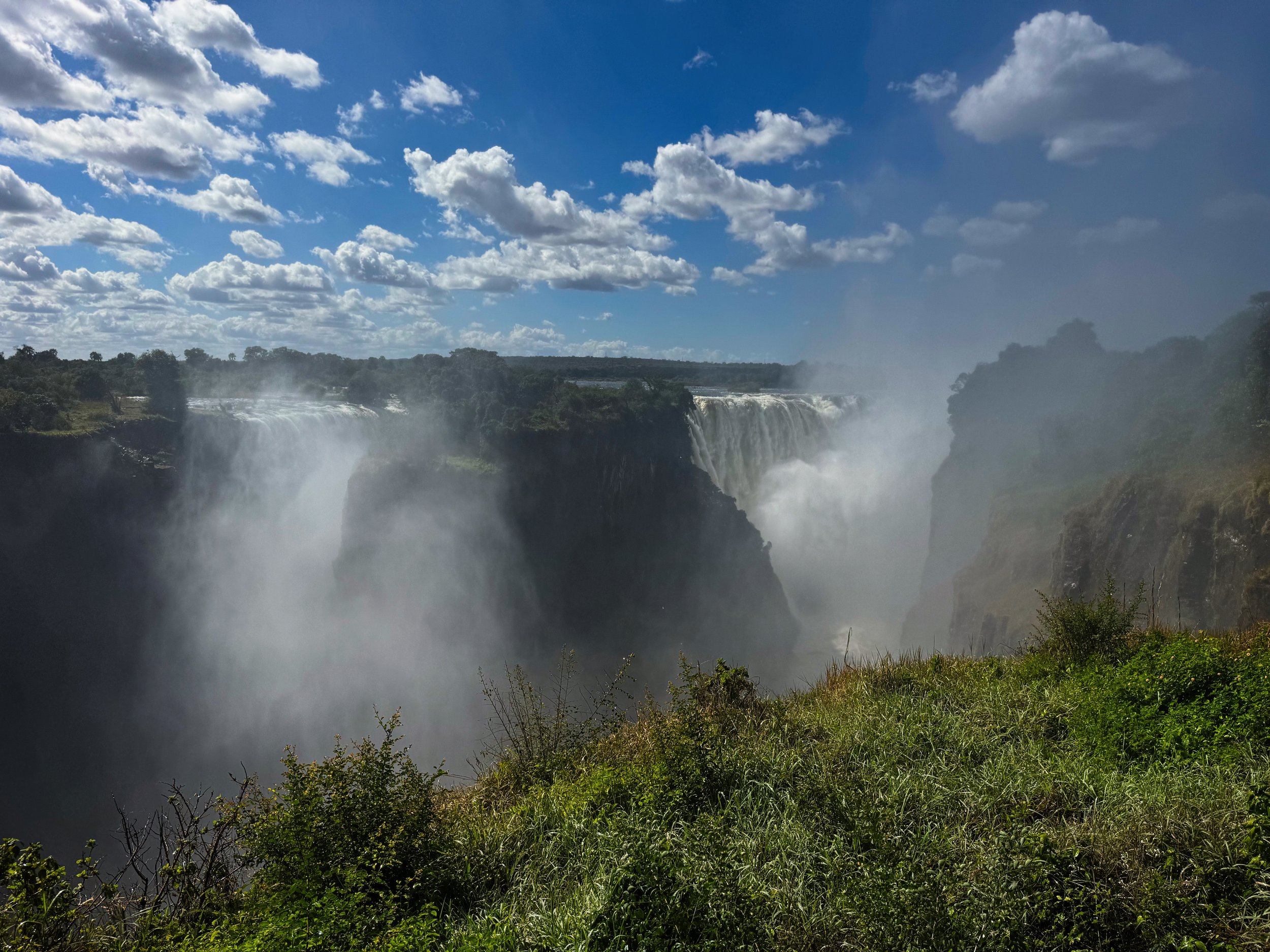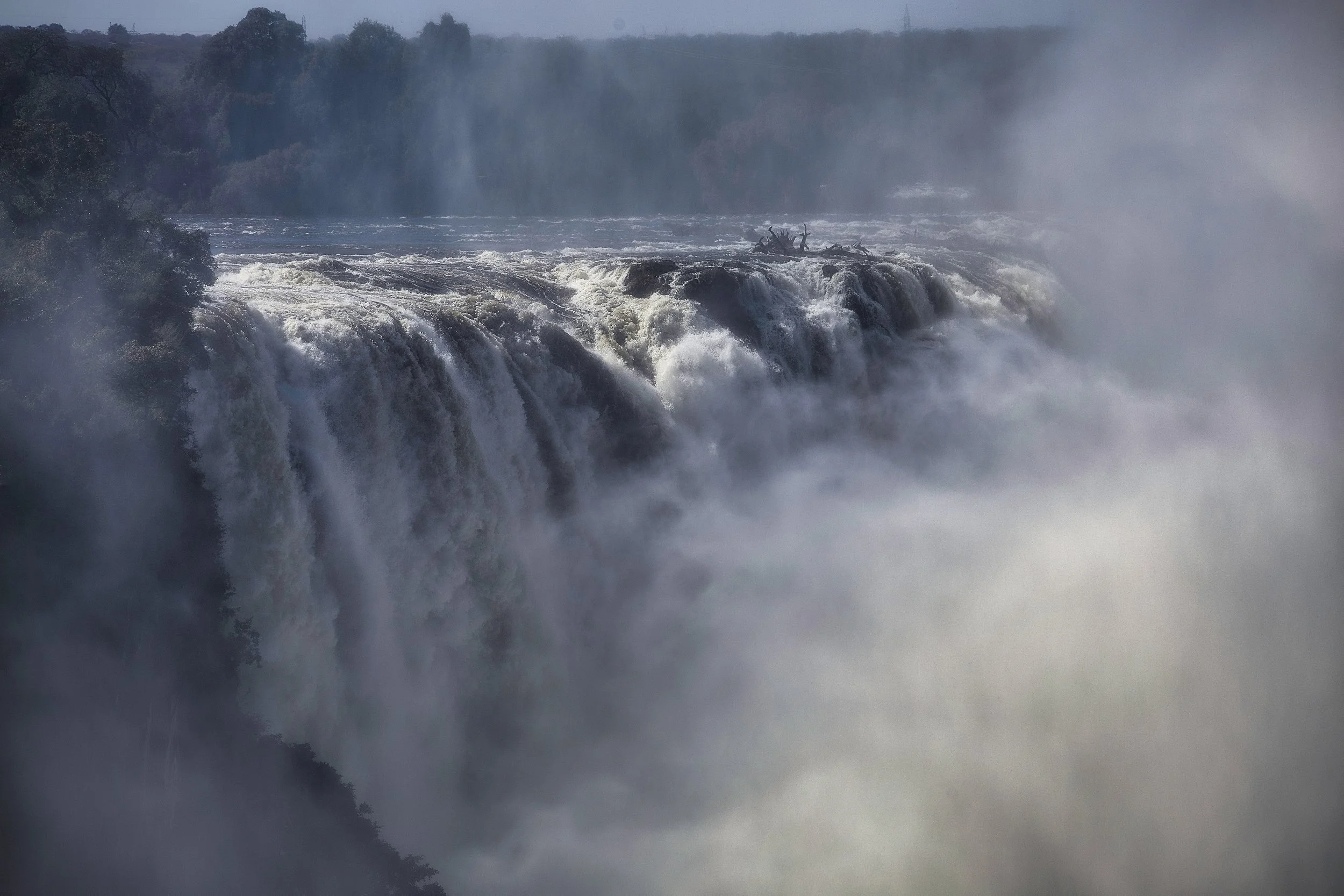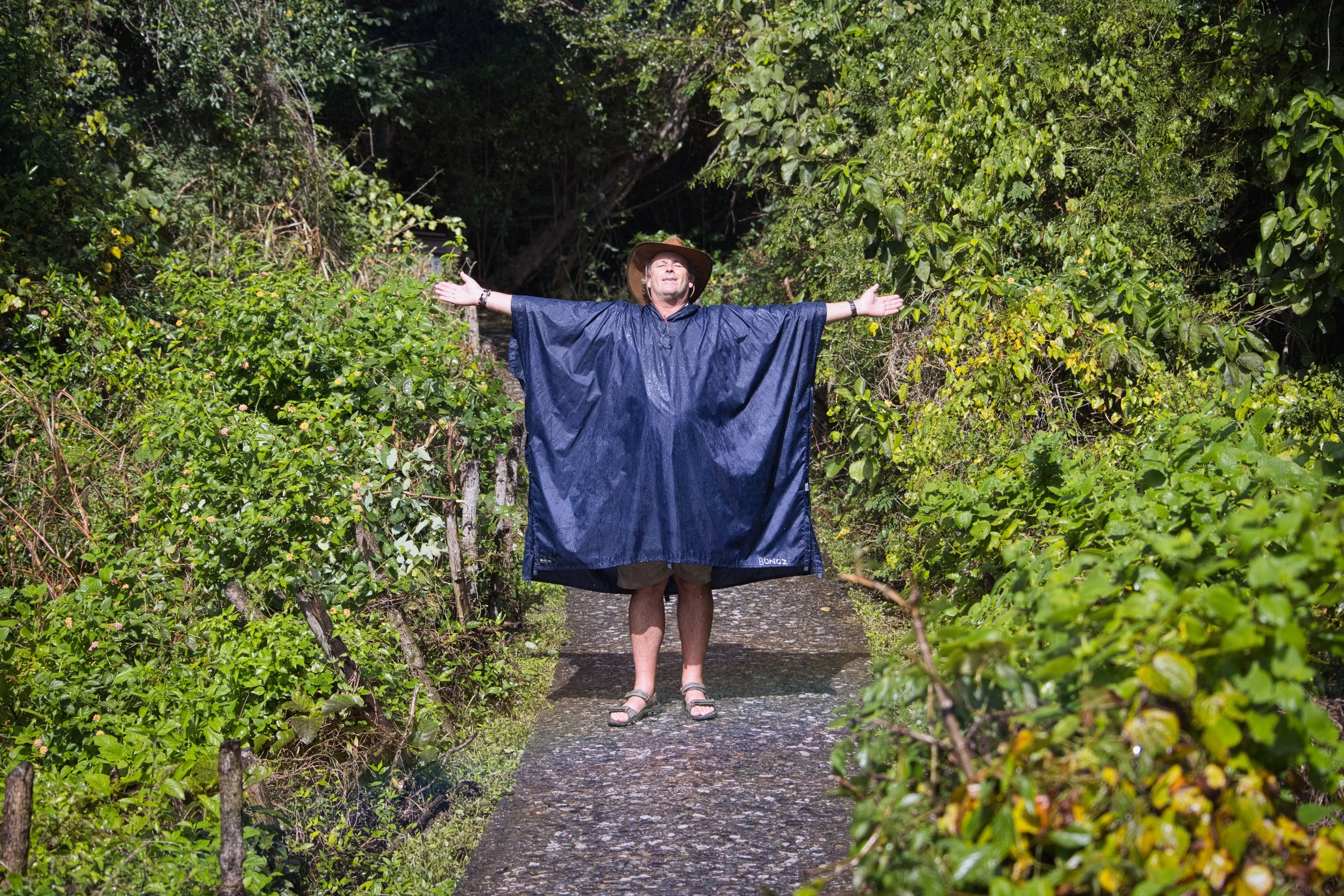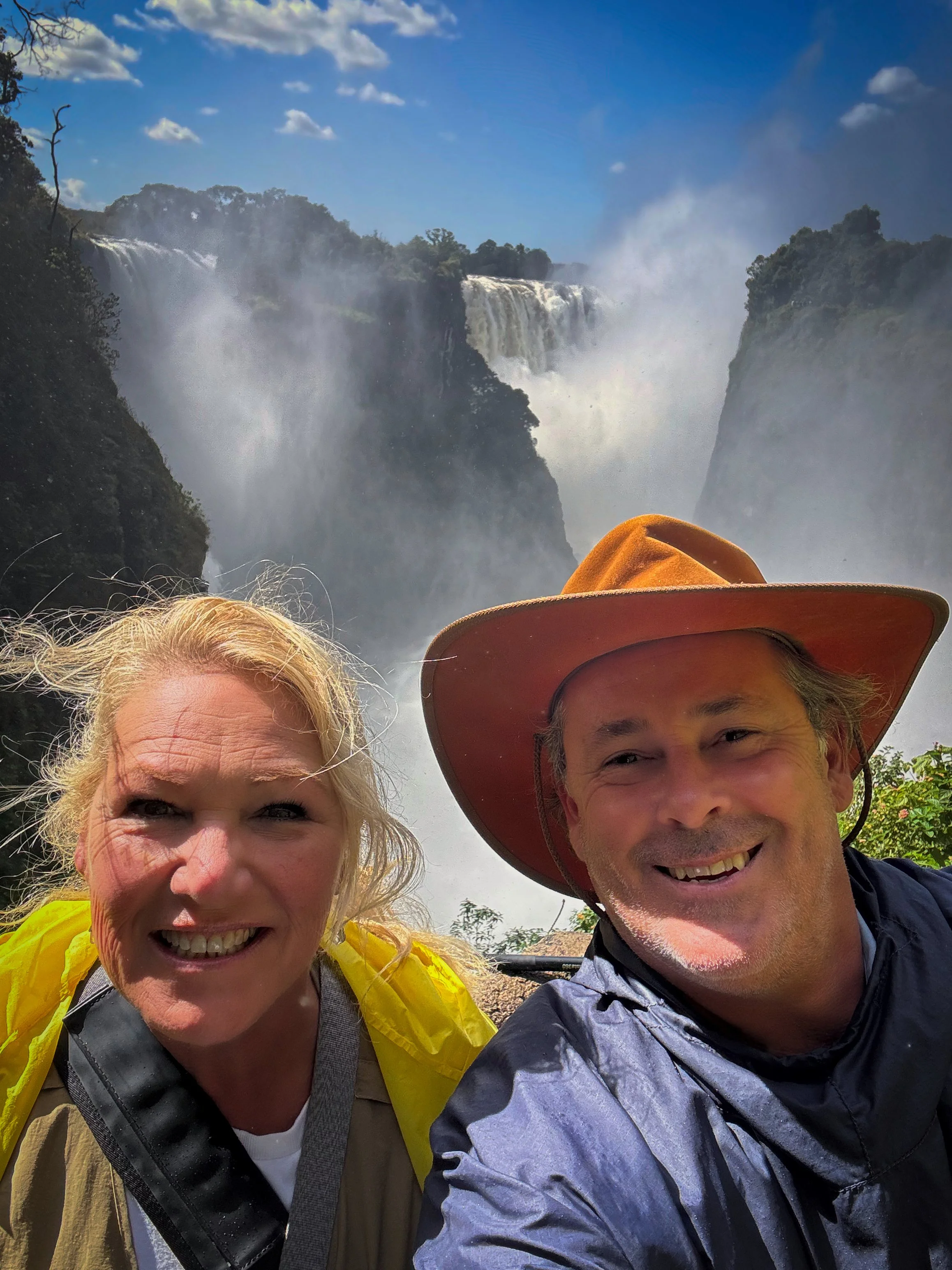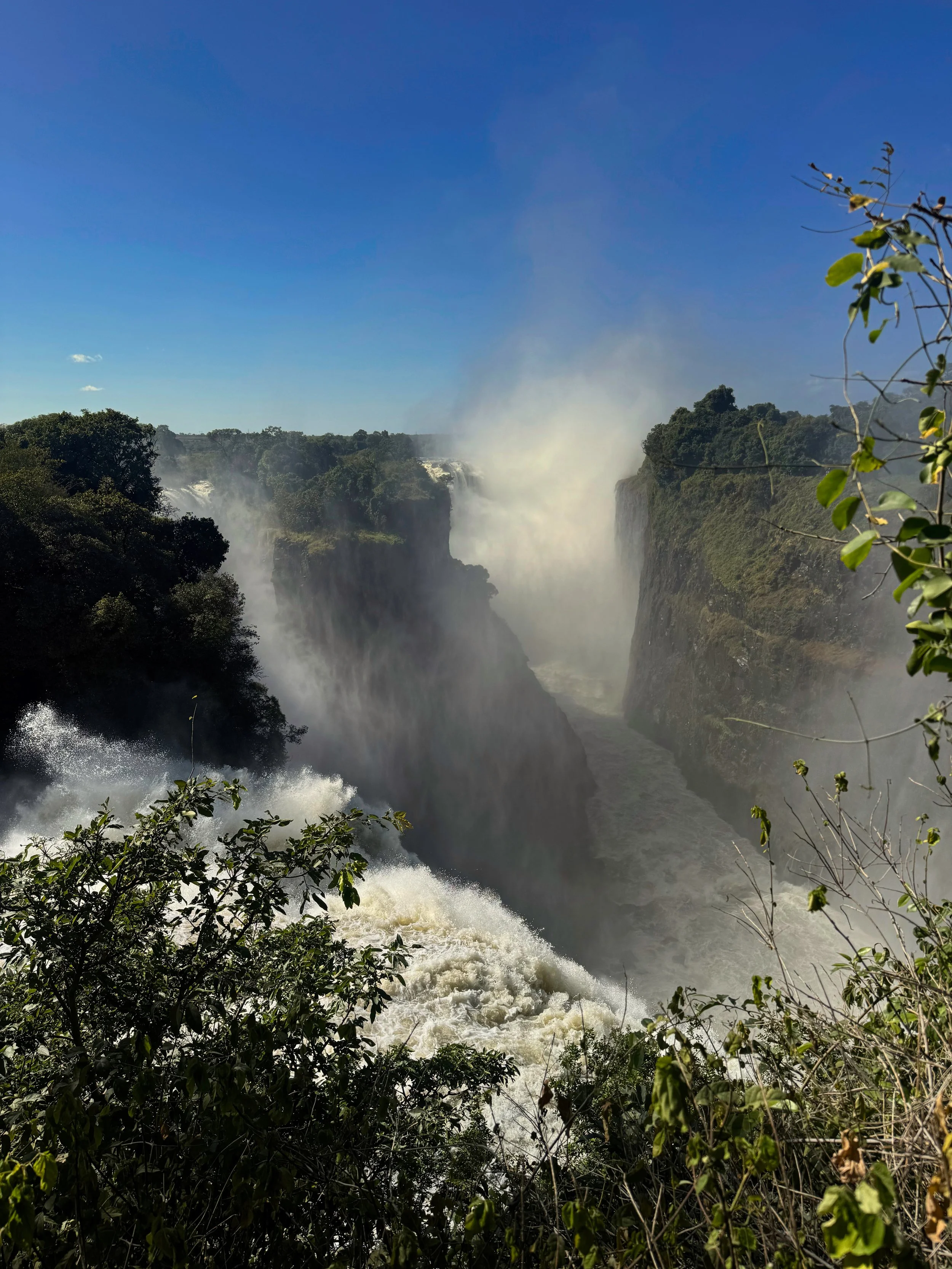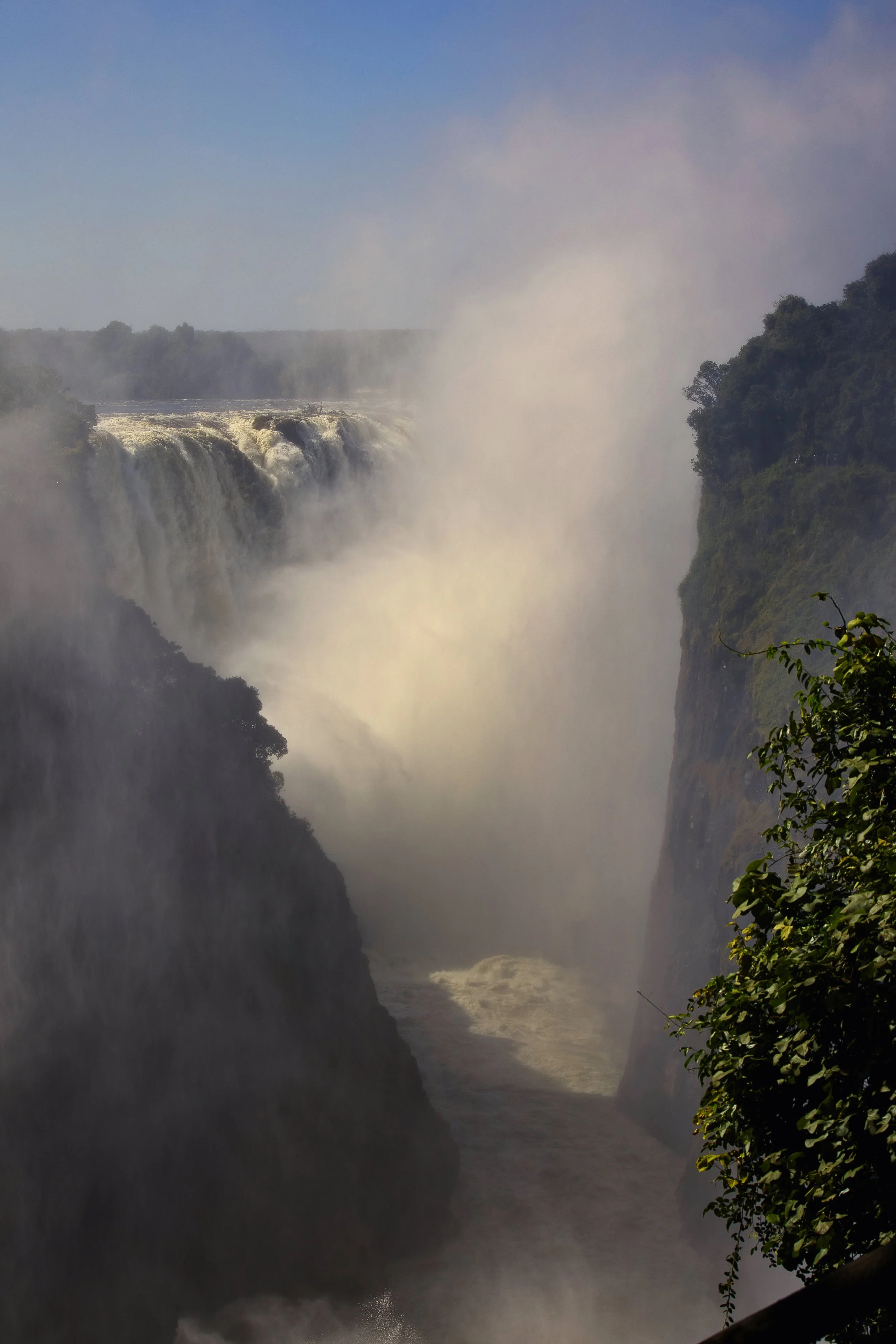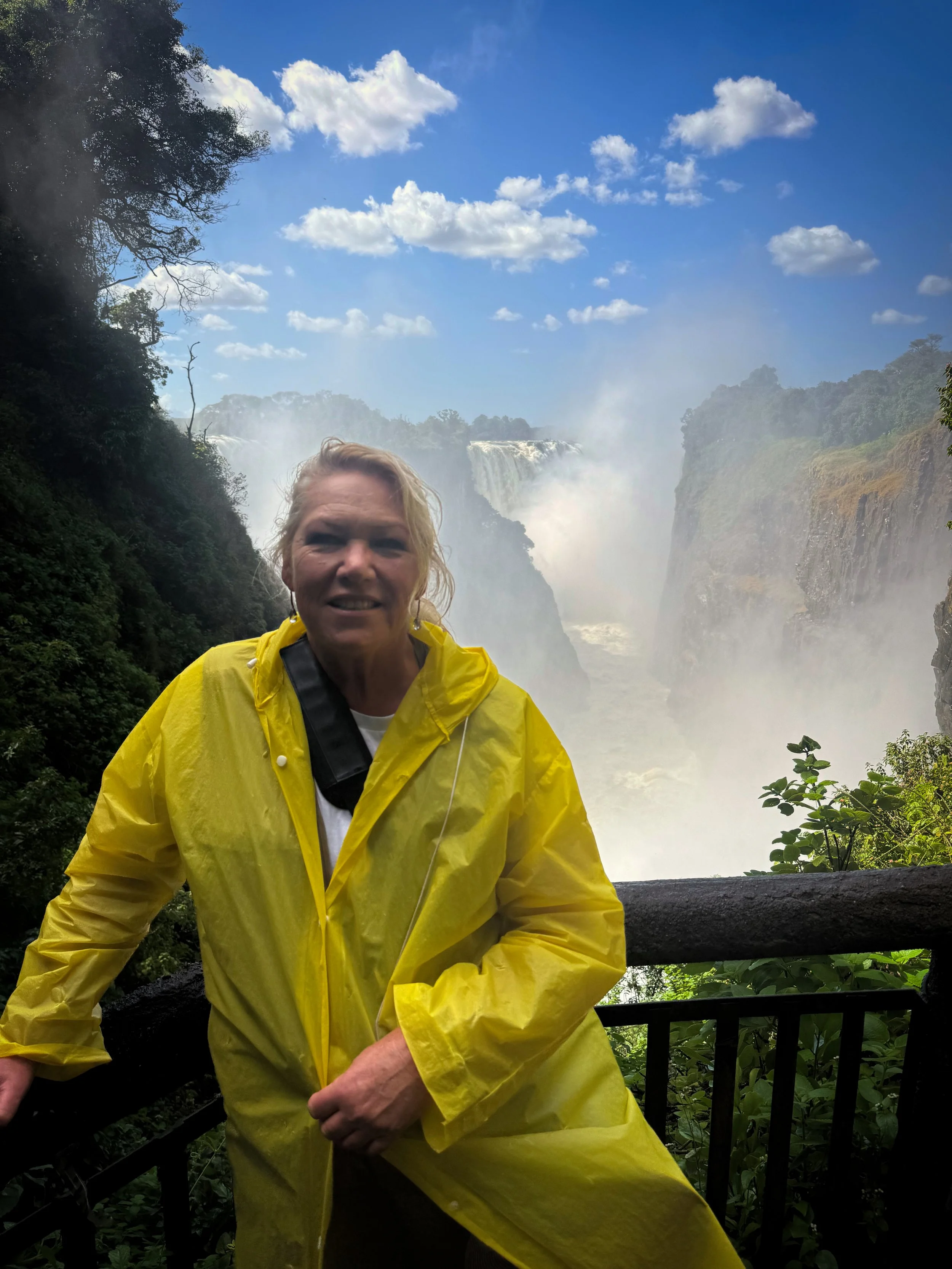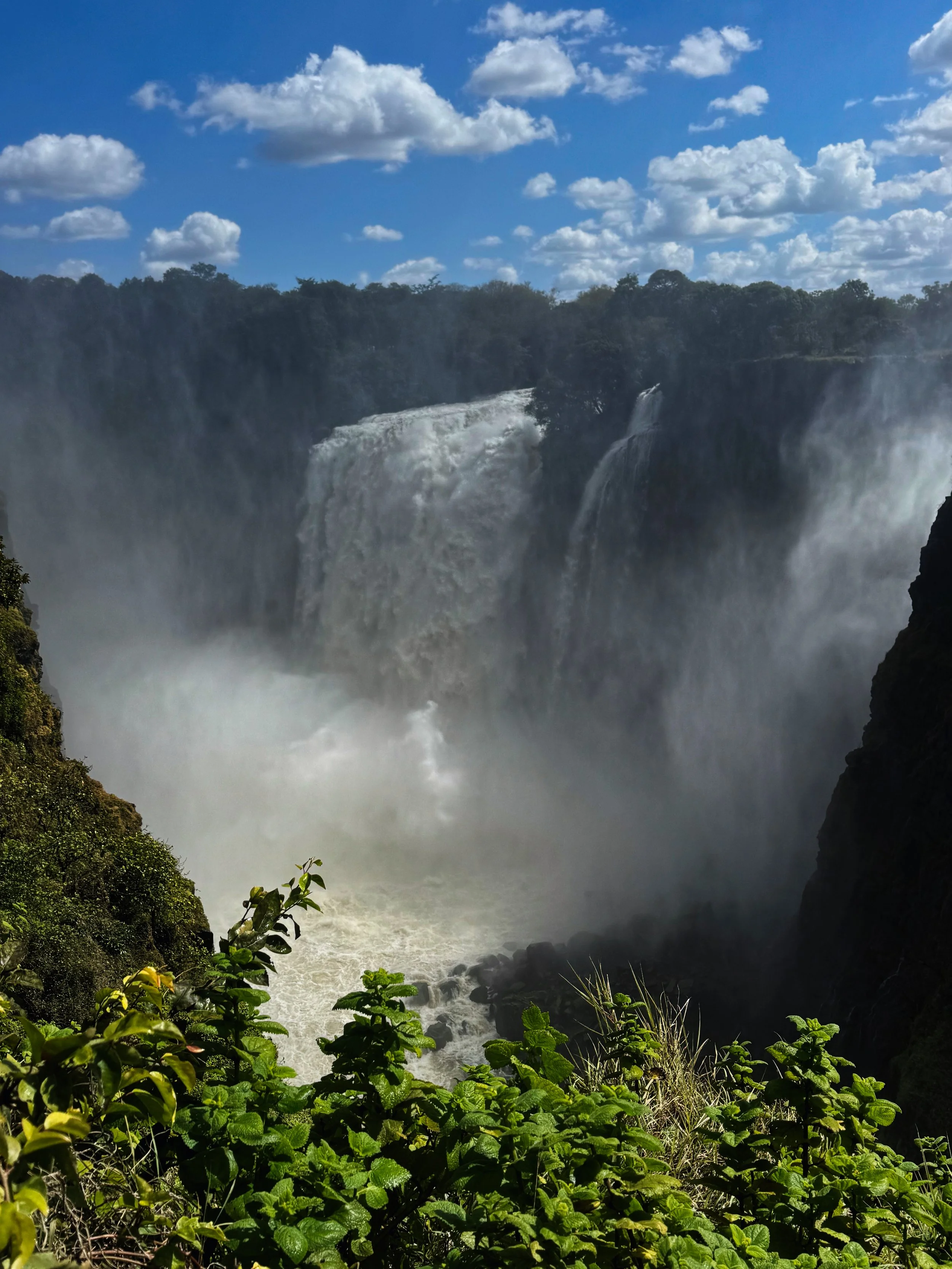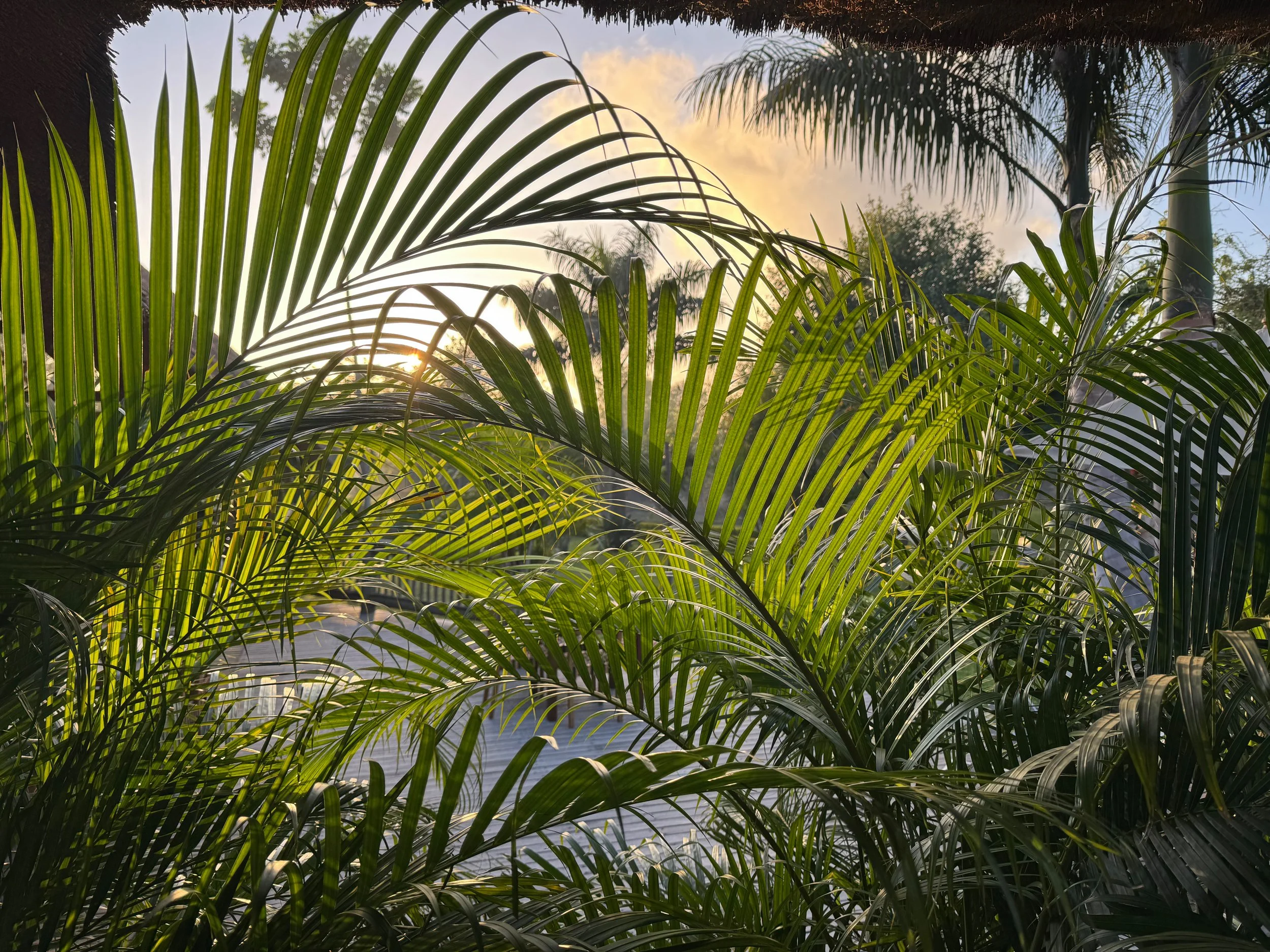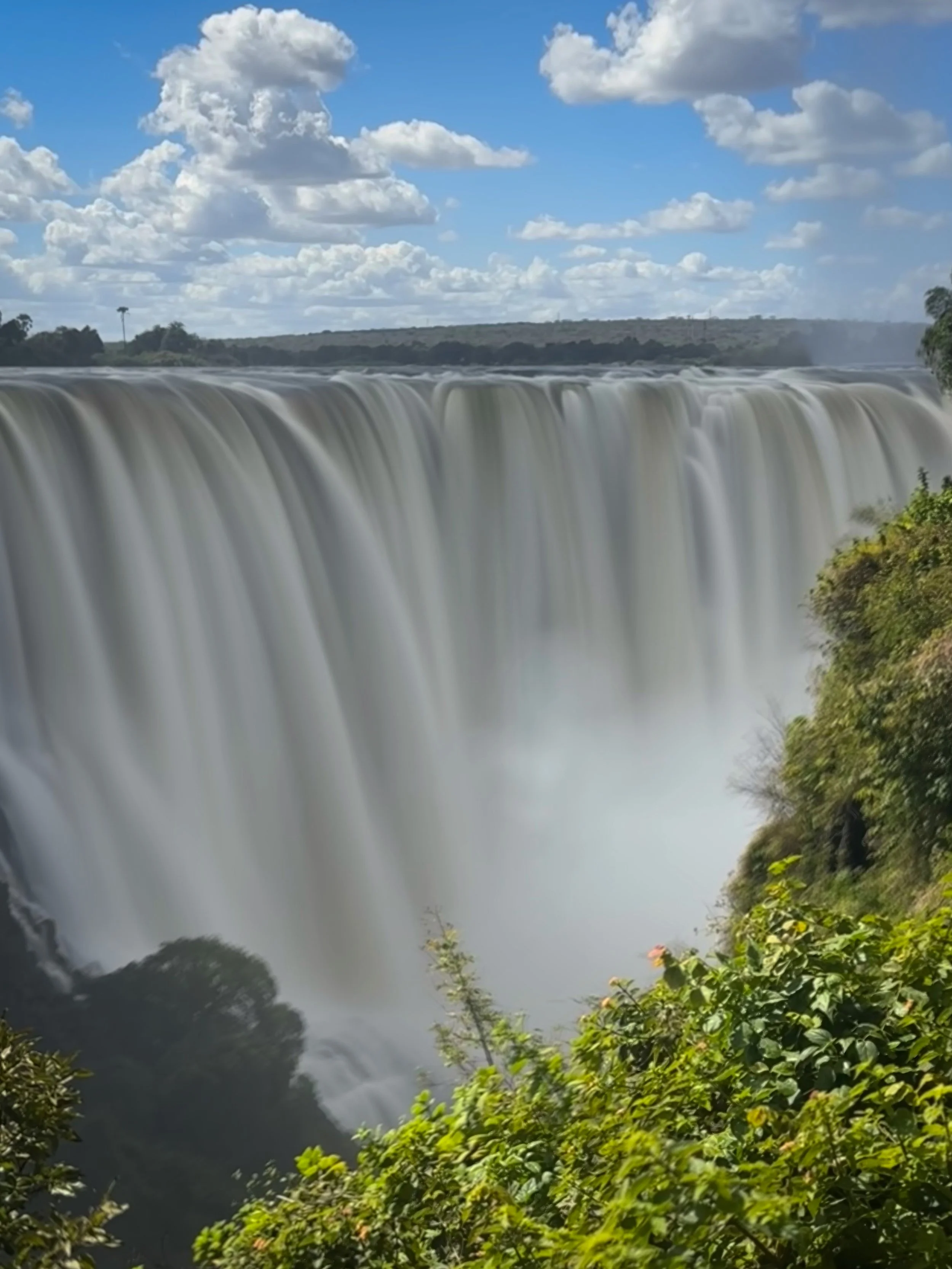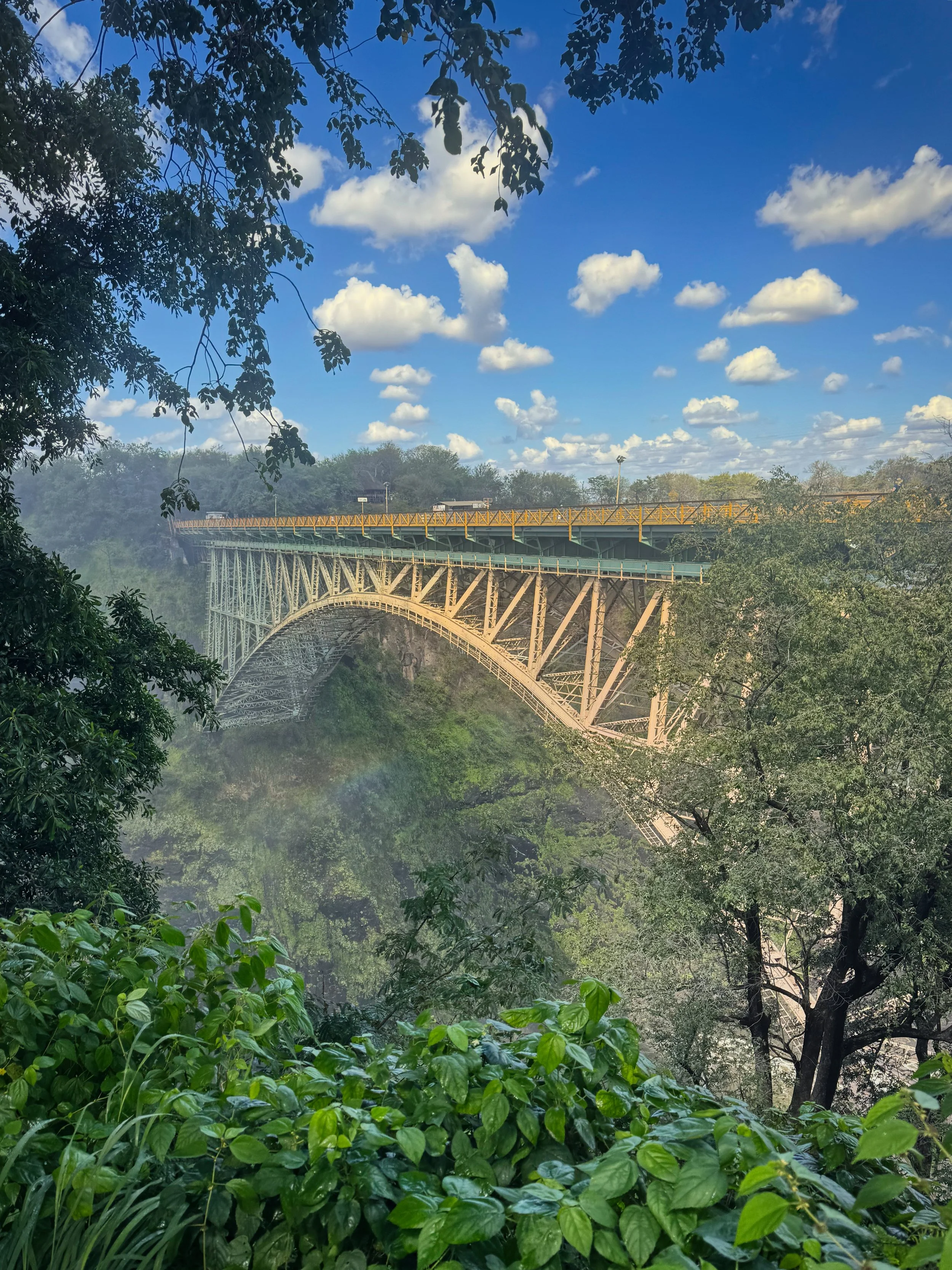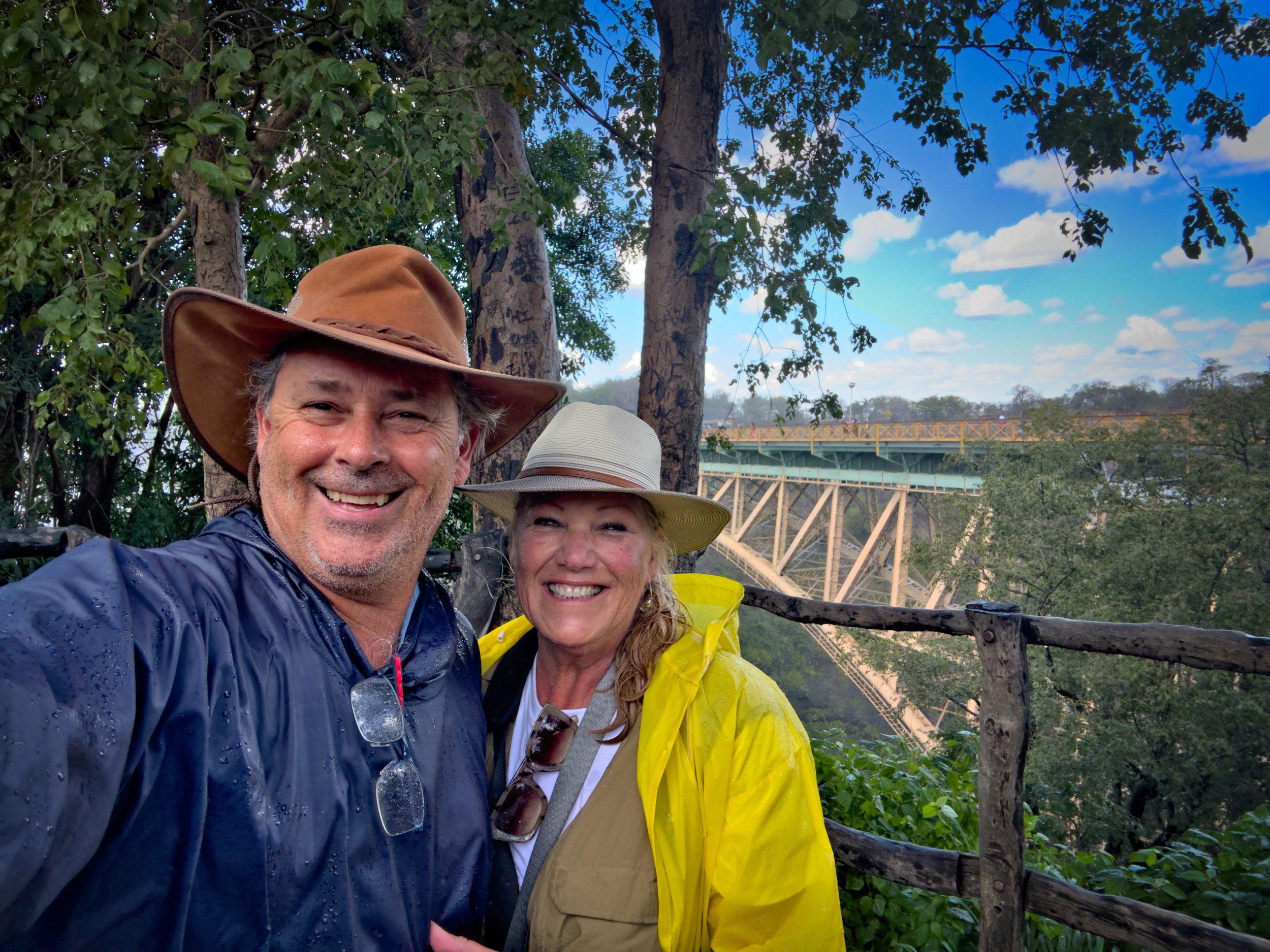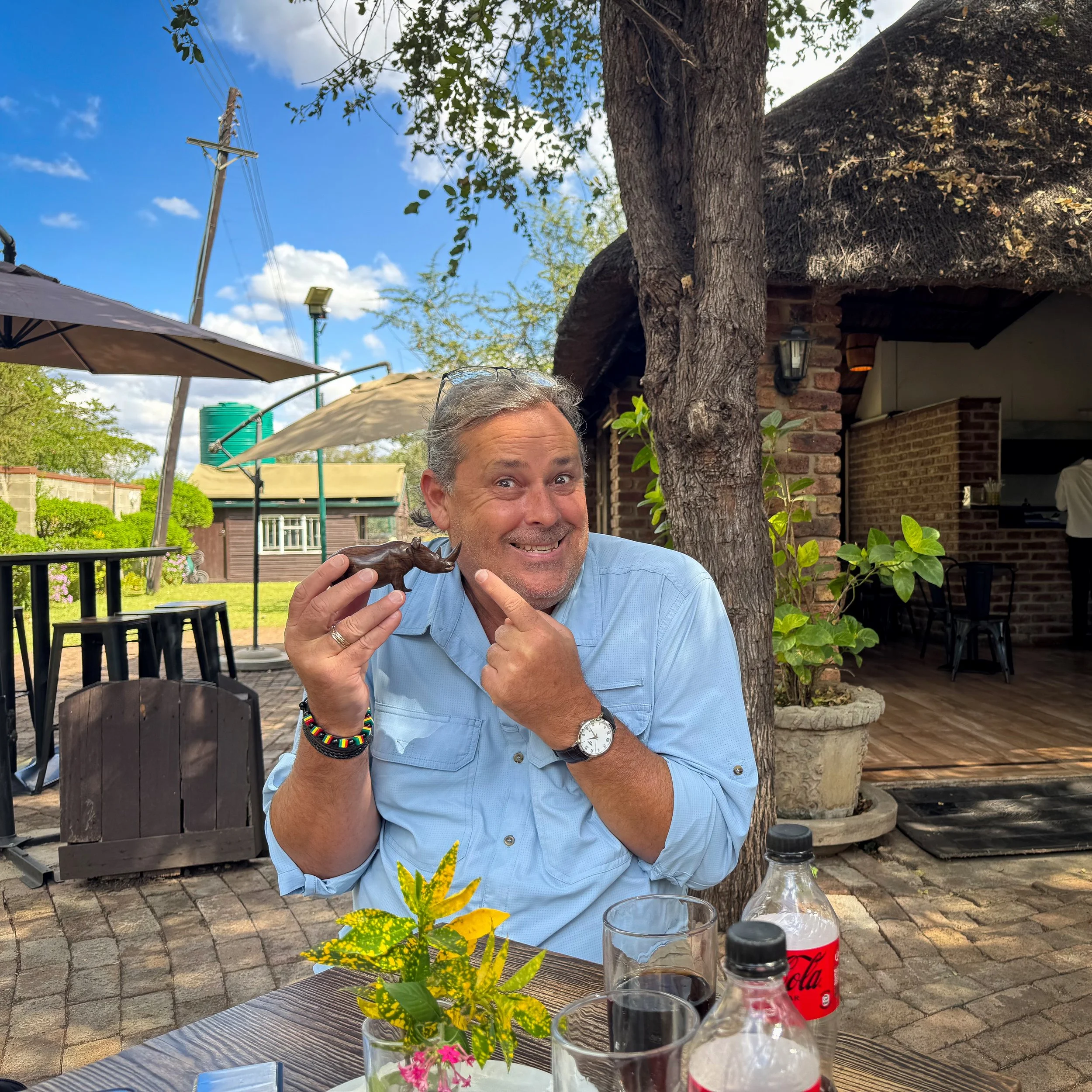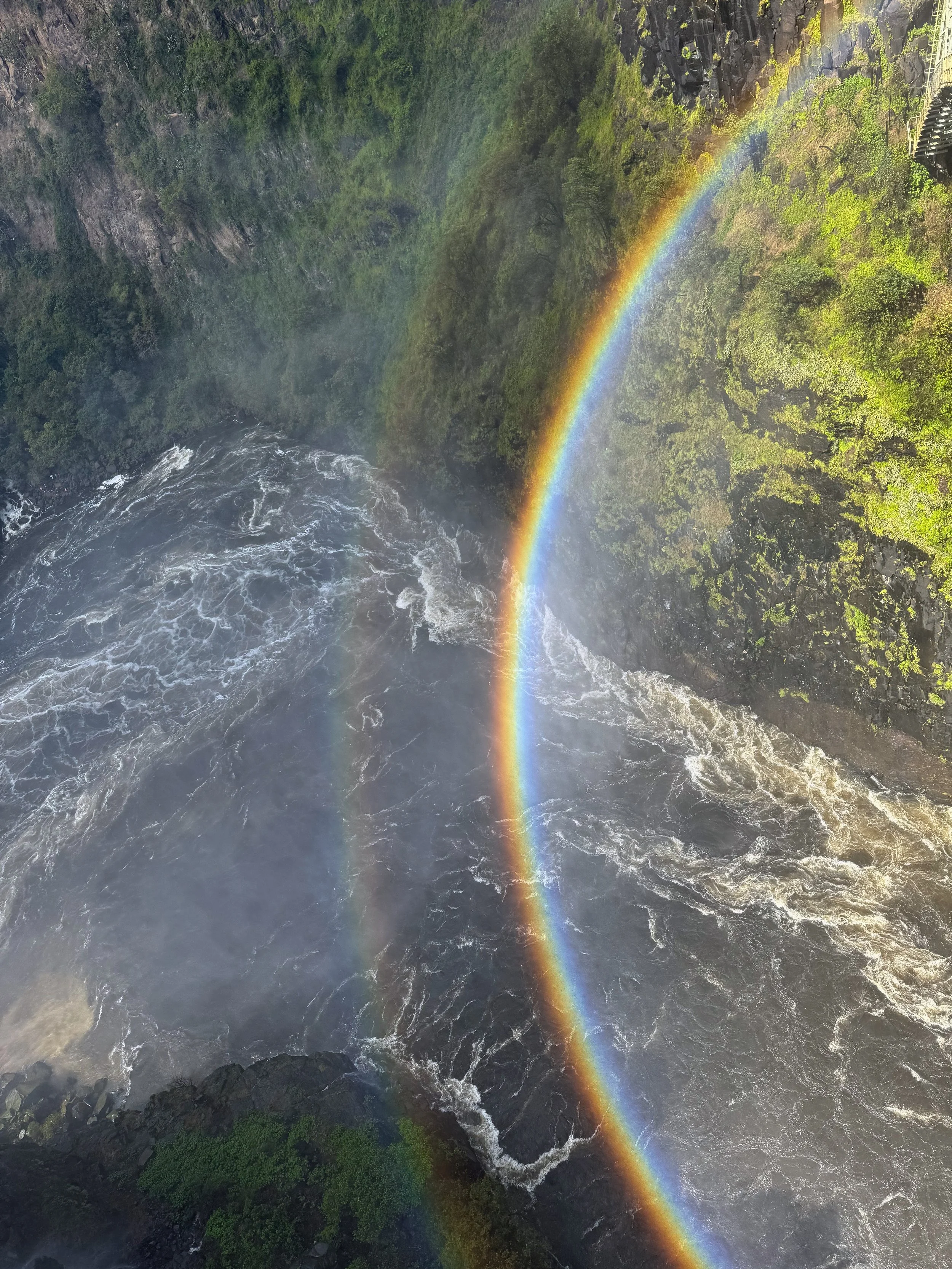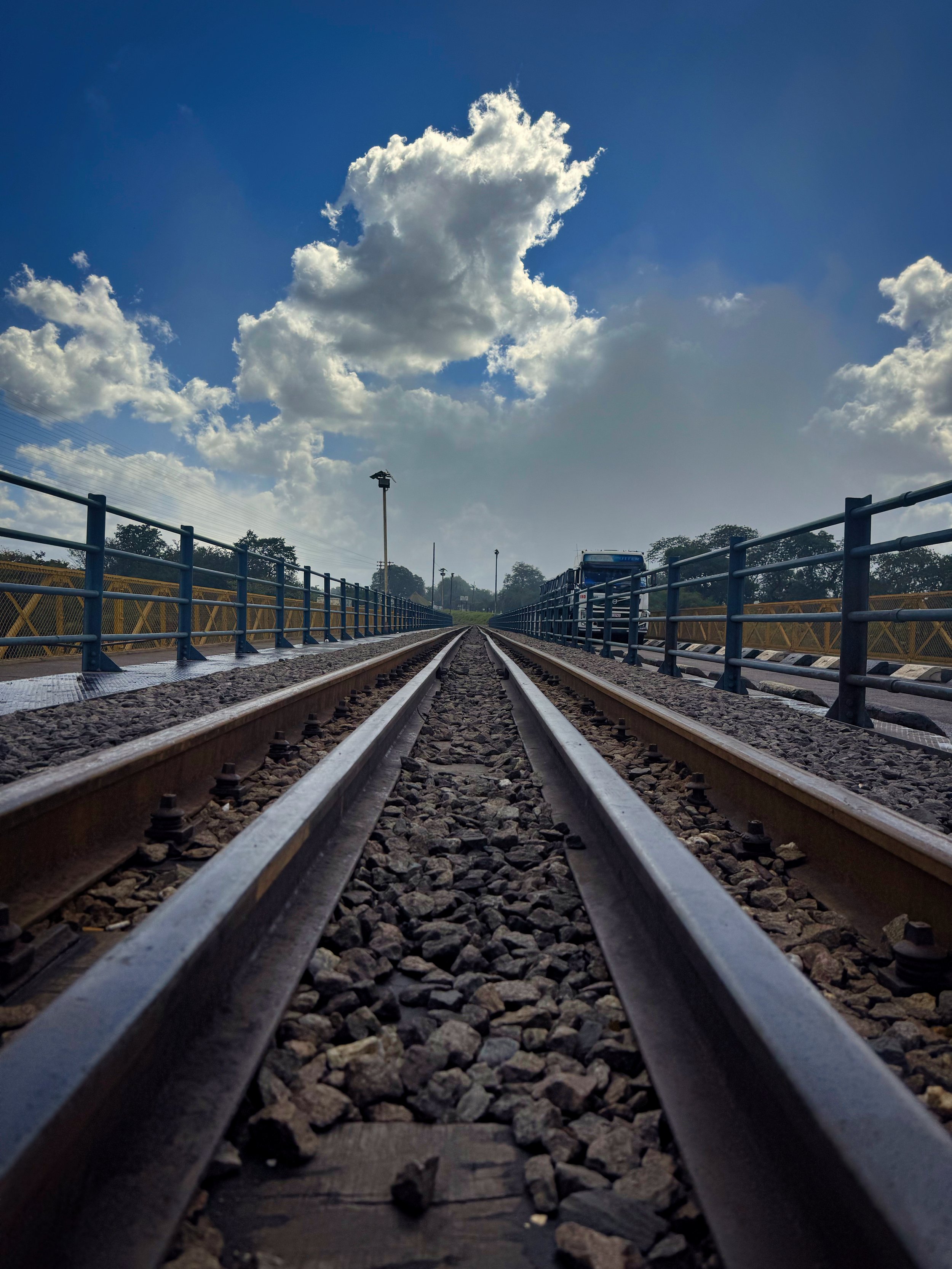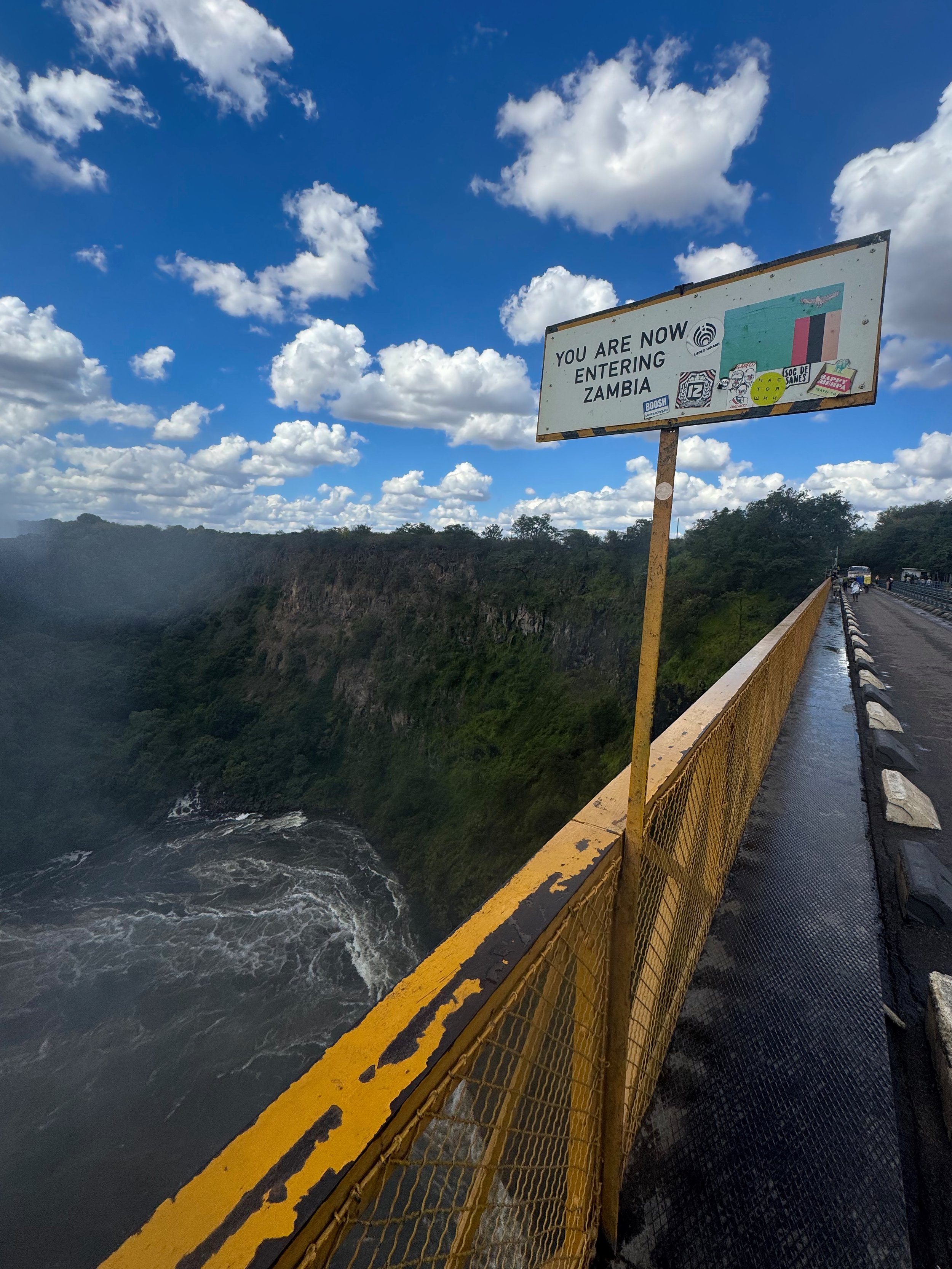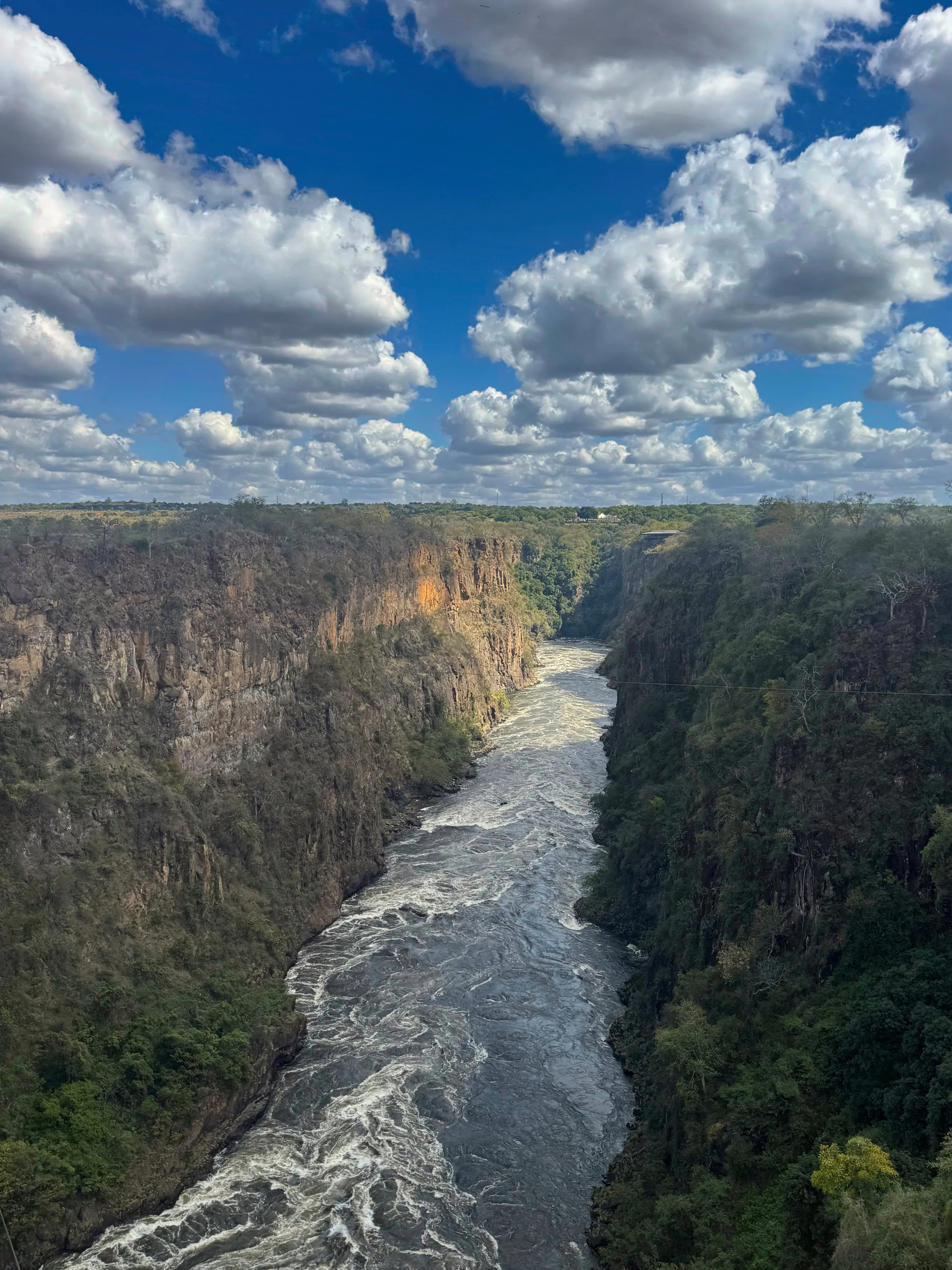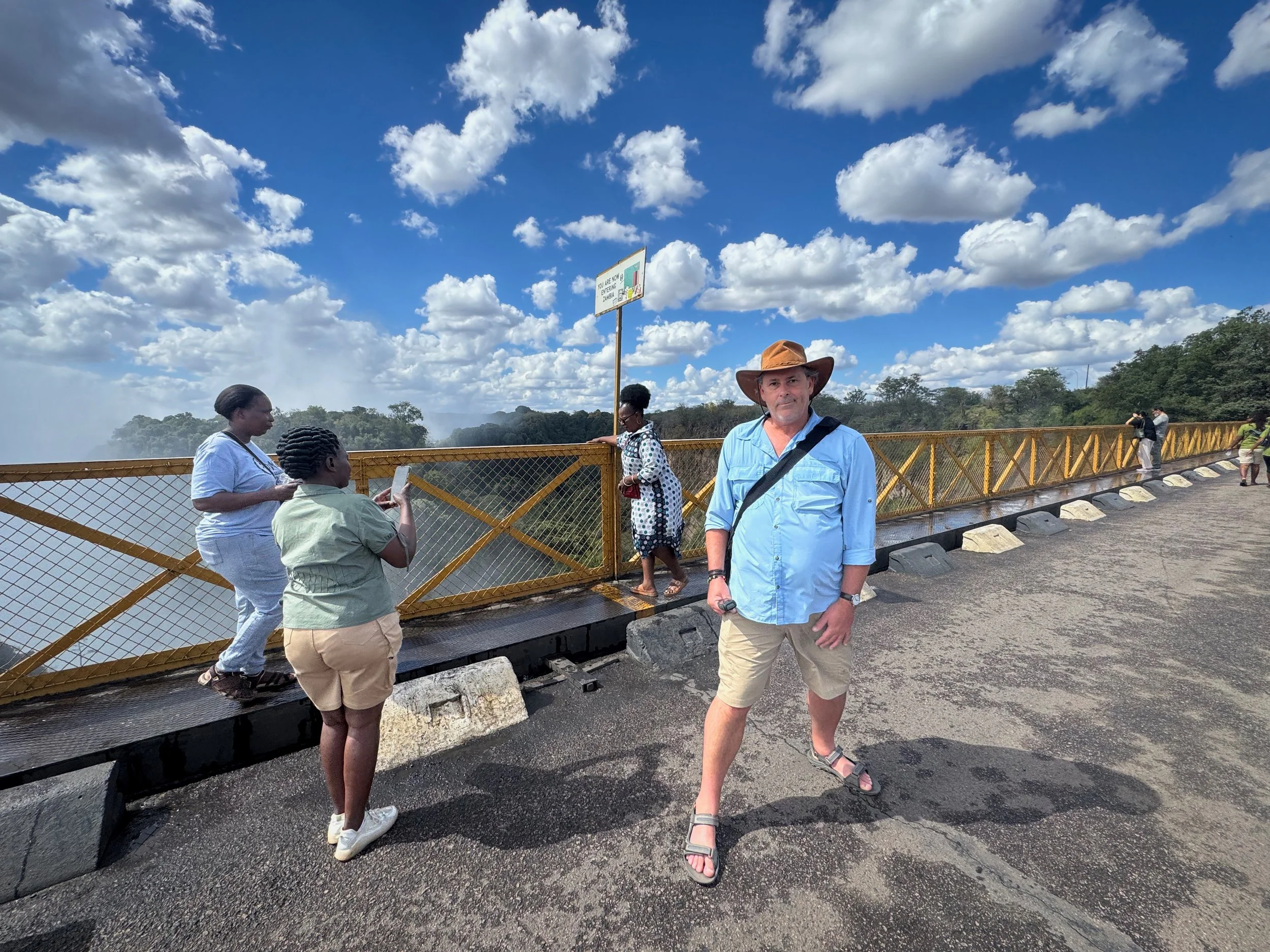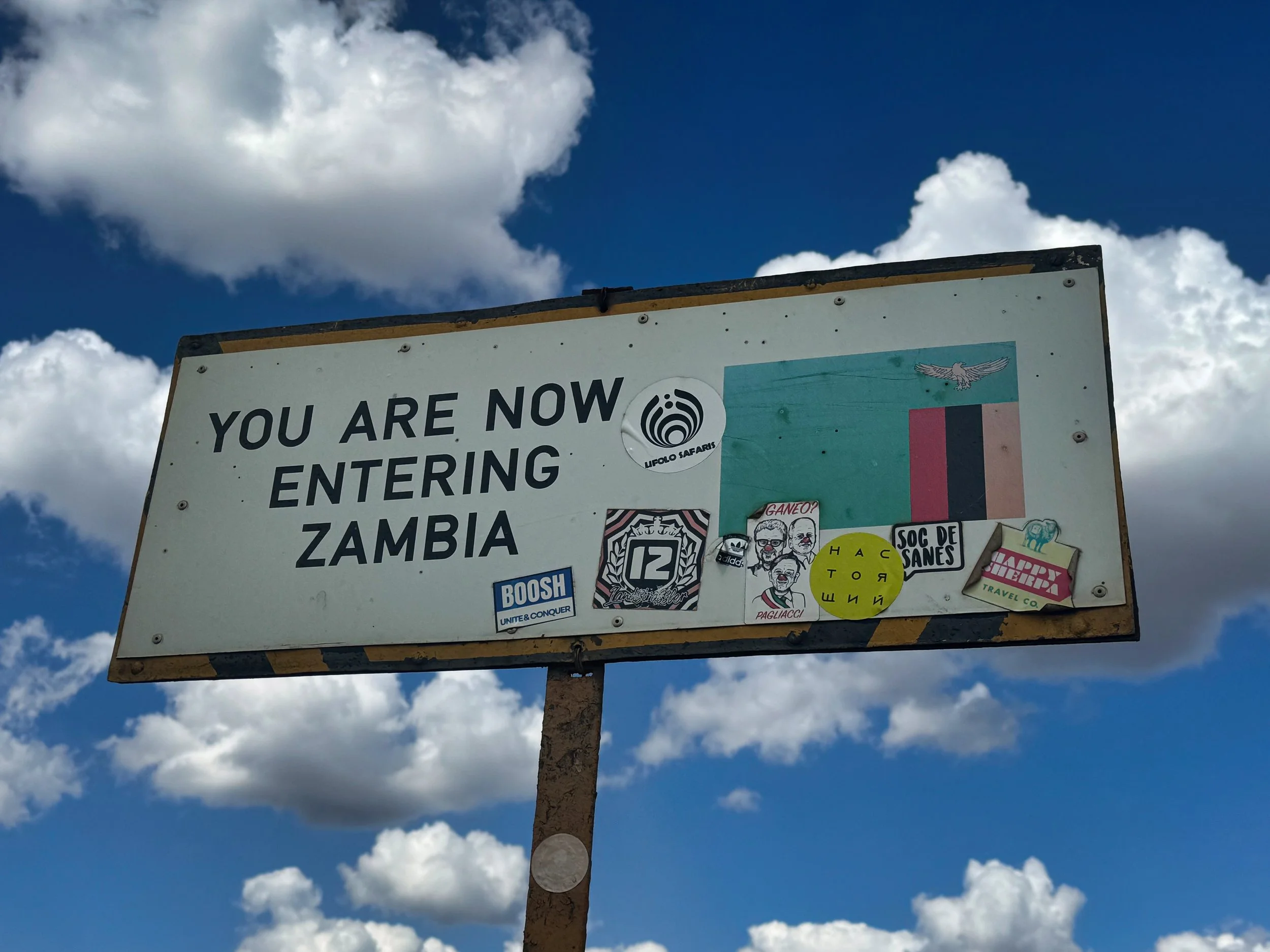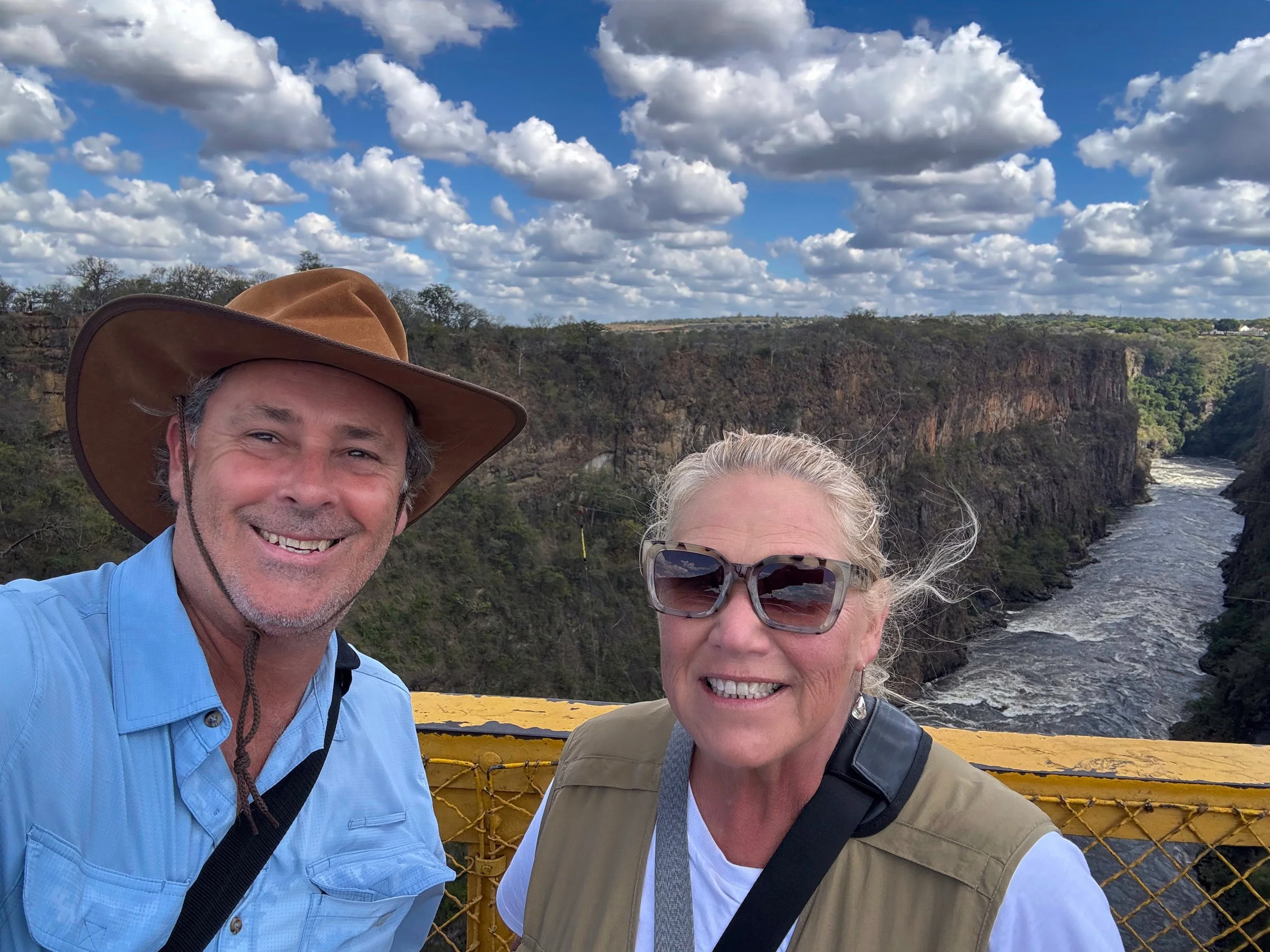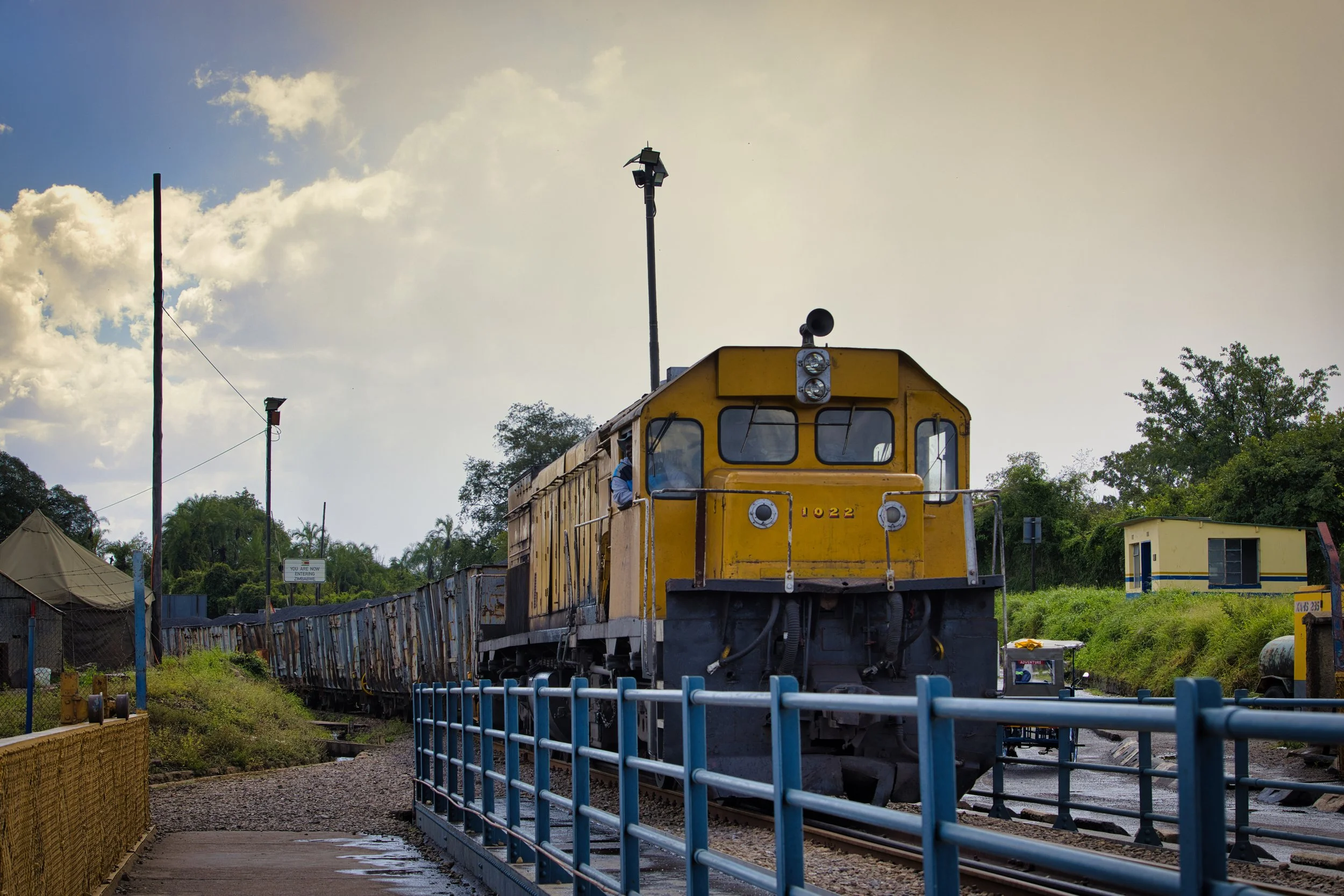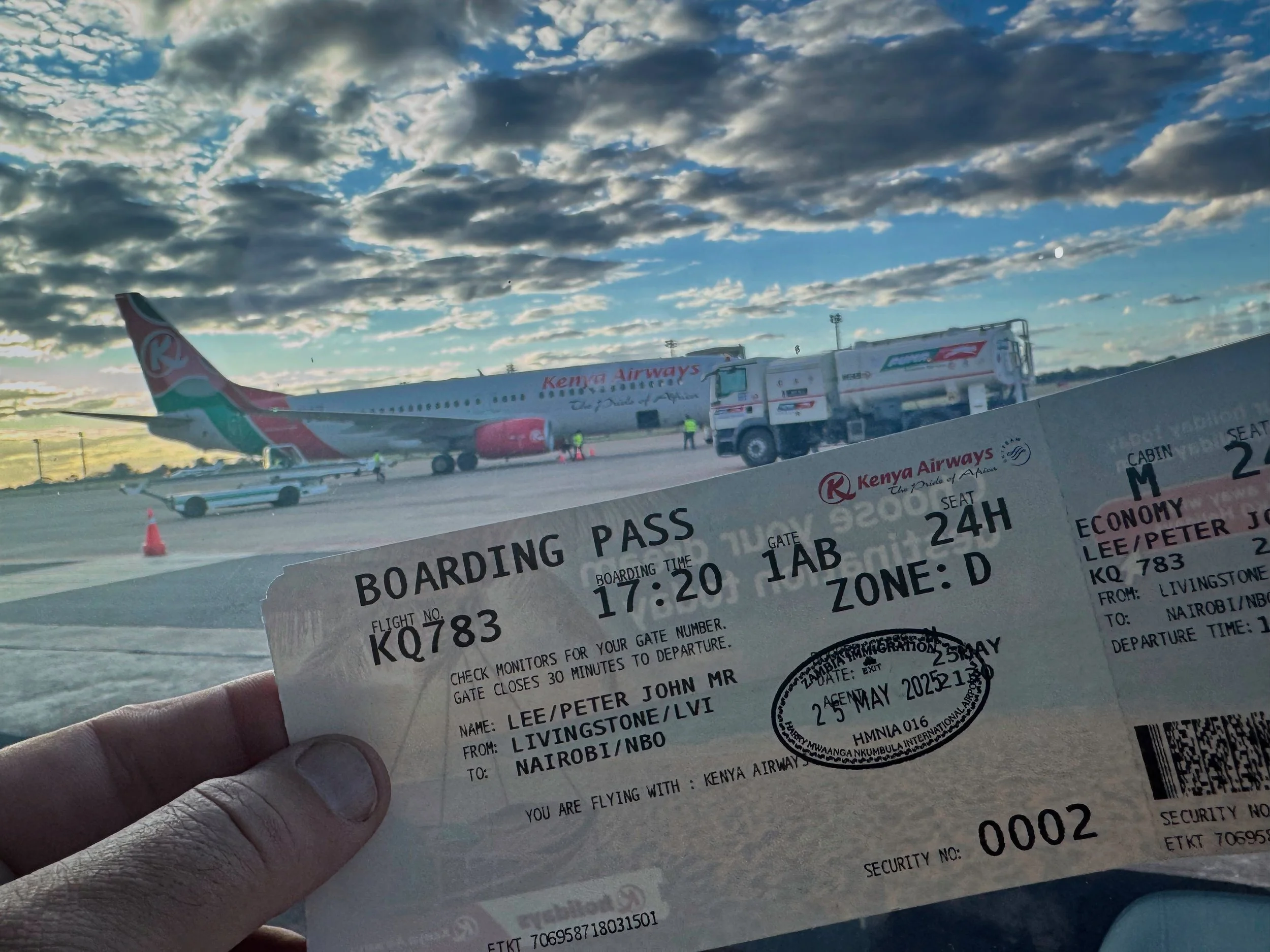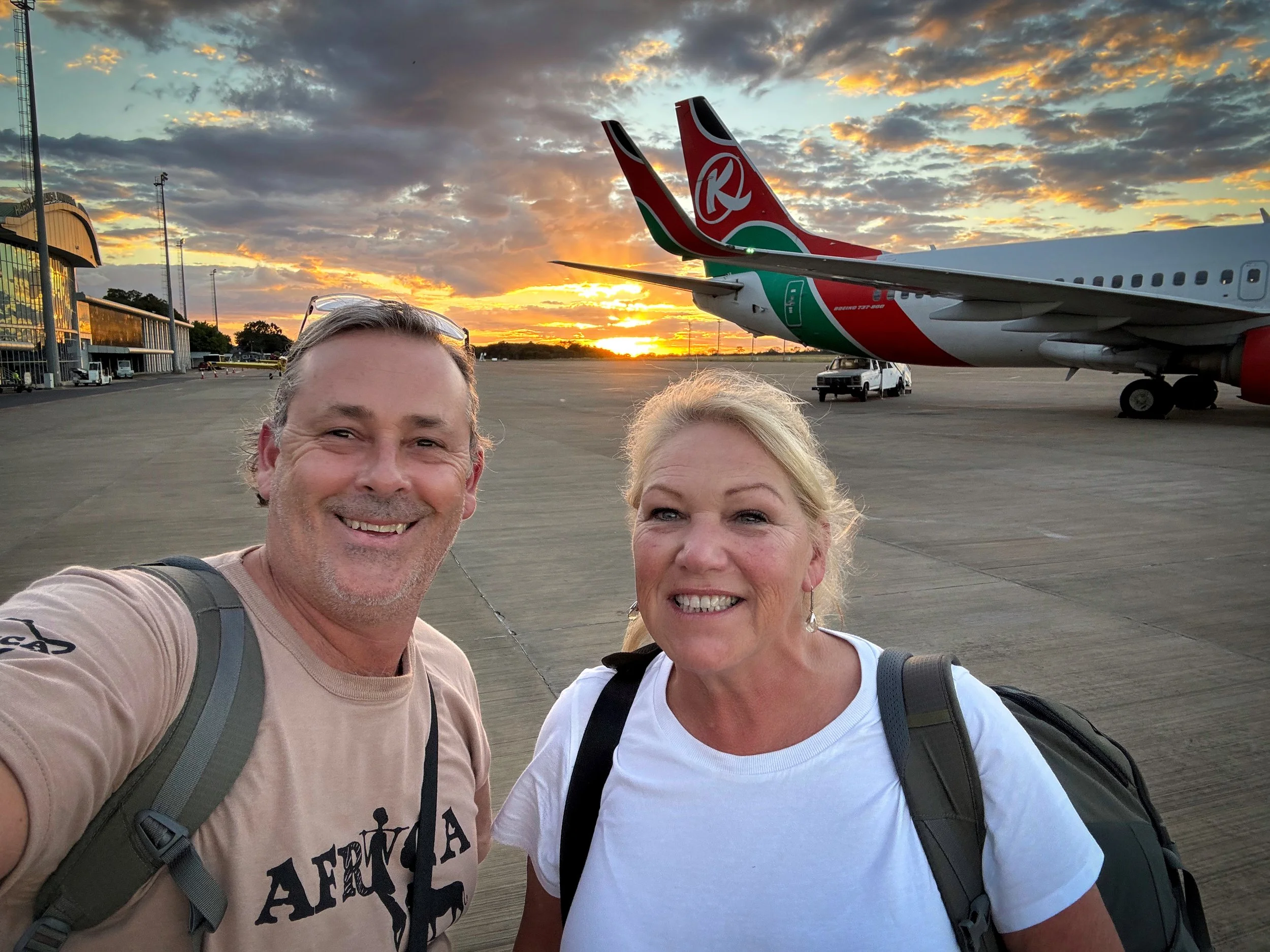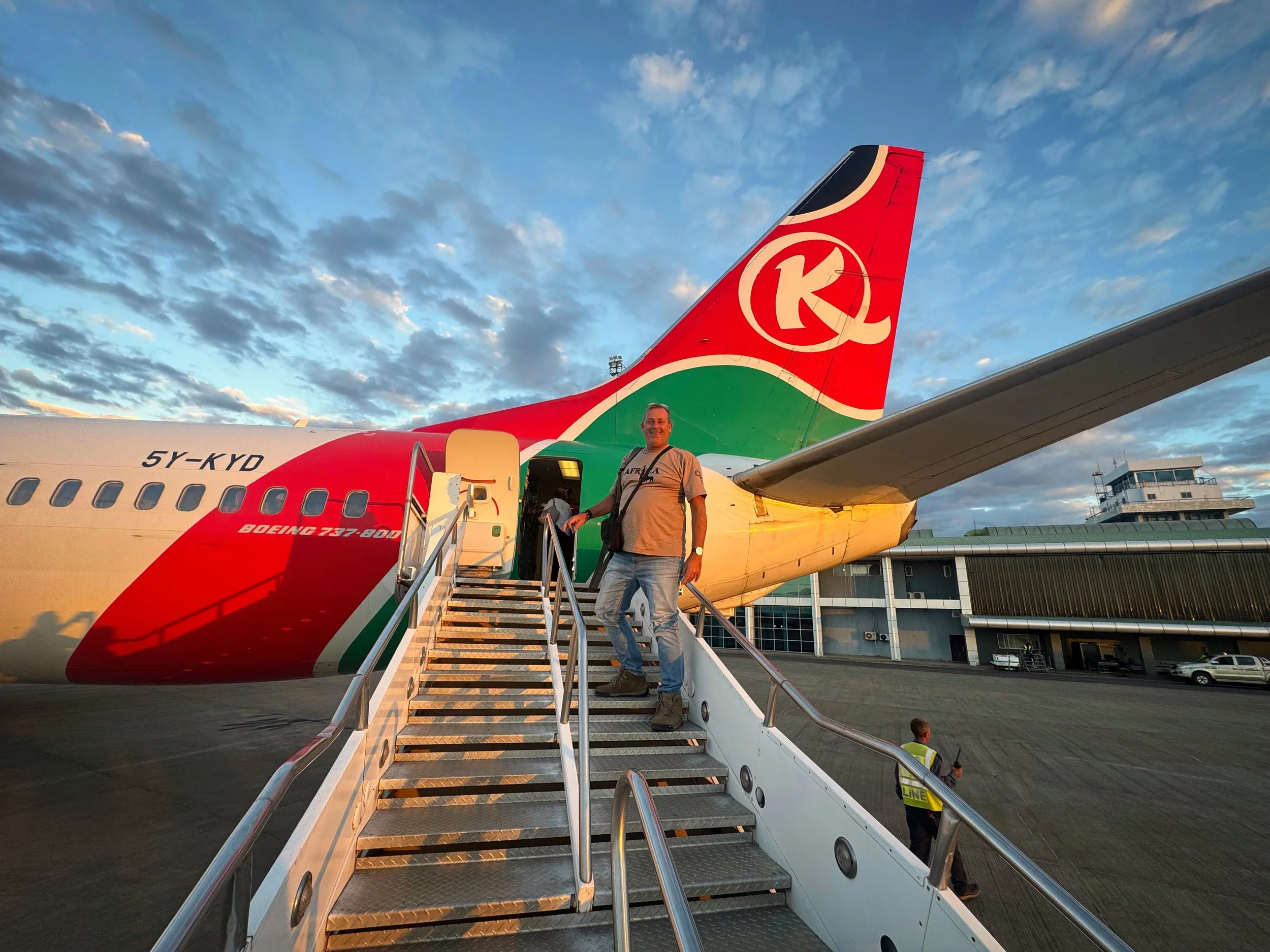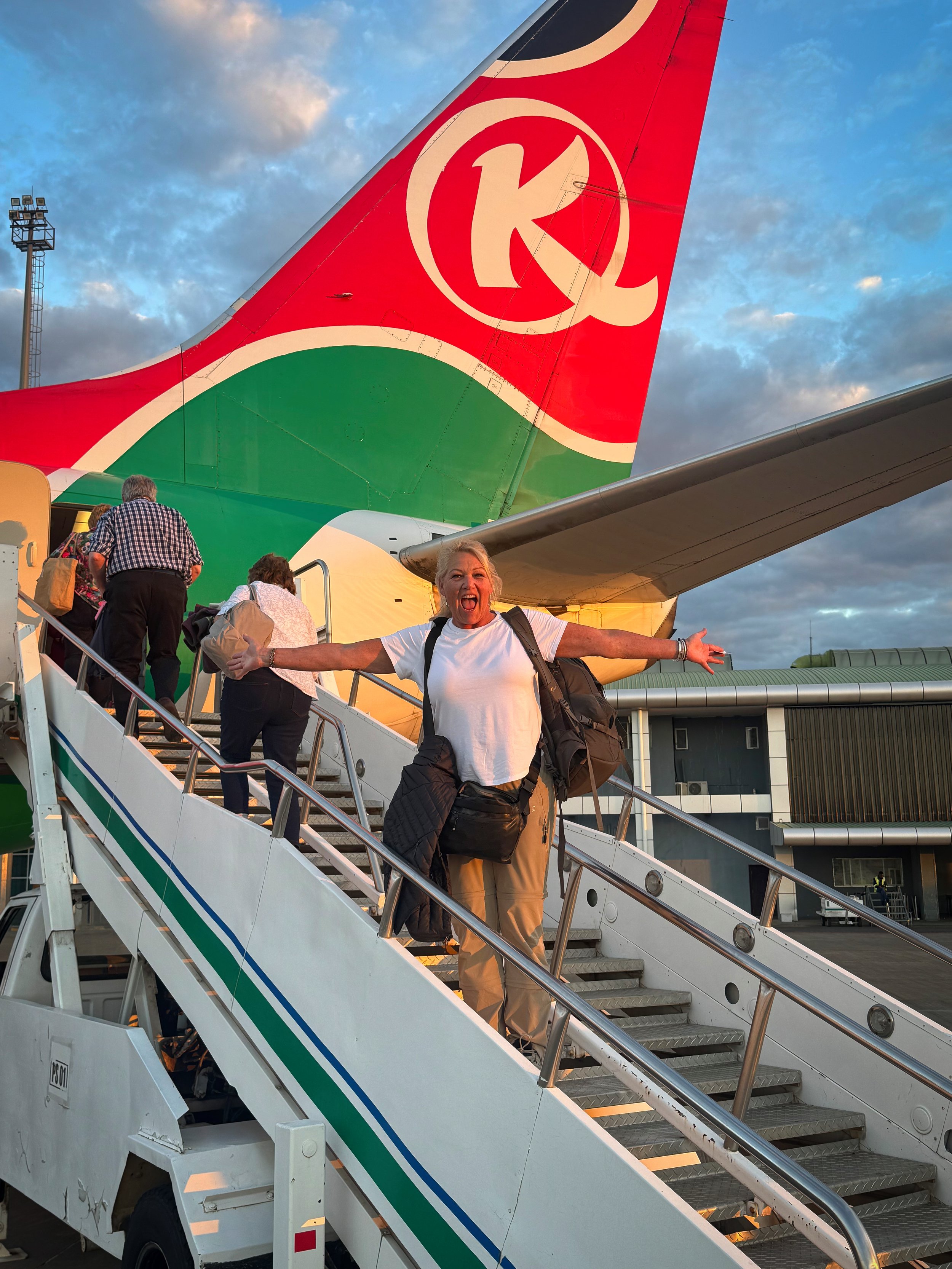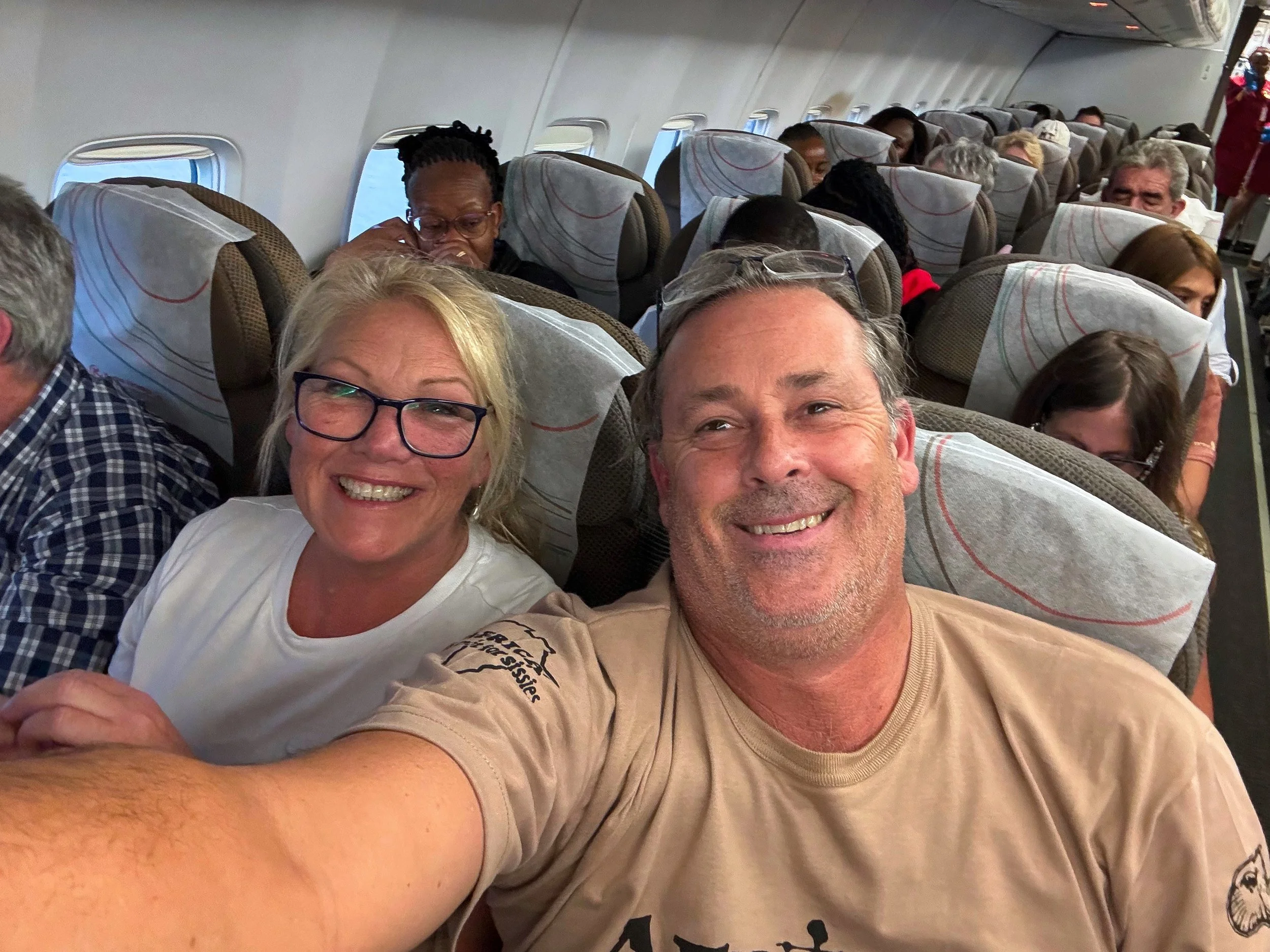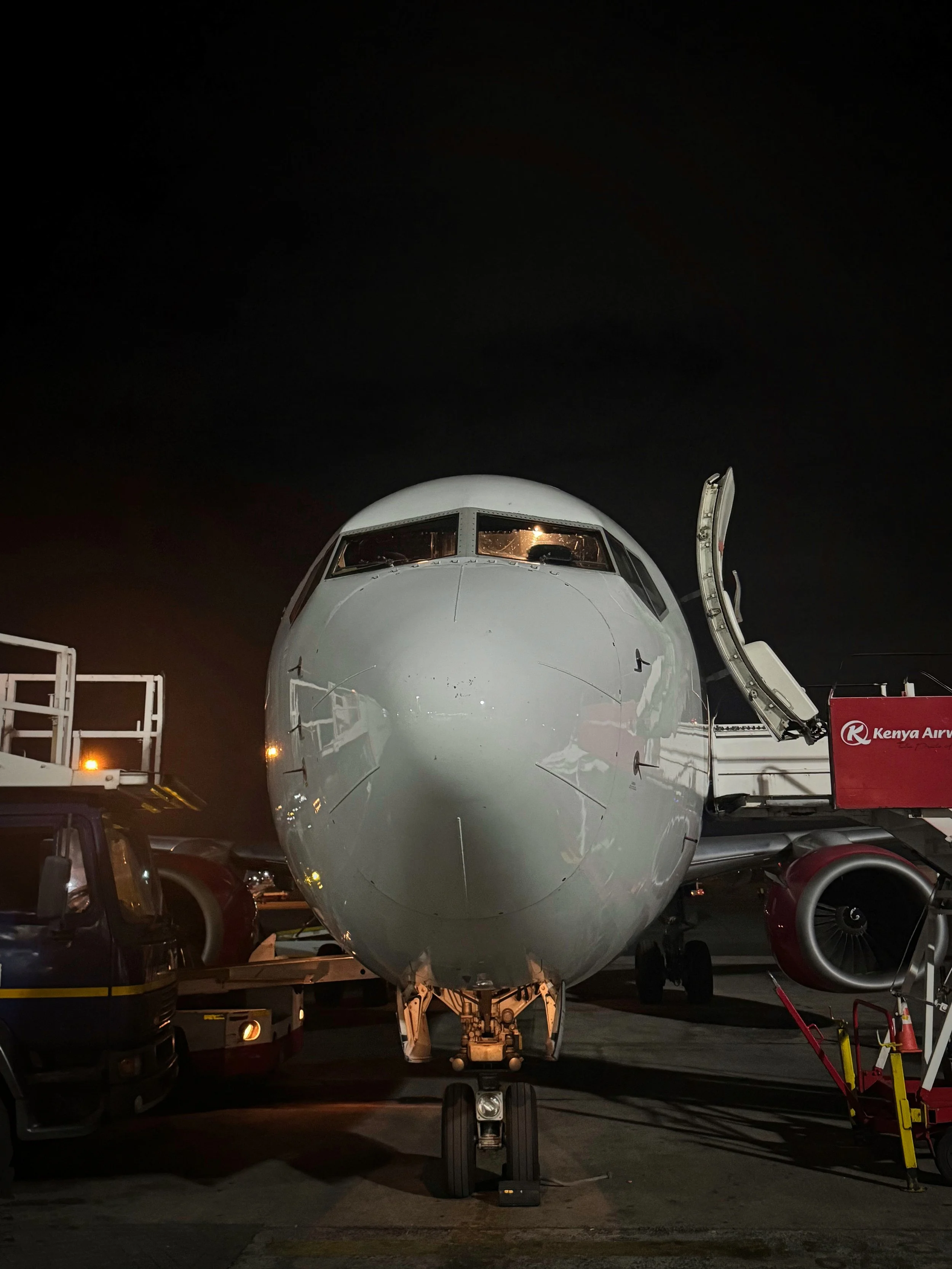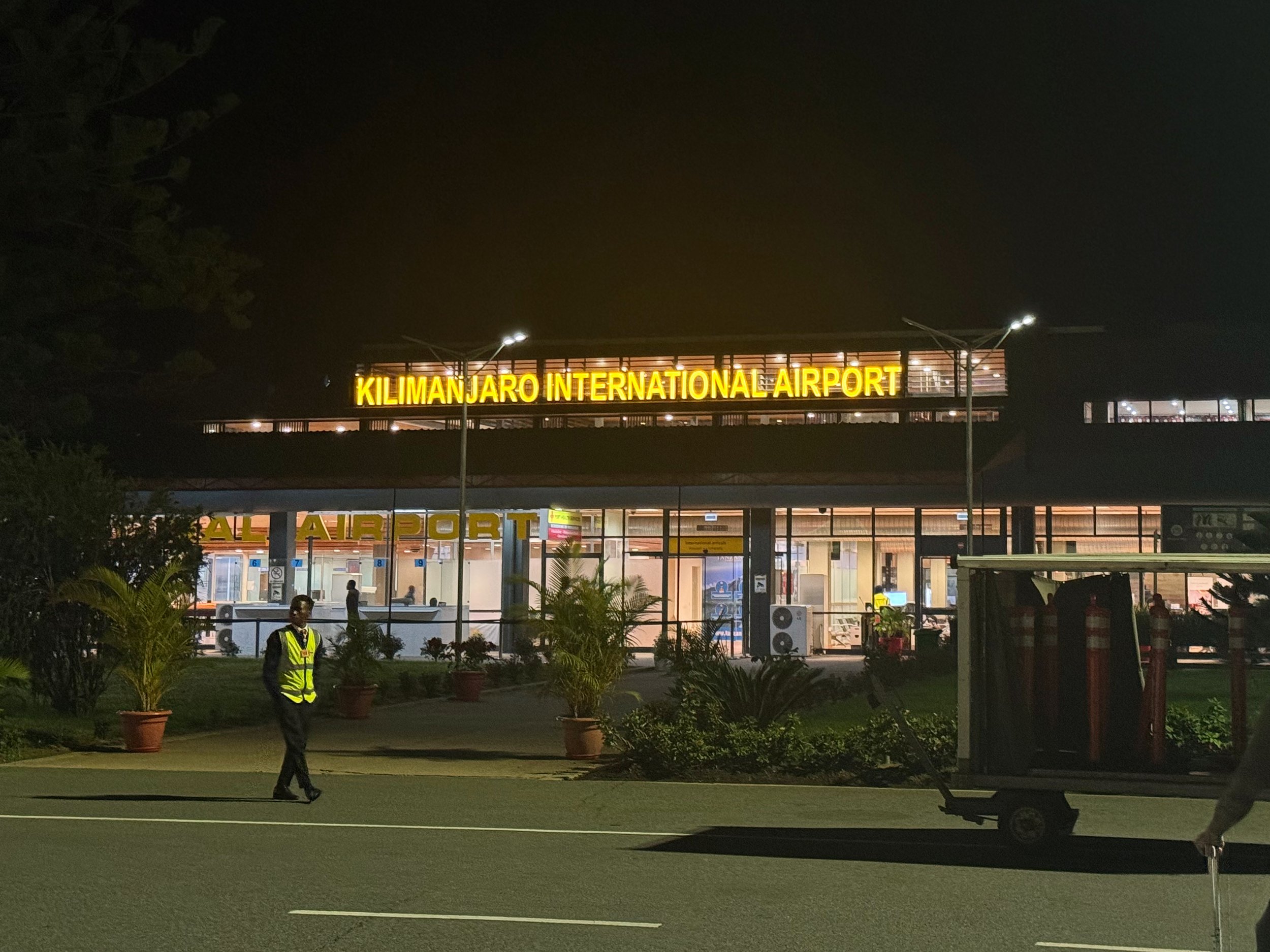Sunset XI - Moshi
It was heavenly sleeping on a mattress thicker than 2 inches, not having to blow up your pillow or move your arms freely without hitting your companion or scattering your worldly possessions in a cyclonic fashion across your 4sqm tent. But it was also a little sad not to unzip that tent to find a cracking sunrise or the face of a newly made friend. We did though wake refreshed and ready to roll, which was a good thing for today we’d be going at it till the early hours of tomorrow. After a quick breakfast our first port of call was being picked up for a scenic helicopter flight over the majestic Victoria Falls with Wild Horizons.
We arrived at the fabulously named Elephant Hills Heliport to the clap of rotors smacking the cold air by a procession of Bell Jet Rangers landing, seamlessly re-loading passenger, then taking off again. Had they been painted camouflage green with A Fortunate Son blaring from a PA and not just in Fatpap’s internal monologue, it could have been any number of Vietnam war movies churned out in the 1990’s. After being publicly weighed and allocated a seat accordingly, we ran out to the helipad, stooped over just like in the movies, and safely strapped in by the entourage of assistants.
In the native Lozi language, Mosi-oa-Tunya means "the smoke that thunders", and Victoria Falls certainly does that. Located on the Zambezi River, right on the border between Zambia and Zimbabwe, Victoria Falls is the worlds largest by surface area. While not individually the highest or widest, its combined width of 1,708 meters and height of 108 create the world's largest sheet of falling water discharging over 500 million litres per minute.
The falls were formed through a combination of volcanic activity, erosion, and the unique geological structure of the Zambezi River area. During the Jurassic Period 150-200 million years ago, volcanic eruptions deposited thick layers of basalt in the region that over time developed cracks as it cooled and solidified. The ancient Zambezi River began flowing over this basalt plateau from north to south gradually eroding the softer sandstone filling those cracks to carve out a series of curtain-like waterfalls and gorges.
With the outer edges of these falls prone to greater erosion, the water flow focuses on those weak points causing the erosion to further intensify and channelling even more water away from the furthest point in the curtain where it at some stage stops flowing altogether. The new gorge cuts its way back until the river encounters another east-west trending joint with its soft sandstone infill and the whole process starts over again. The current falls are the most recent manifestation of at least seven older, extinct falls of comparable magnitude created by a shift in river systems that began by geological upheavals in southern central Africa some 15 million years ago.
David Livingstone was the first recorded European to view the falls in November 1855 from an island in the middle of the upstream river now oddly known as Livingstone Island. Naming his discovery in honour of Queen Victoria, he made reference to an older name, Chongwe, meaning "the place of the rainbow"as a nod to the constant spray. From our flight this spray was visible for miles and rose from the crack in the earths surface like a steaming New York subway vent on natures steroids.
It’s been read many times, even personally told that visiting the falls is pointless unless you do the Flight of Angels. Having now done that very thing, we can say that counsel is not entirely true, but through a domed helicopter window at 2,000 feet, Victoria Falls is supremely impressive and undoubtedly a natural wonder of the world. The lack of any Lyndall selfies in this stanza wasn’t planned, it was more reflective of her state of being during the flight. From the coveted front seat position her tears began shortly after lift off and continued for the entirety of the 30 minute flight. Vic Falls was one of Lyndall’s “must do” destinations for this adventure and it’s safe to say she was somewhat overwhelmed with the outcome of actually seeing it.
Back on terra firma we both cried a little more before hitching a ride to Shearwater for a new SD card and the short walk to the Victoria Falls National Park. The township around the falls known as Chinotimba is famous for its vibrant community, historical sites and cultural opportunities, but is a clear tourist trap as thousands of visitors funnel through to the NP.
On entry we followed the highly acclaimed Victoria Falls Rainforest Walk offering stunning views of the falls and surrounding rainforest. The main track is a loop trail covering 4km around the rim of the falls with 16 viewing points affording sublime views of the Main Falls, Rainbow Falls, the Horseshoe Falls and Devil’s Cataract. From our lodge you could hear the roar of water day and night, at their rim it was simply thunderous. The spray too was akin to misty rain hence being hoodwinked into renting appropriate ponchos for US$6 a piece. That initially proved advantageous but within 15 minutes we were pretty much soaked to the bone regardless.
David Livingstone is synonymous with the region and an interesting character to boot. He was a Scottish physician, Congregationalist, pioneering christian missionary and African explorer who became one of the most popular British heroes of the late 19th-century Victorian era. Livingstone's fame as an explorer and his obsession with learning the source of the river Nile was founded on the belief that if he could solve that age-old mystery, his infamy would pave influence to end the Swahili slave trade. His subsequent exploration of the central African watershed was the culmination of the classic period of European geographical discovery and colonial penetration of Africa.
The Zambezi River is Africa’s fourth largest and flows eastward from its marshy origins near the Congo border for 3,500 kilometres to meet the Indian Ocean in Mozambique. Meaning “great river”, the Zambezi is exactly that and on our visit carried rainy season flood waters to swell its banks and bring the falls to their highest peak in years.
Up close the falls are absolutely amazing and although just water flowing over rocks, positively mesmerising. The various viewpoints offered distinct angles of the 3 major falls but the constant mist made it difficult to photograph them justly nor keep our lenses clean enough to. We walked the entire track to the famous Victoria Falls Bridge where the mist miraculously dissipated and we could see across to Zambia. The Zambezi river divides Zambia and Zimbabwe with the bridge having a foot in each country.
Conceived in 1900 and completed in 1905, the bridge was the brainchild of Cecil John Rhodes and his vision of linking what are now Zambia and Zimbabwe for trading purposes. The single span design was selected to not distract from the natural beauty of the site and began from opposite ends to meet in the middle. Today it is more famous for Bungee jumping and Zip Lining across the gorge which Cerys boldly did the day before. For over 100 years this bridge has been the only rail link from Zimbabwe to Zambia as well as carrying vehicles and foot traffic. The gorge is actually considered to be no-mans land with border posts on either side so Fatpap goofed around a bit straddling both countries for a photo op.
For our return to town we negotiated a hard bargain with a local Pedicab operator where we had a quick and easy bite to eat before returning to Shearwater Lodge for a shower and to collect our bags.
When curating our grand African odyssey we both really wanted to see Mount Kilimanjaro. Not to climb it, that’s an 8 day event of its own, but just to see it. So with some flight detective work, and at great expense to management, we secured an afternoon flight out of Livingstone Airport for Kilimanjaro Airport via Nairobi, Kenya. Sounded good on paper but was anything but in actuality. Not only was our transfer from Shearwater over an hour late, we learnt Livingstone Airport was located in Zambia facilitating a border crossing over the aforementioned bridge. With passport controls on either side, single lane traffic leading to and from the bridge choked with semi trailers, and a driver with little understanding of urgency, it was a stressful journey leaving us in little doubt we wouldn’t make our flight in time. And by that we mean in time for a gin & tonic which we assure was intravenously required. Suffice to say it all worked out fine and we made it on time to board KQ783 to Nairobi. With a few hours layover in Kenya we pushed through the night to touchdown in our fifth country so far, Tanzania. A 1:00am touchdown saw a 2:00am clearance and a 3:00am arrival to the Hotel Kibo in Moshi.
A driver was meeting us in the morning at 7:00am so we are certain good reader you will guess the mood in the room by now.

